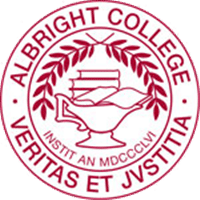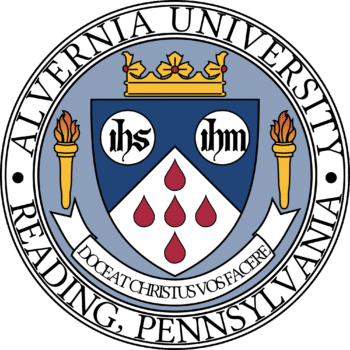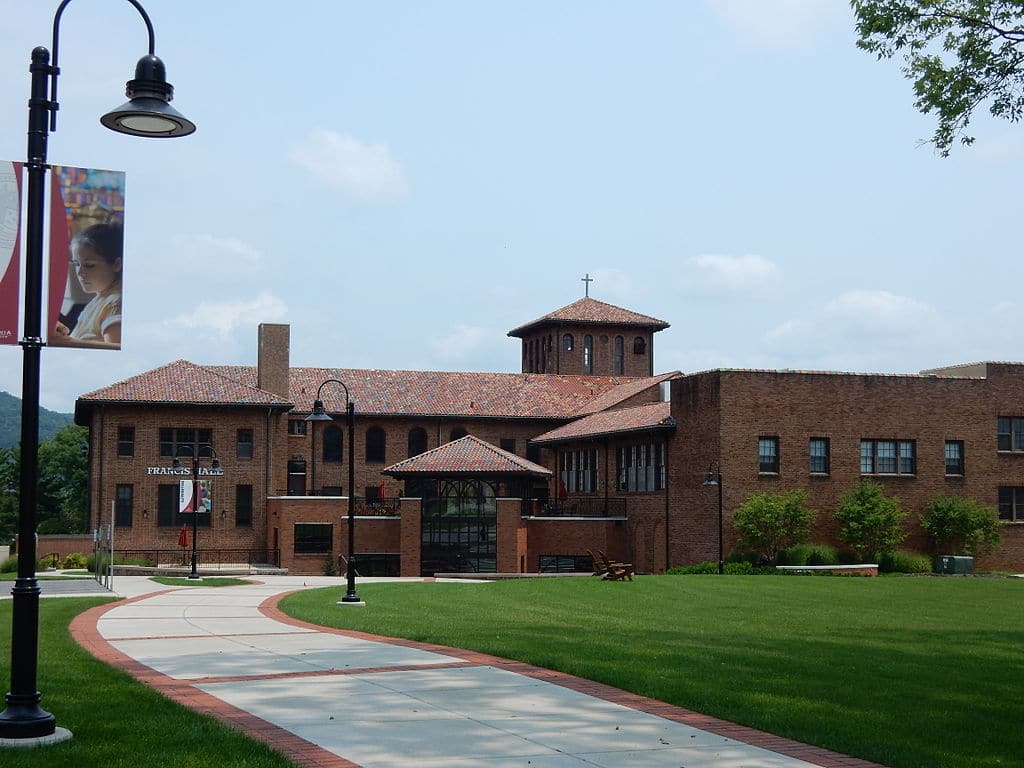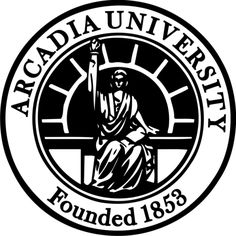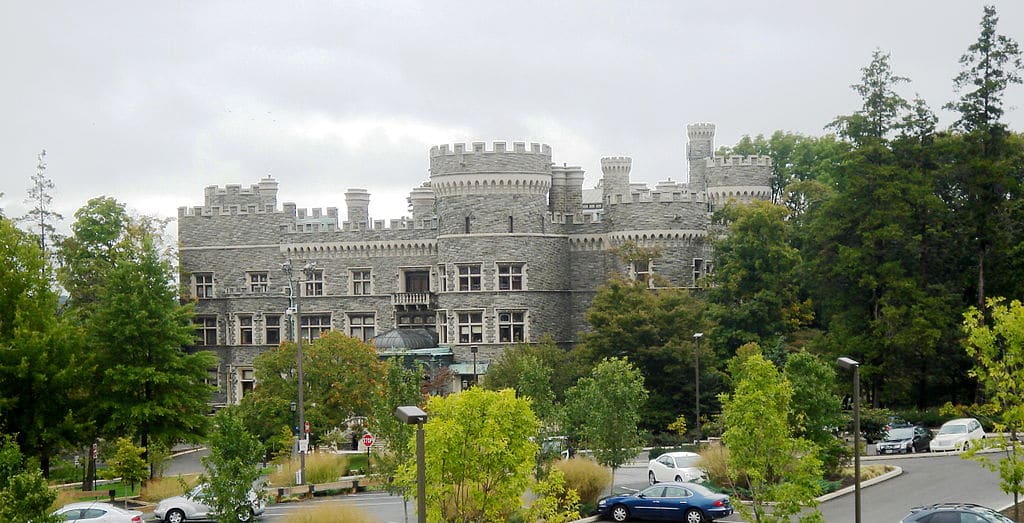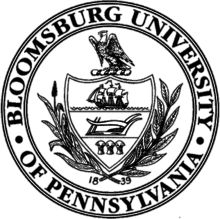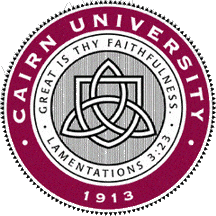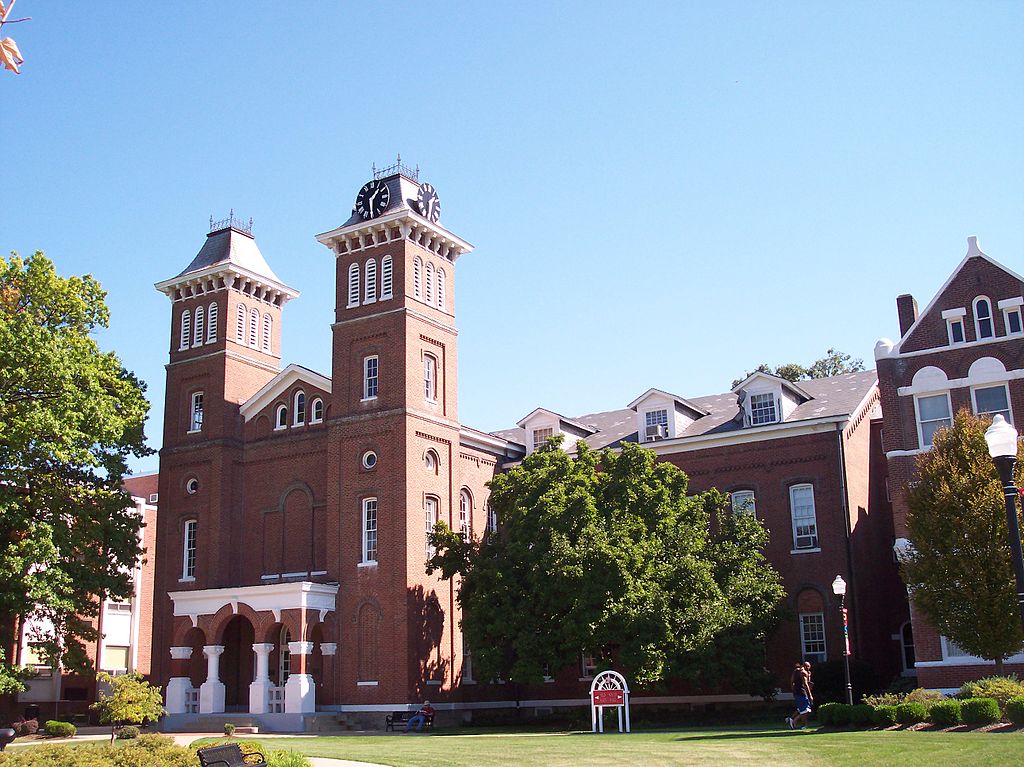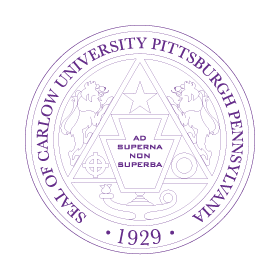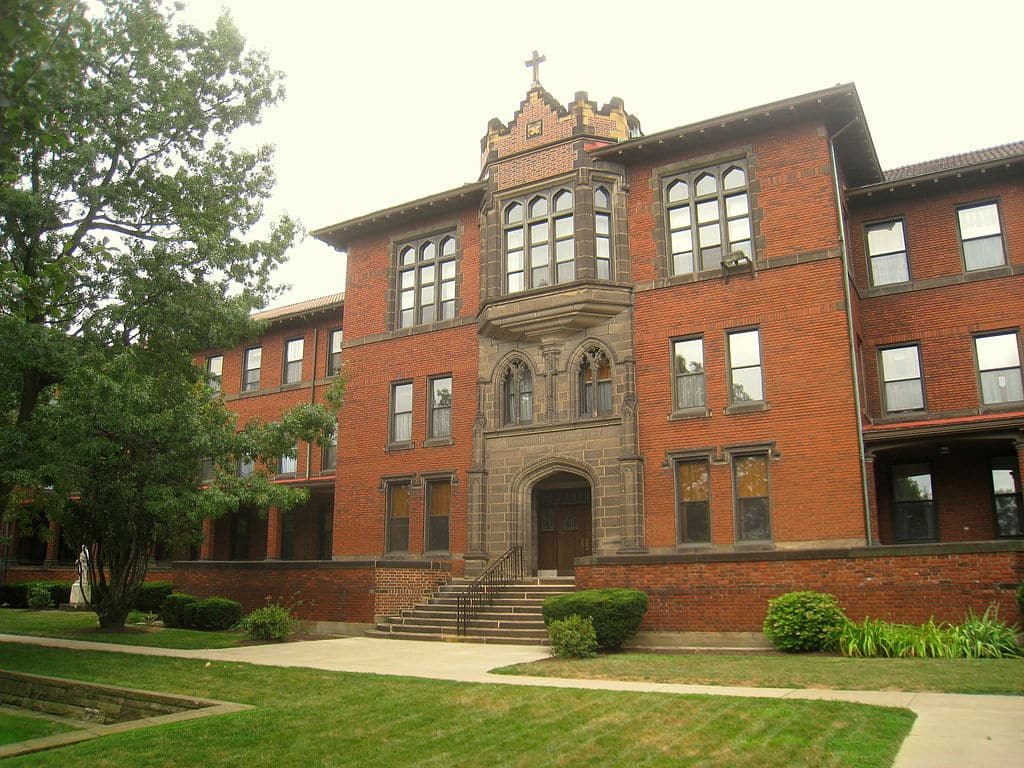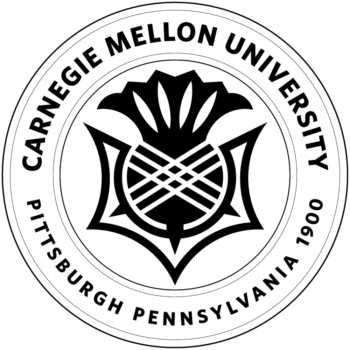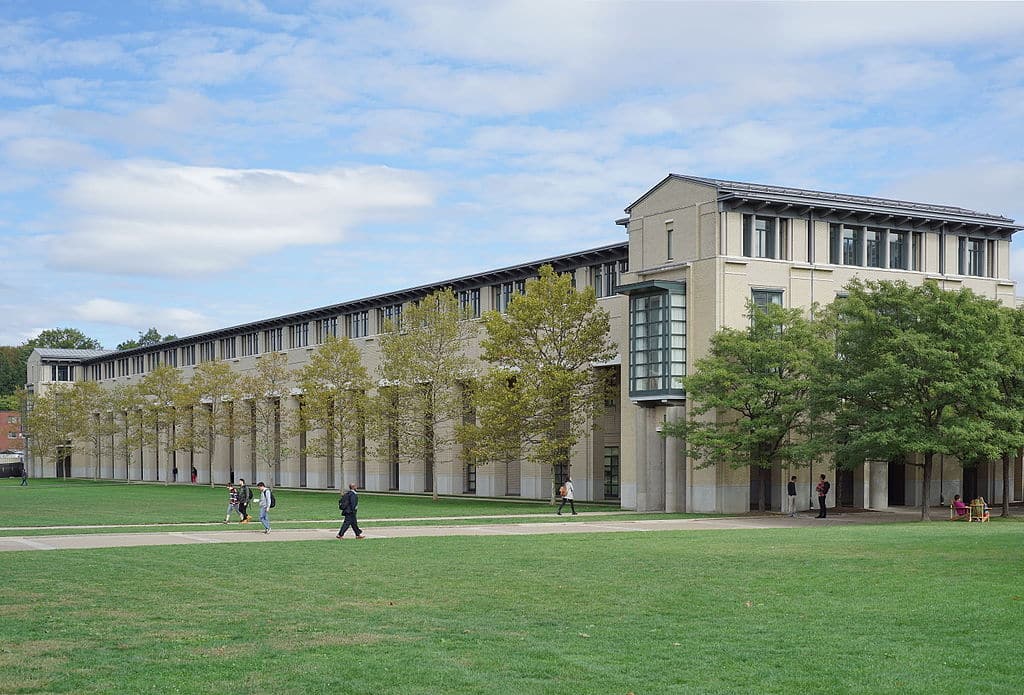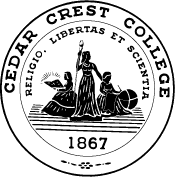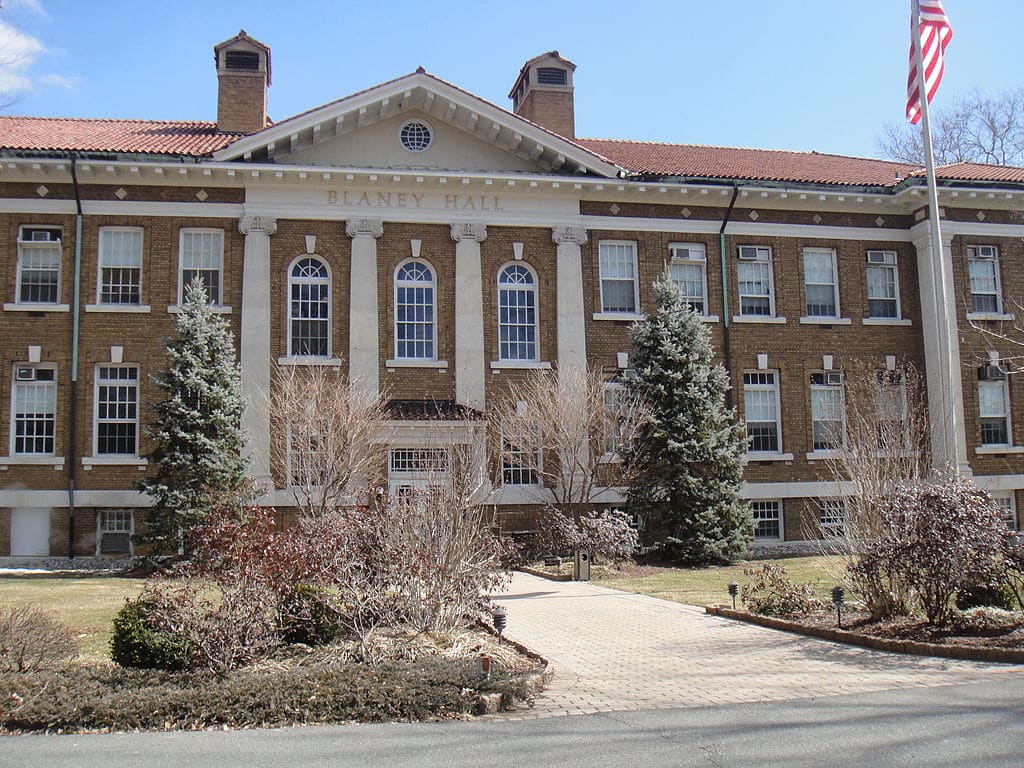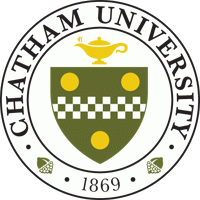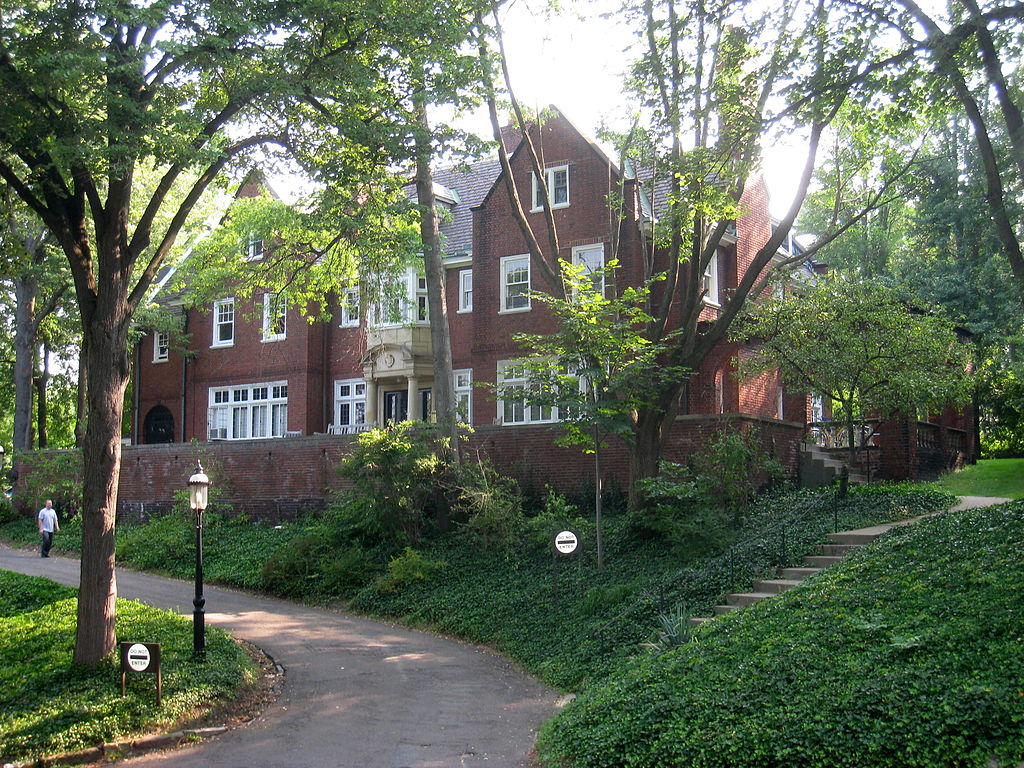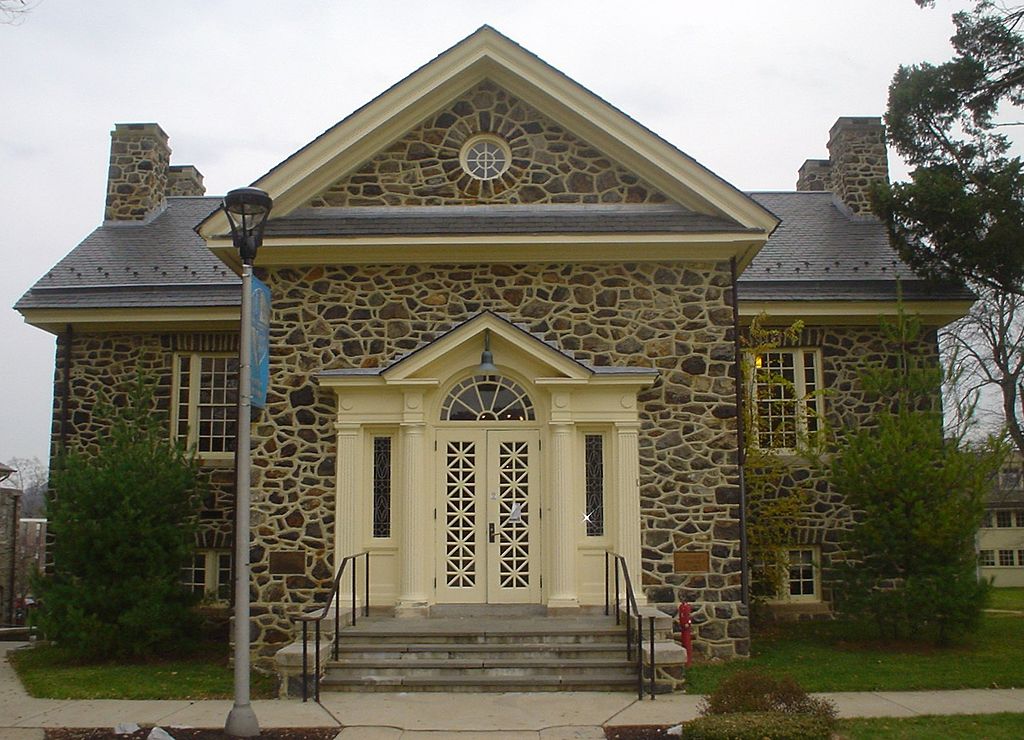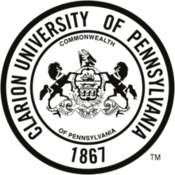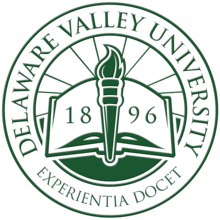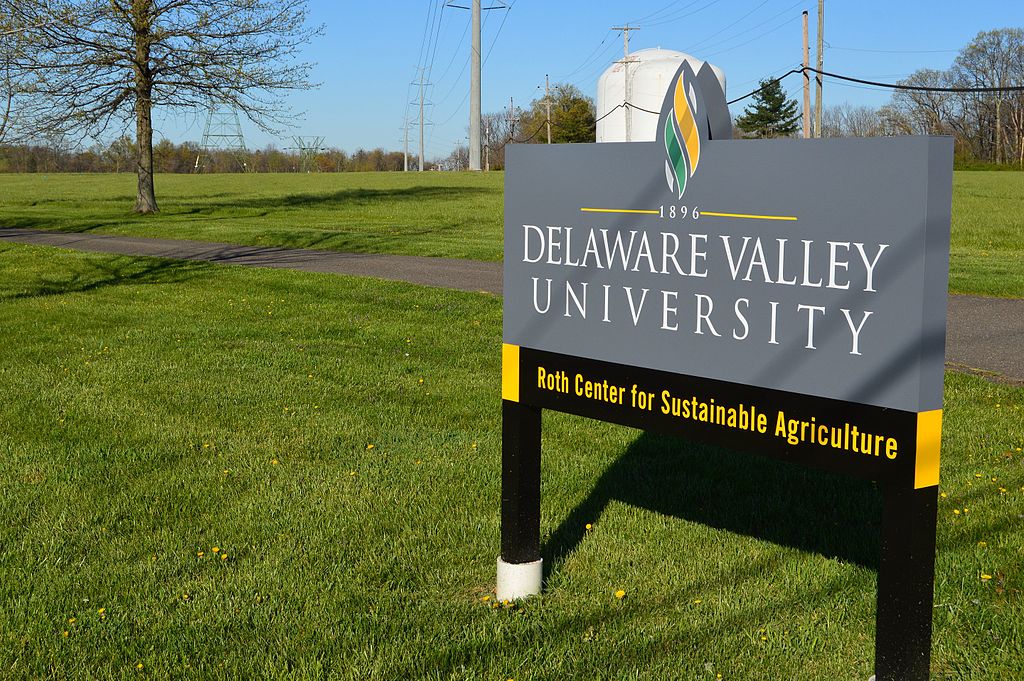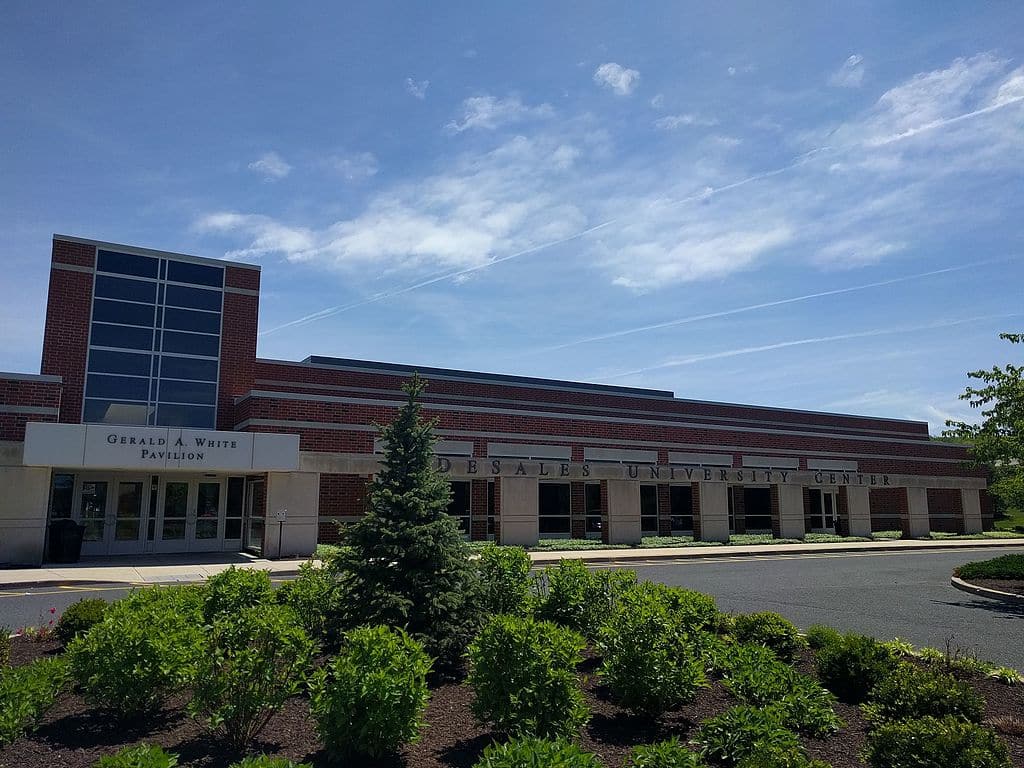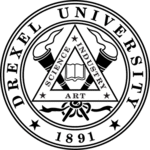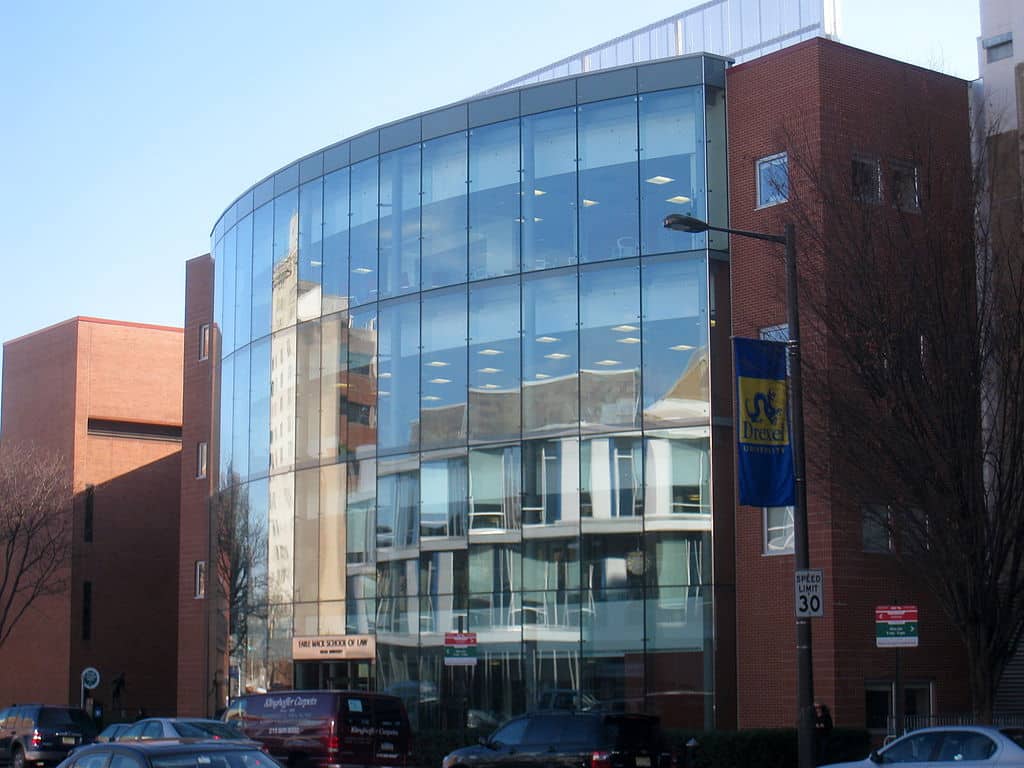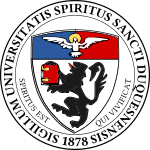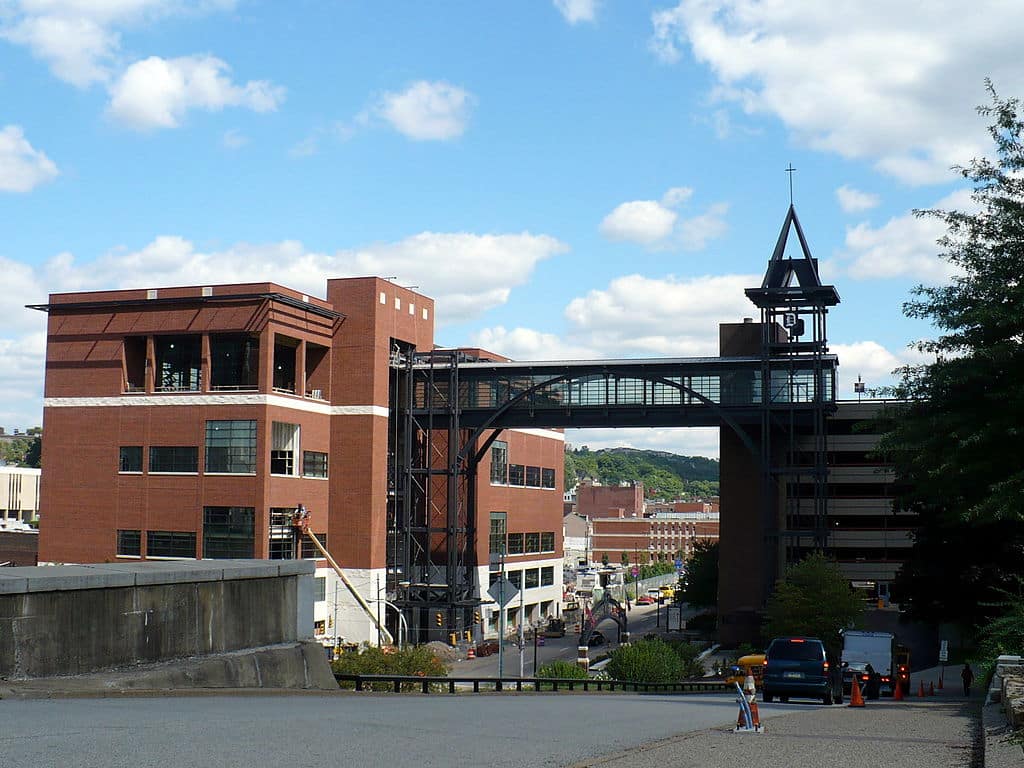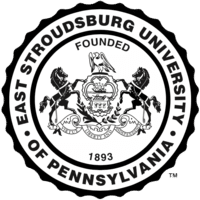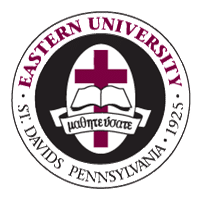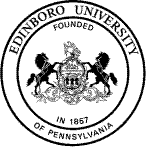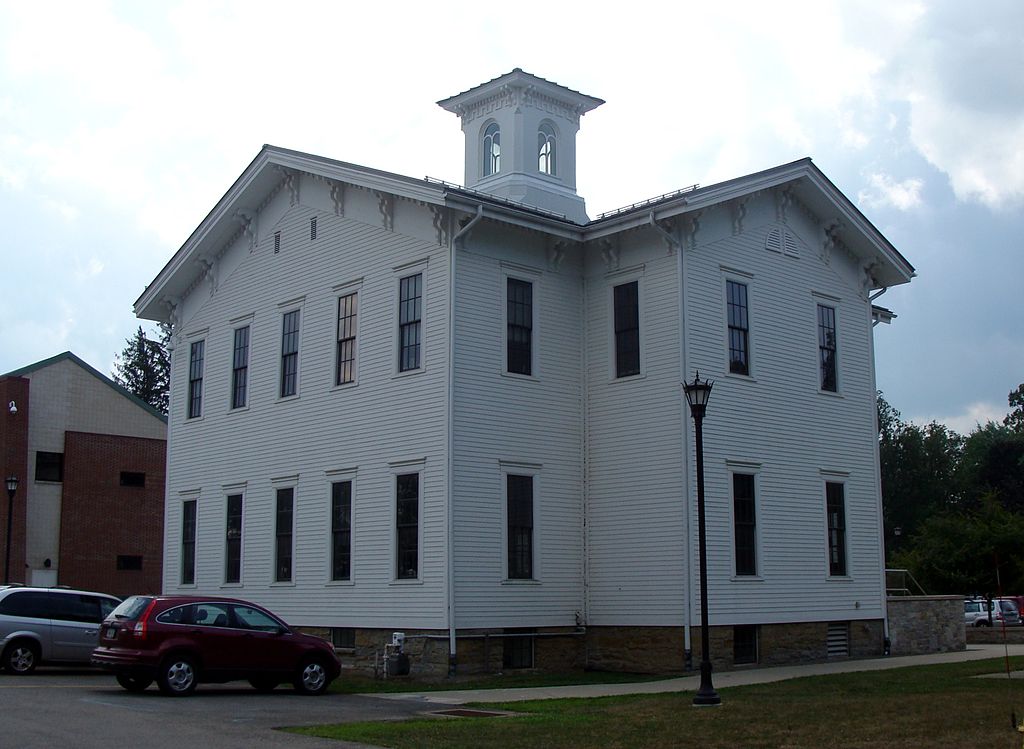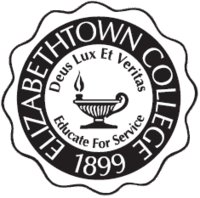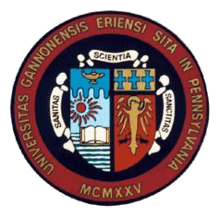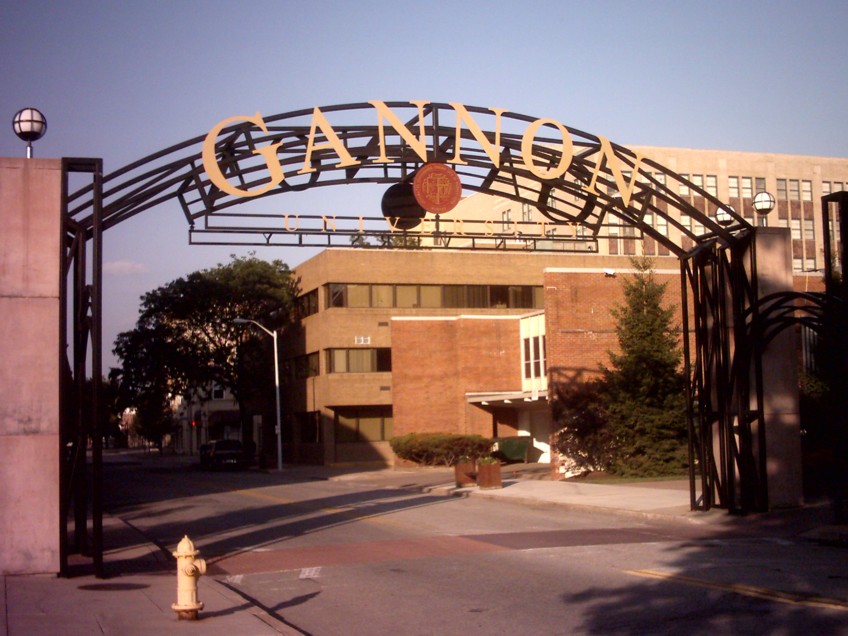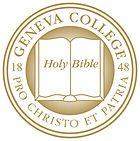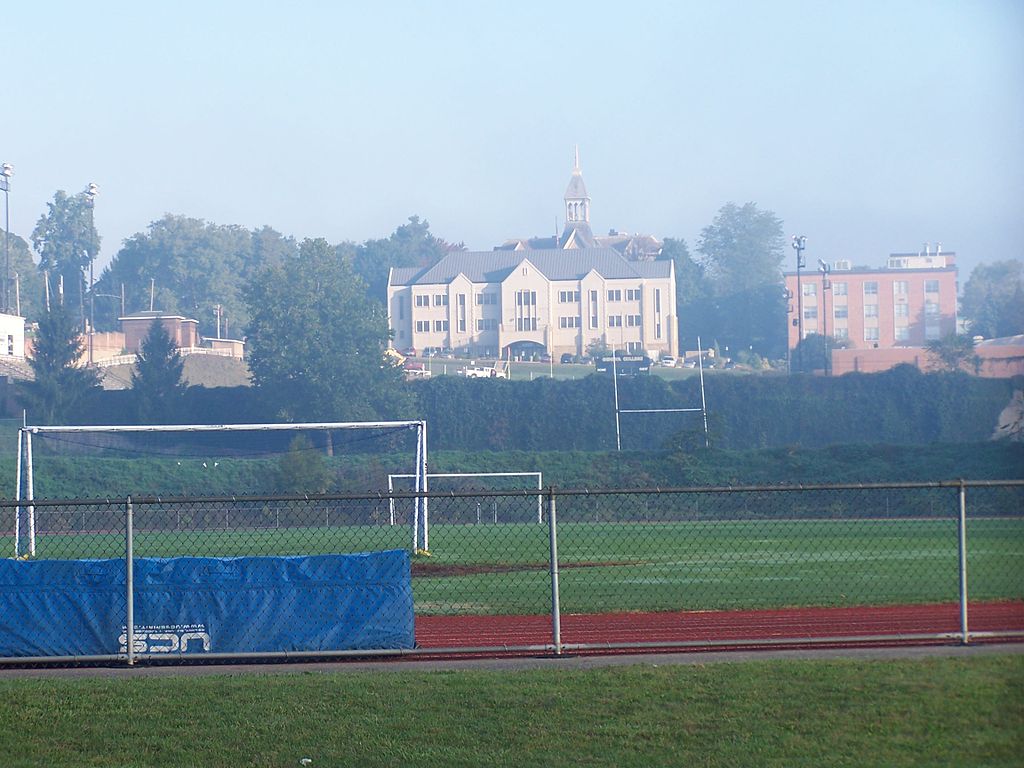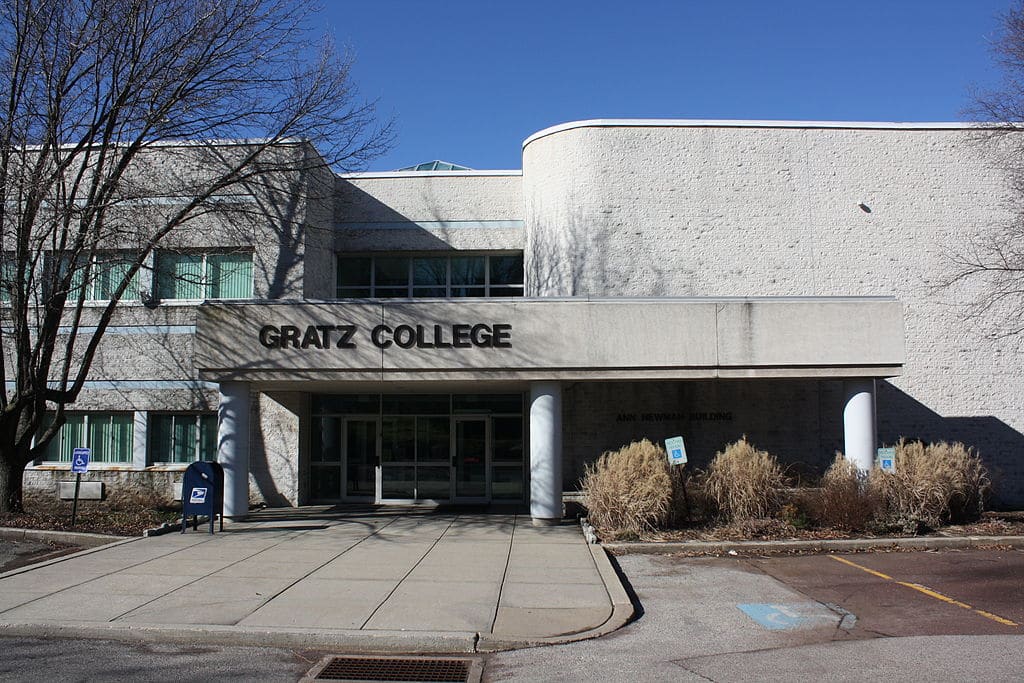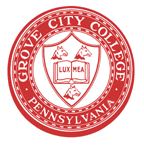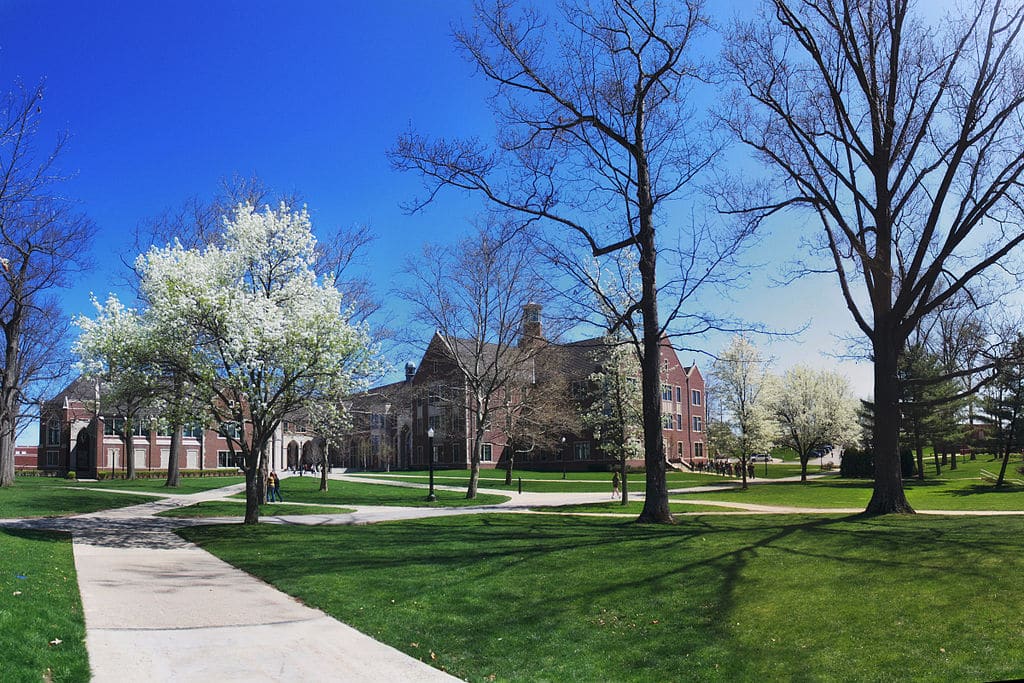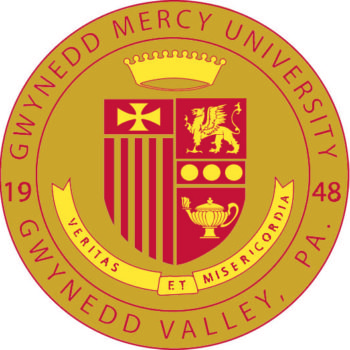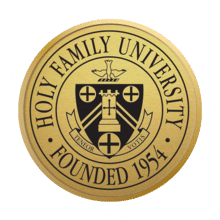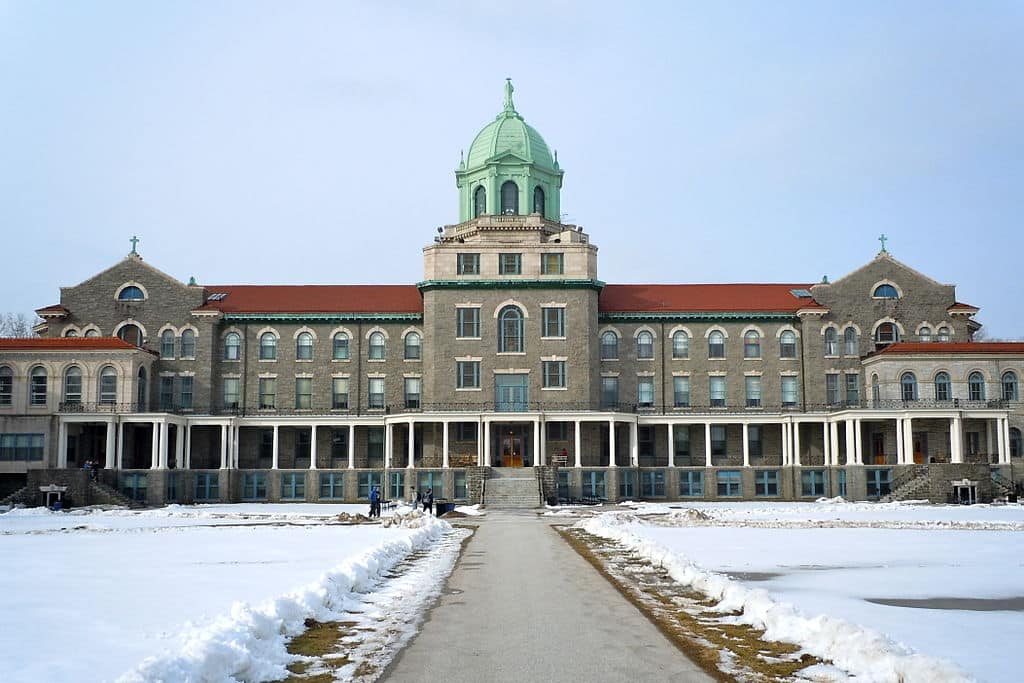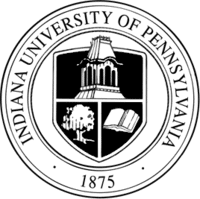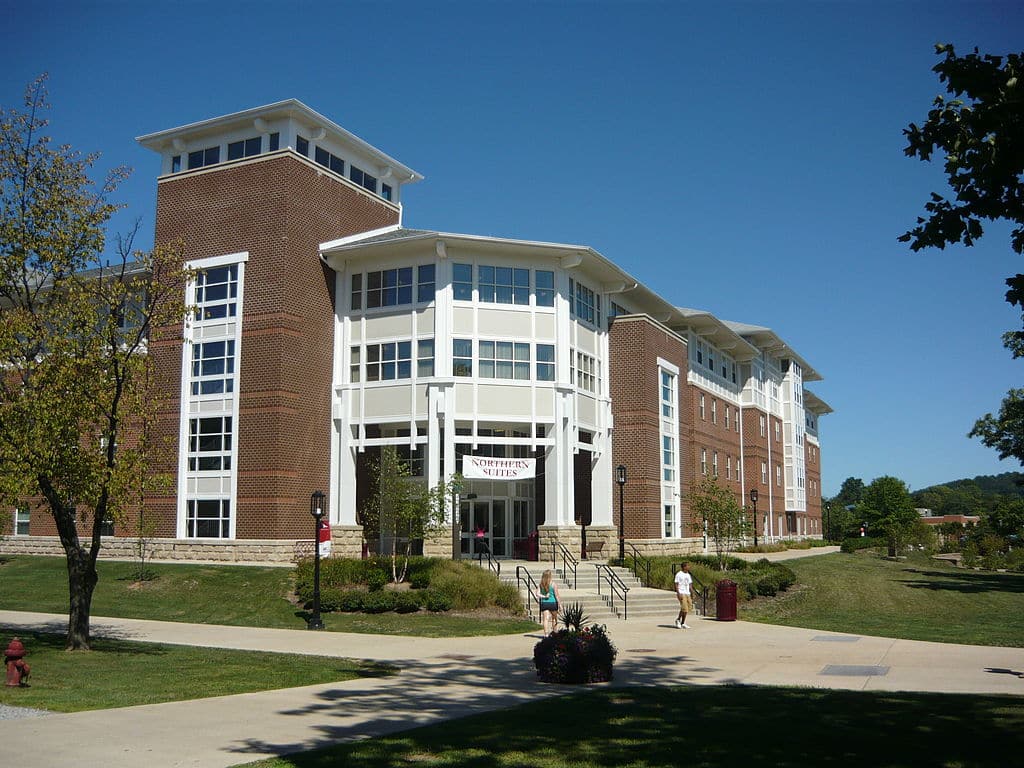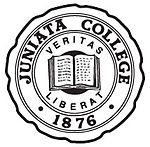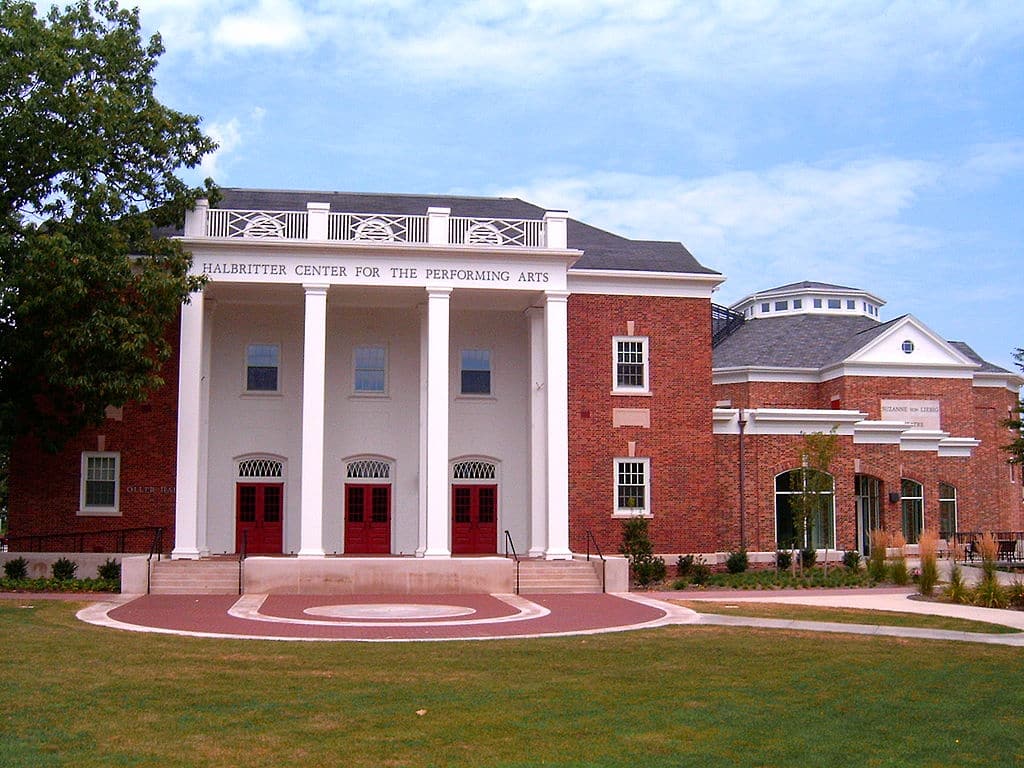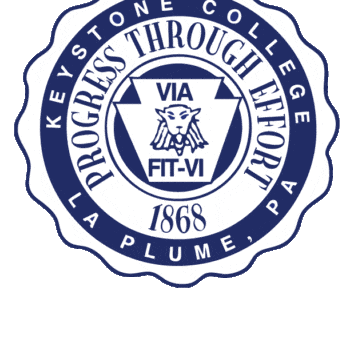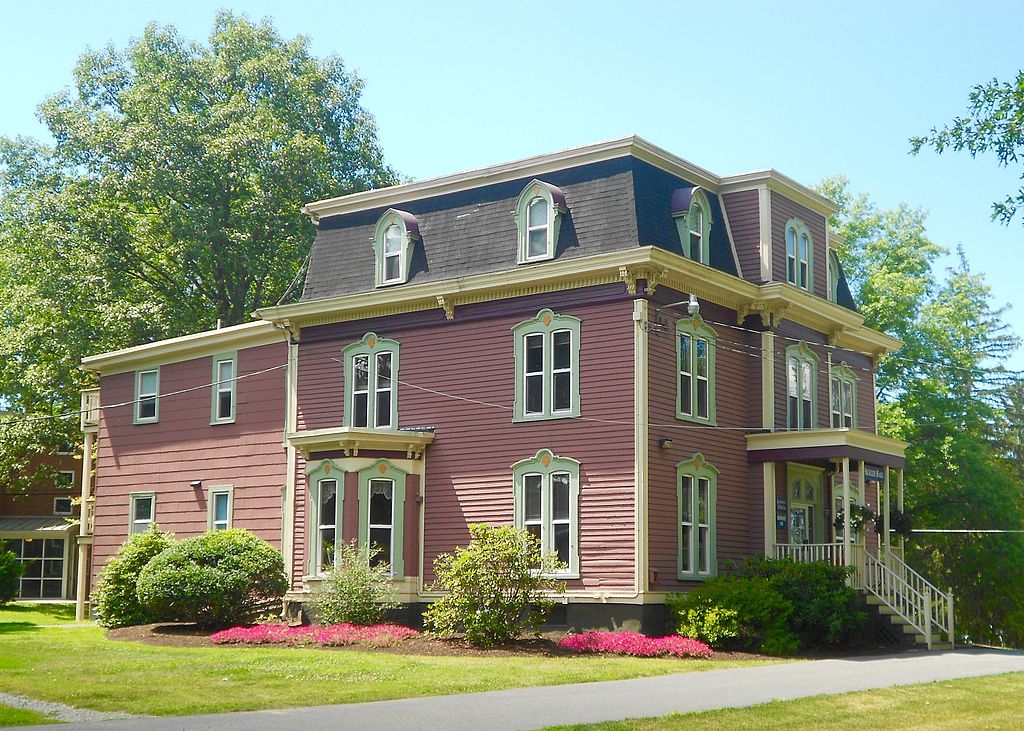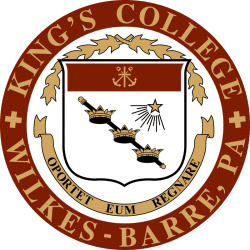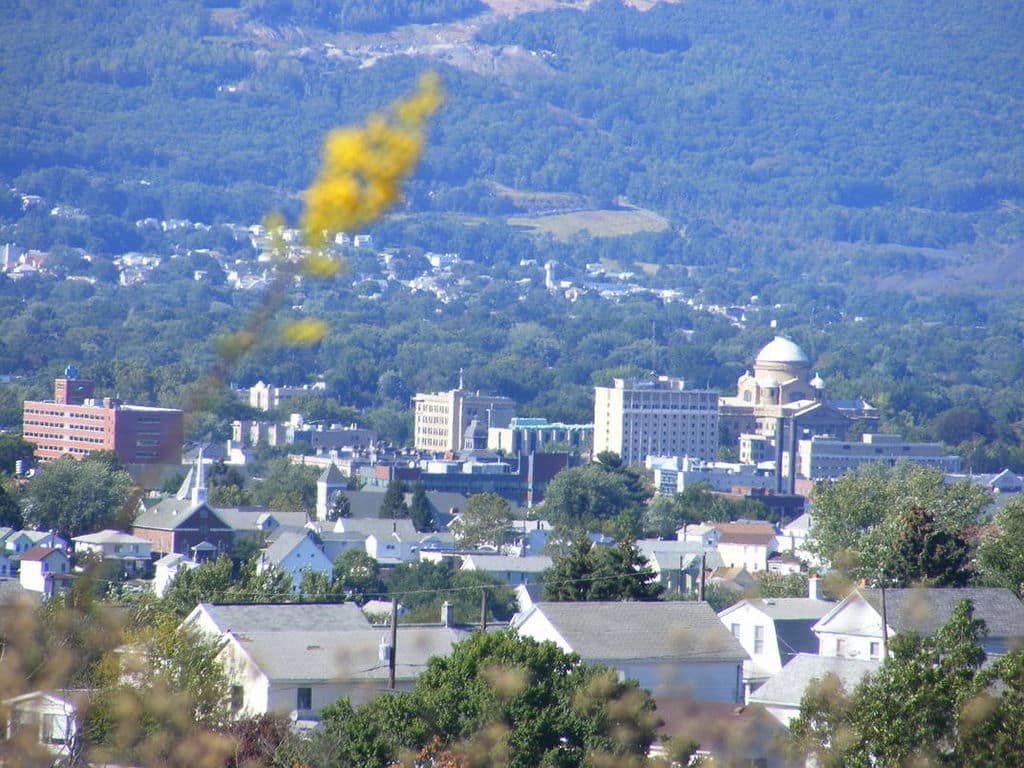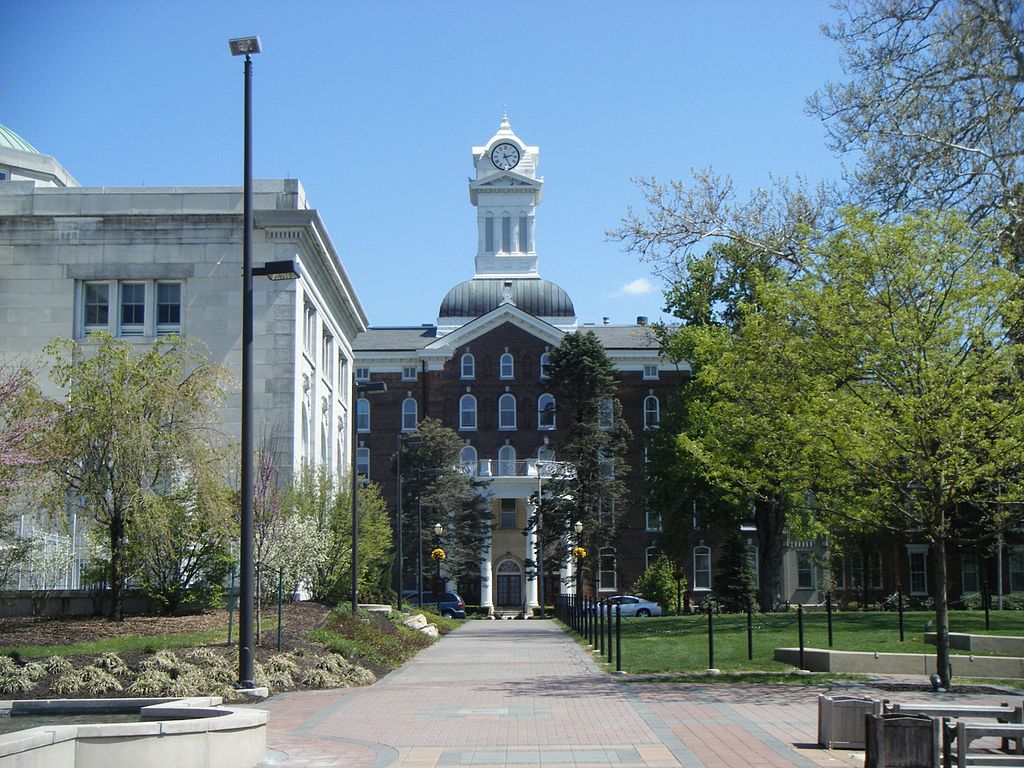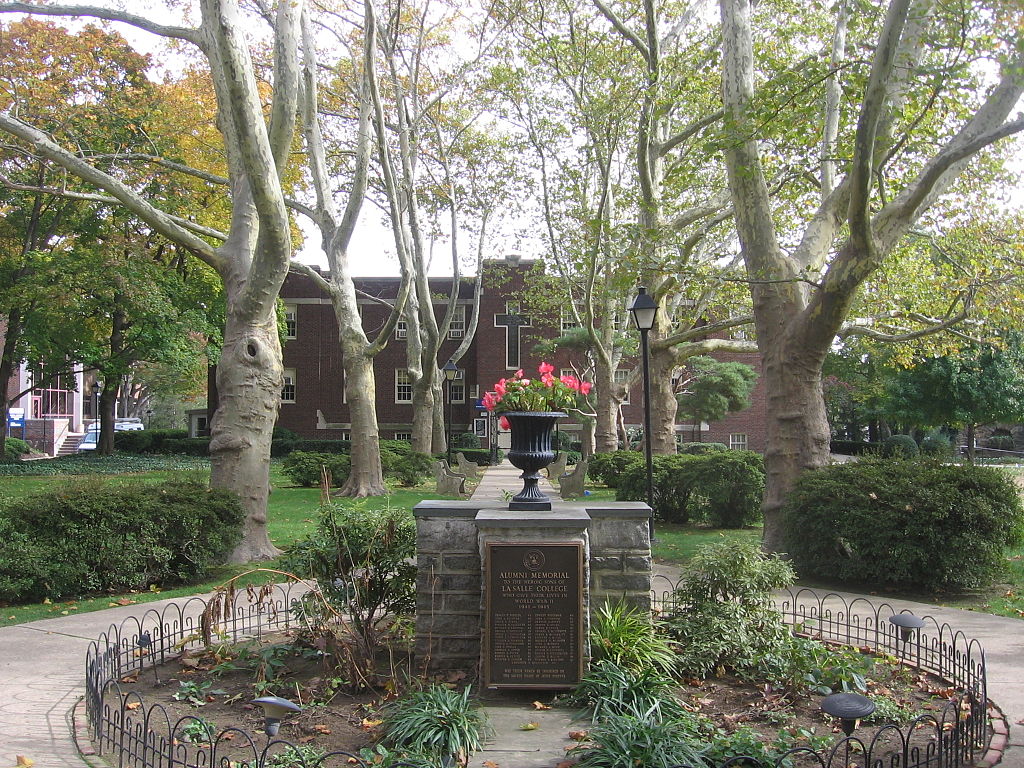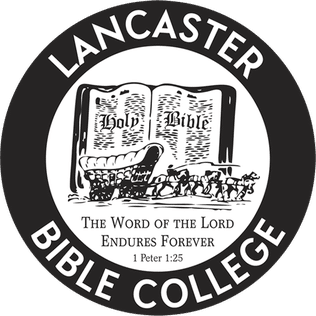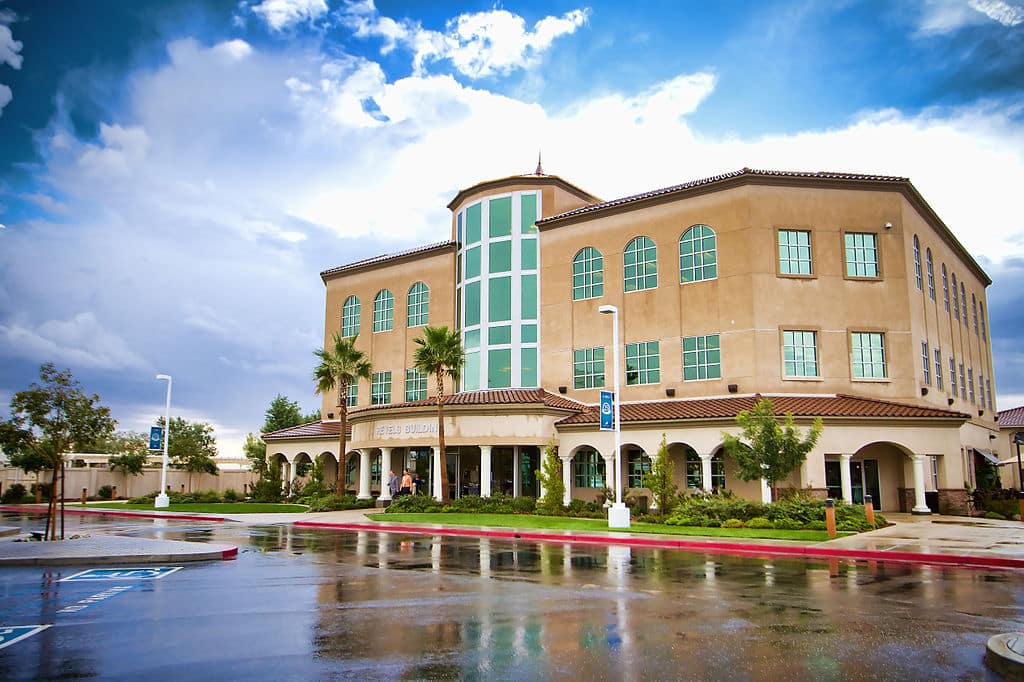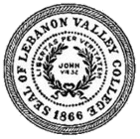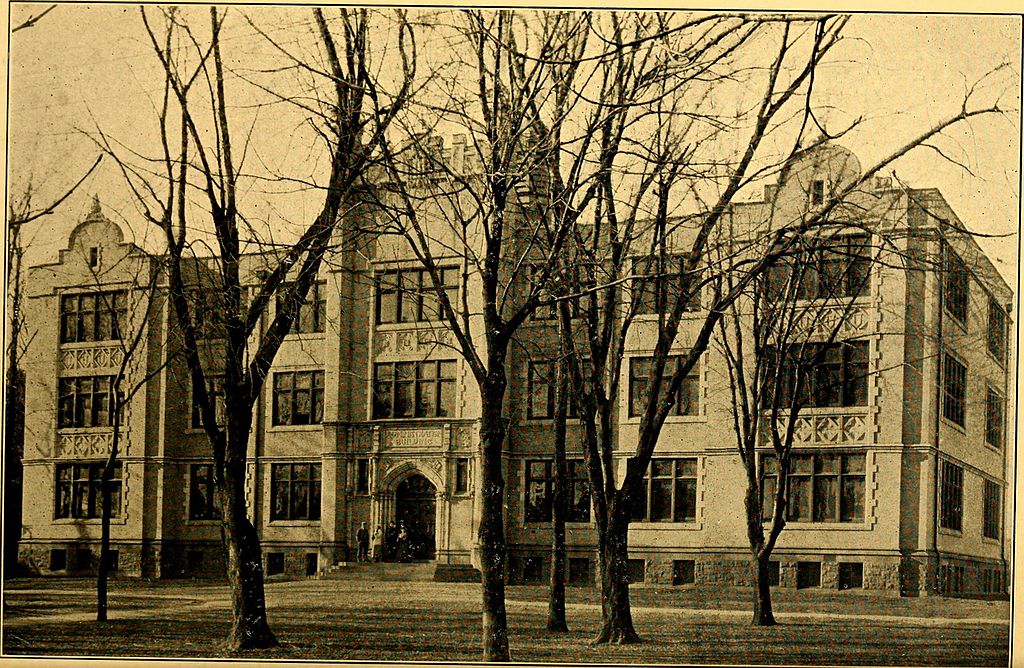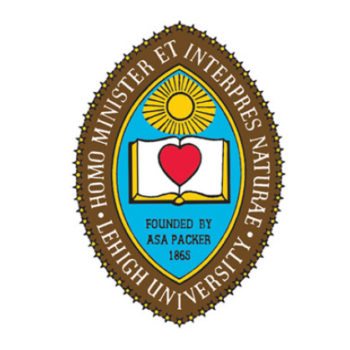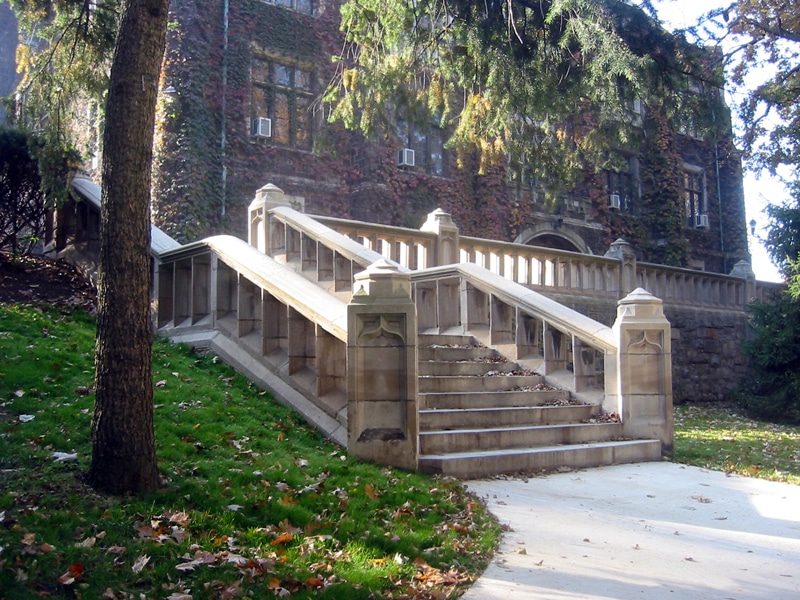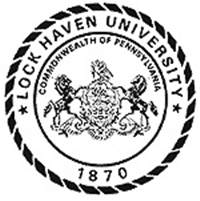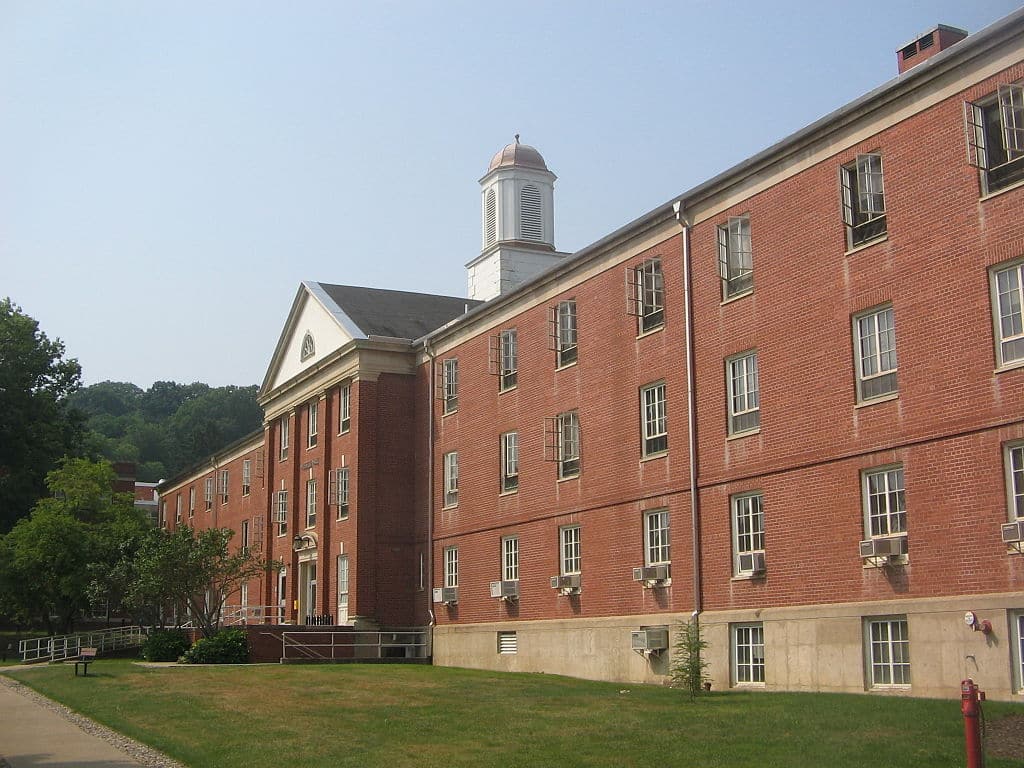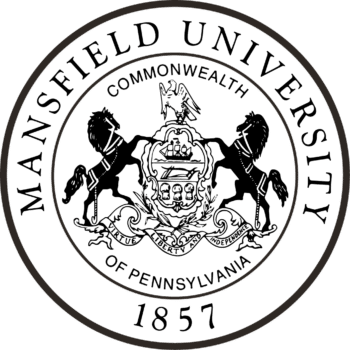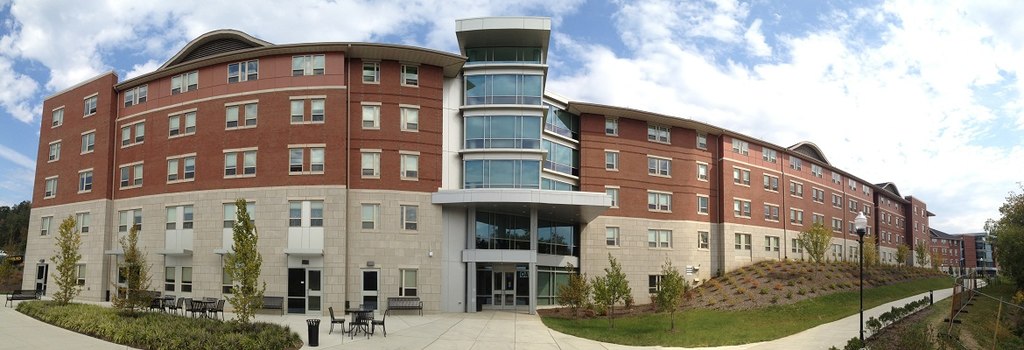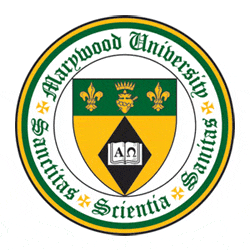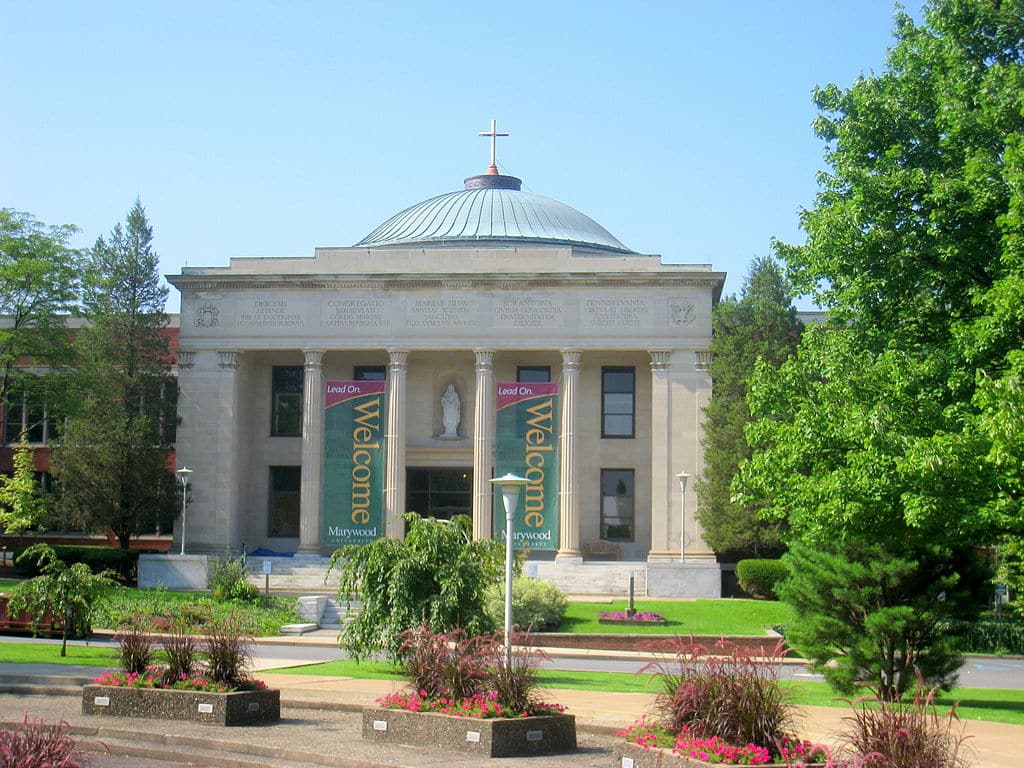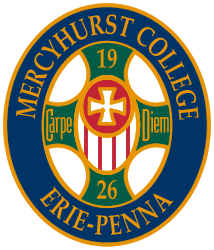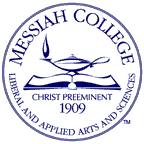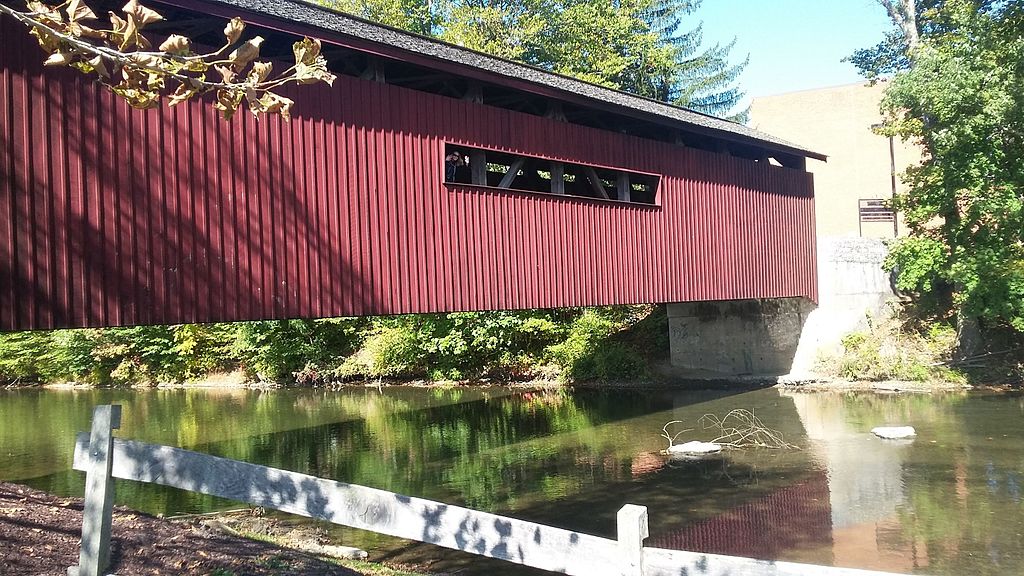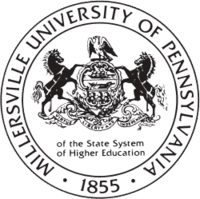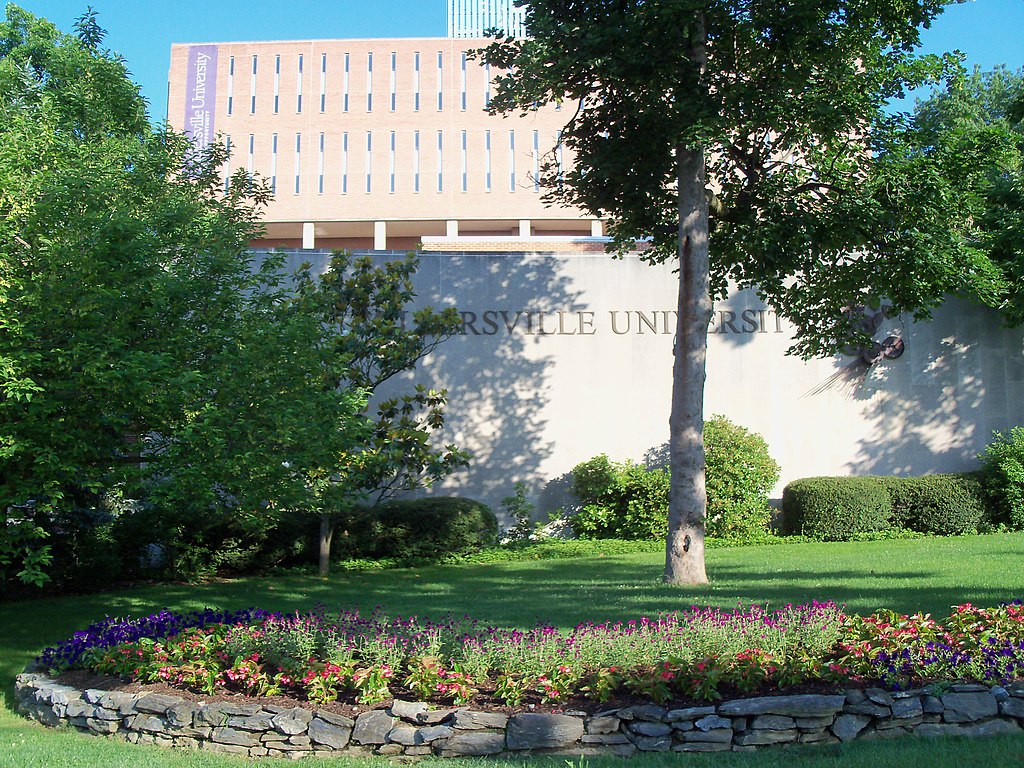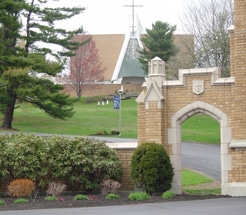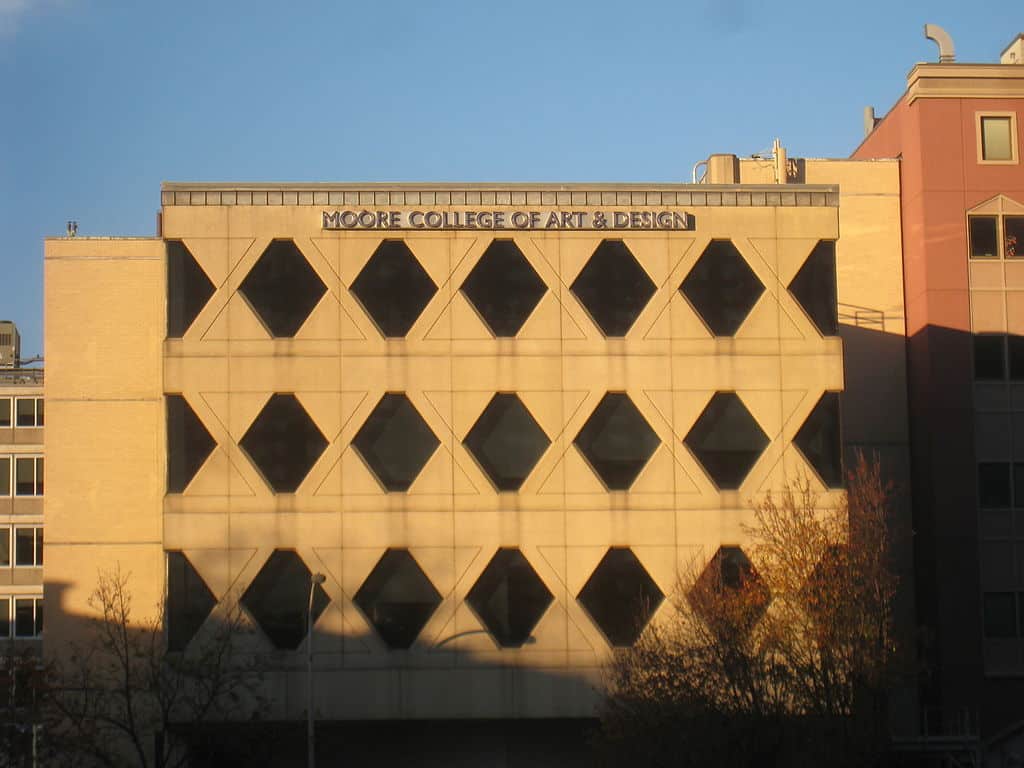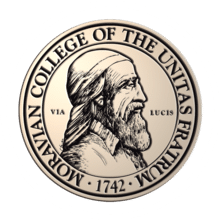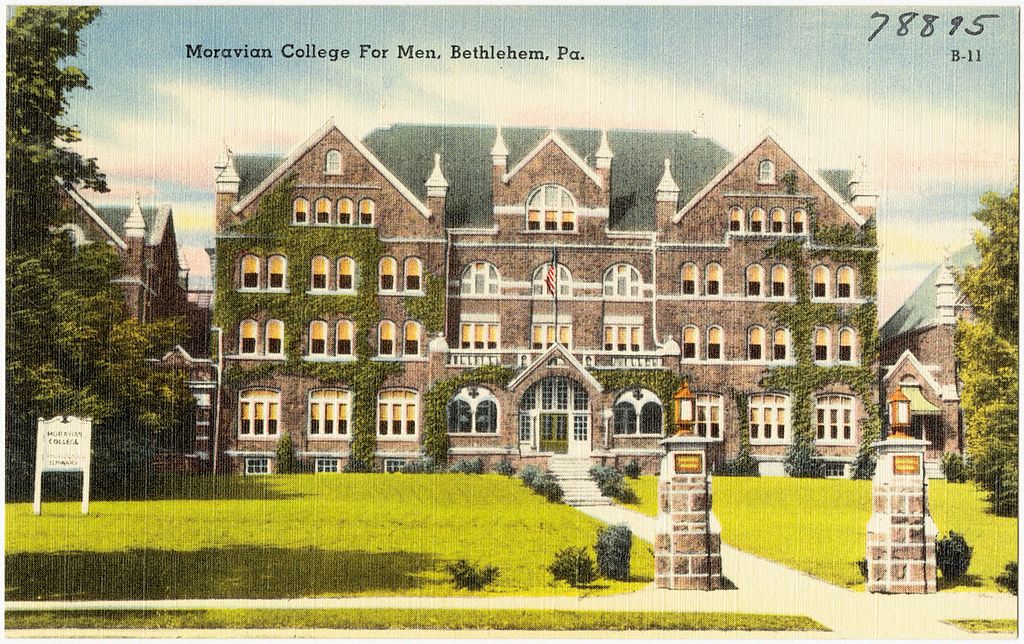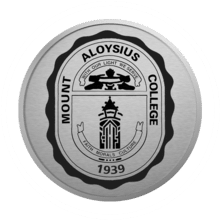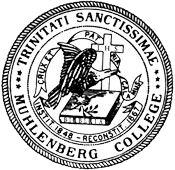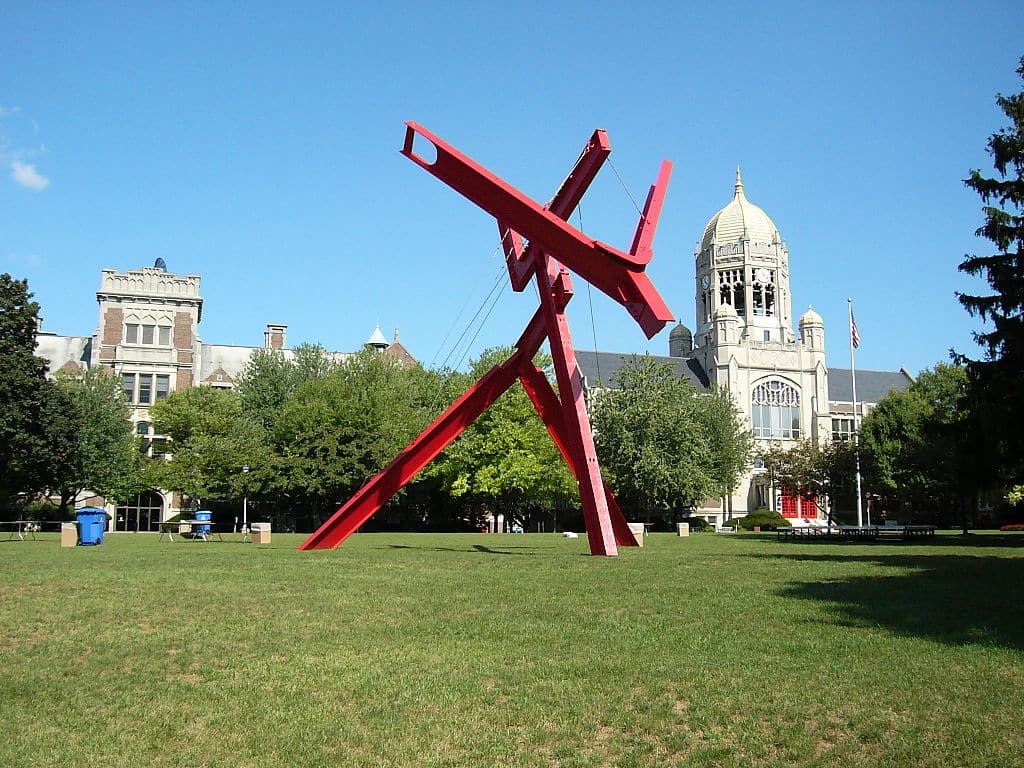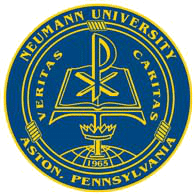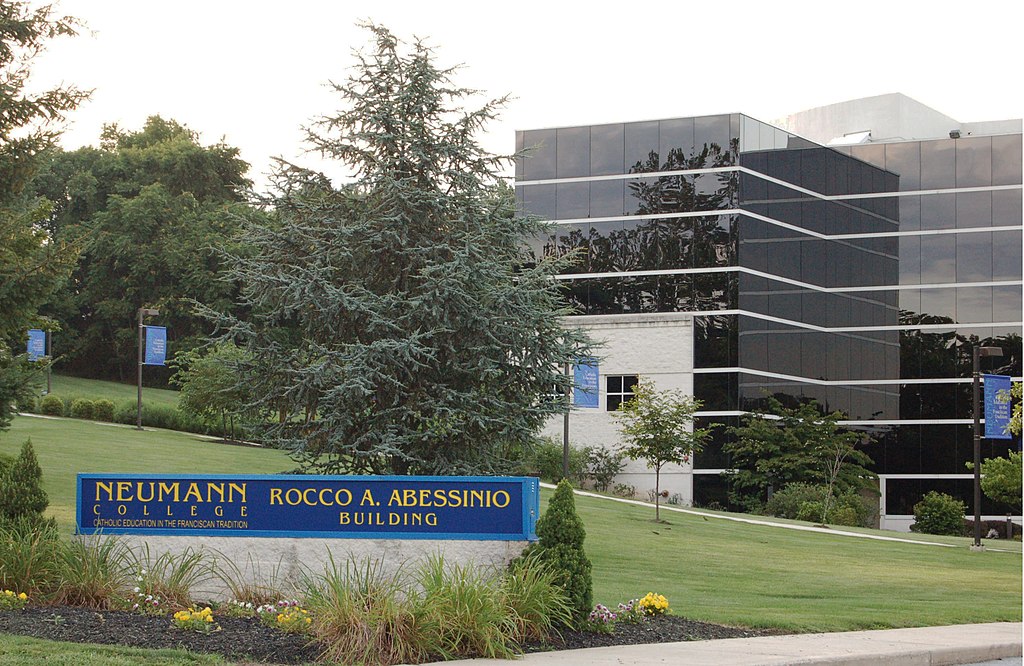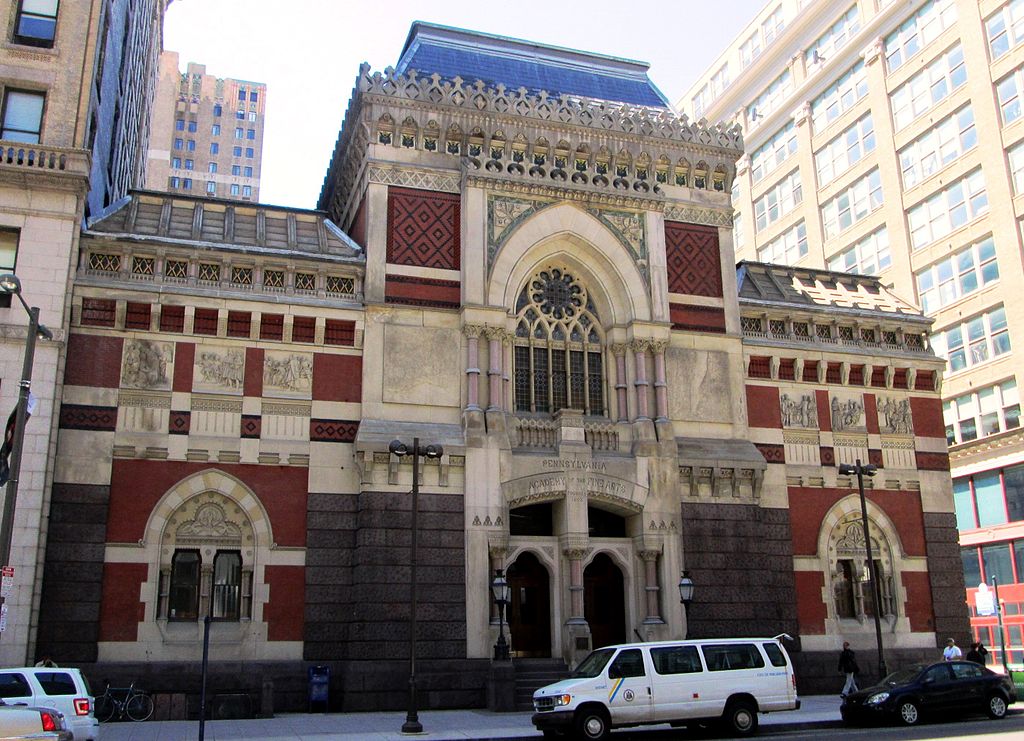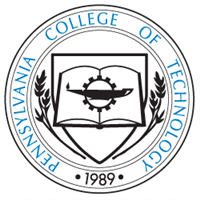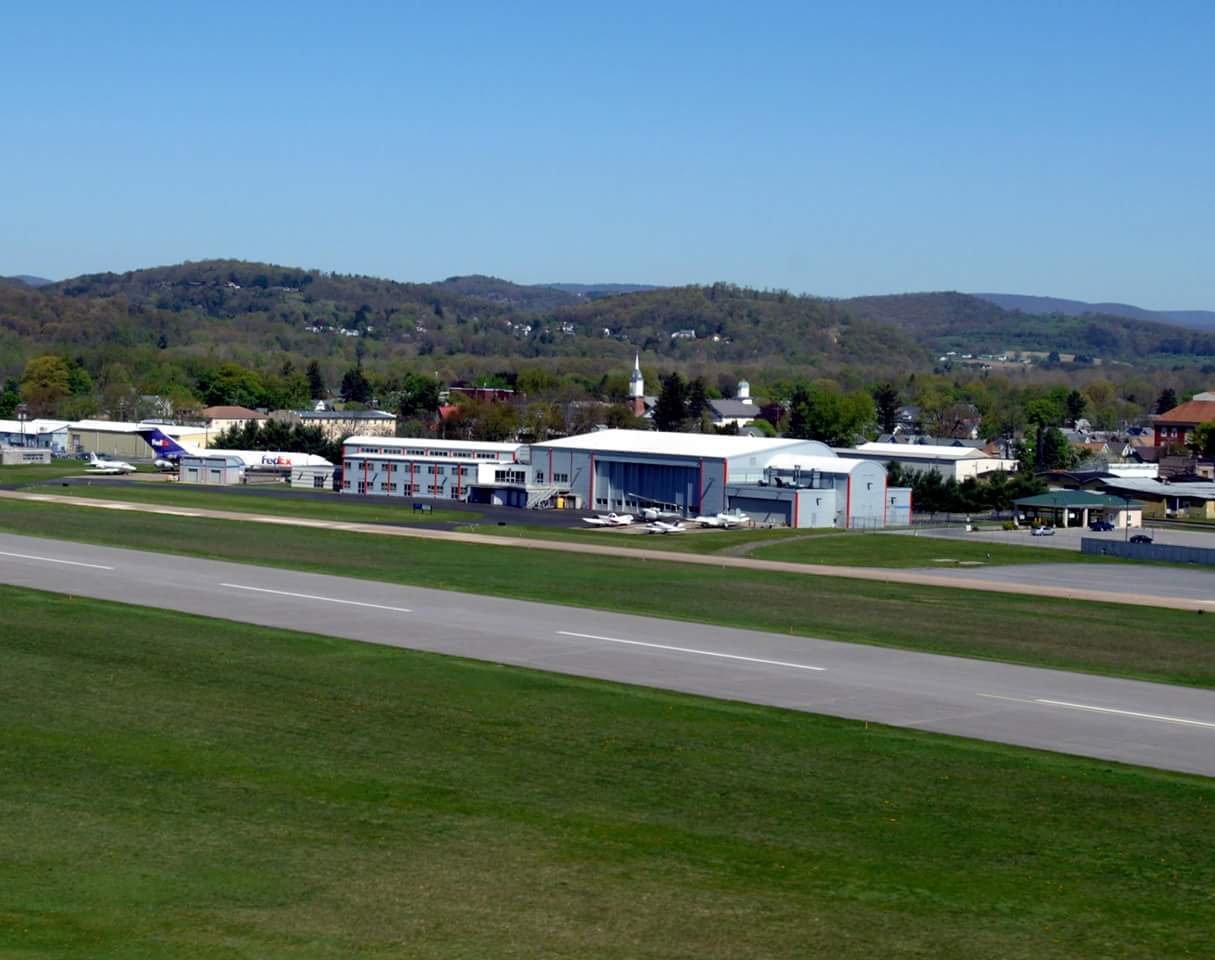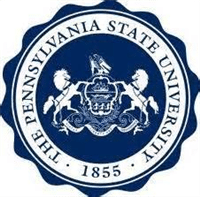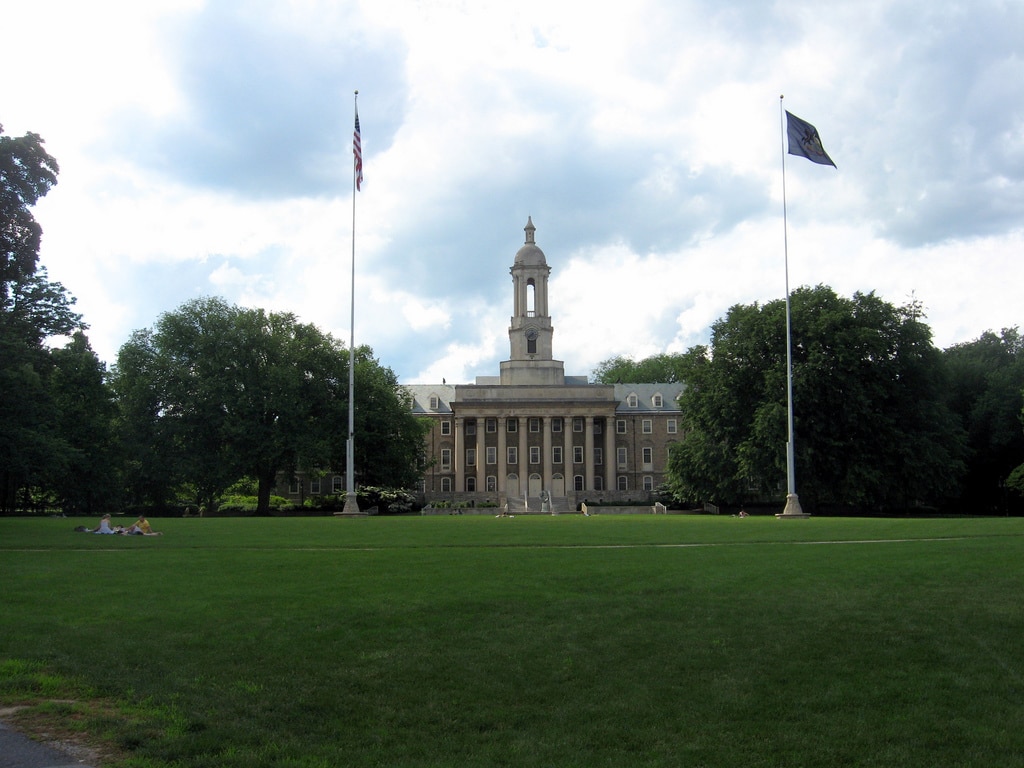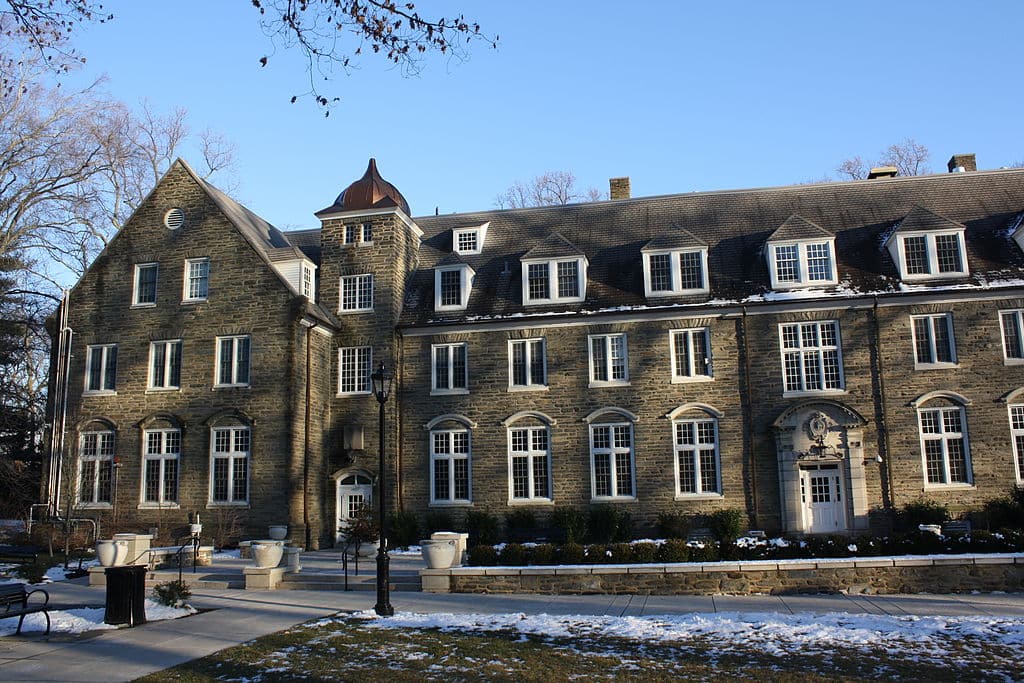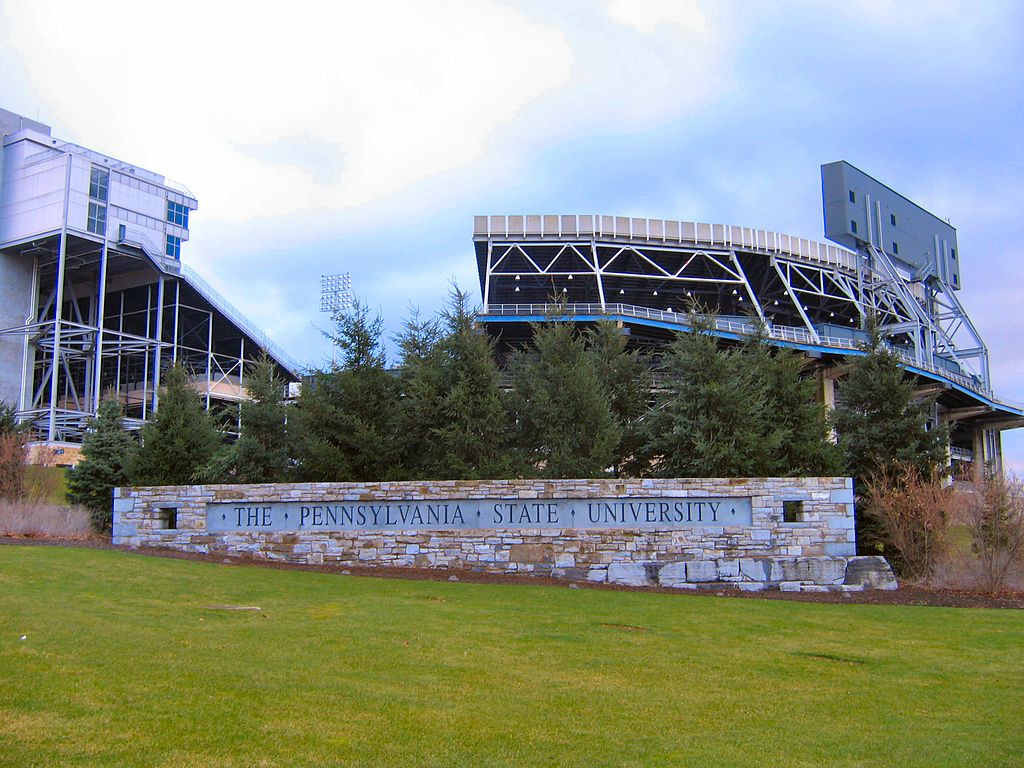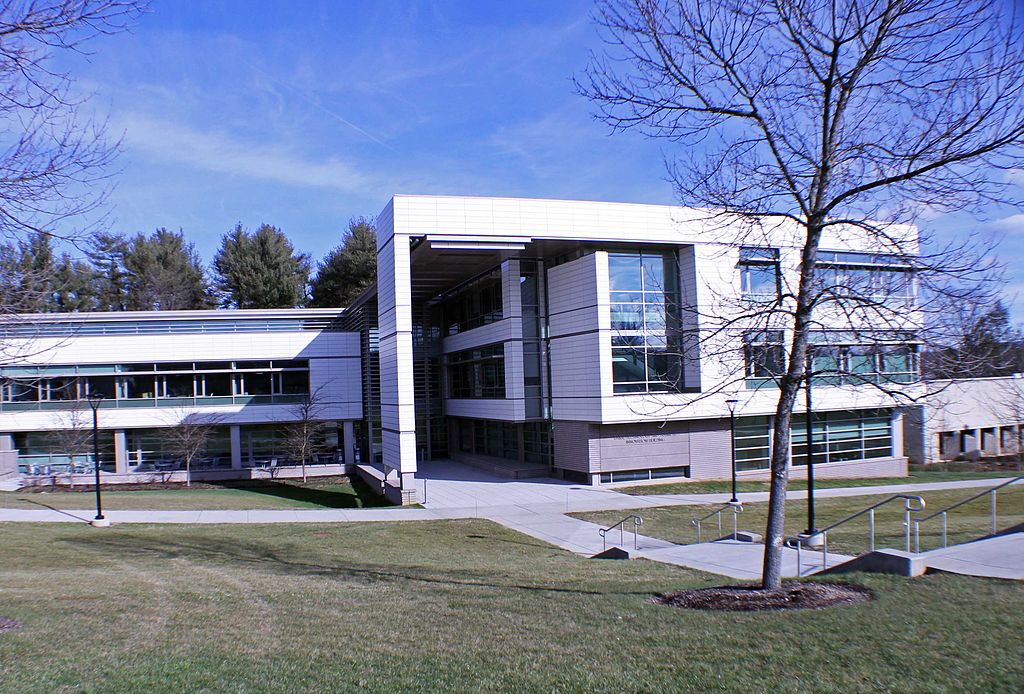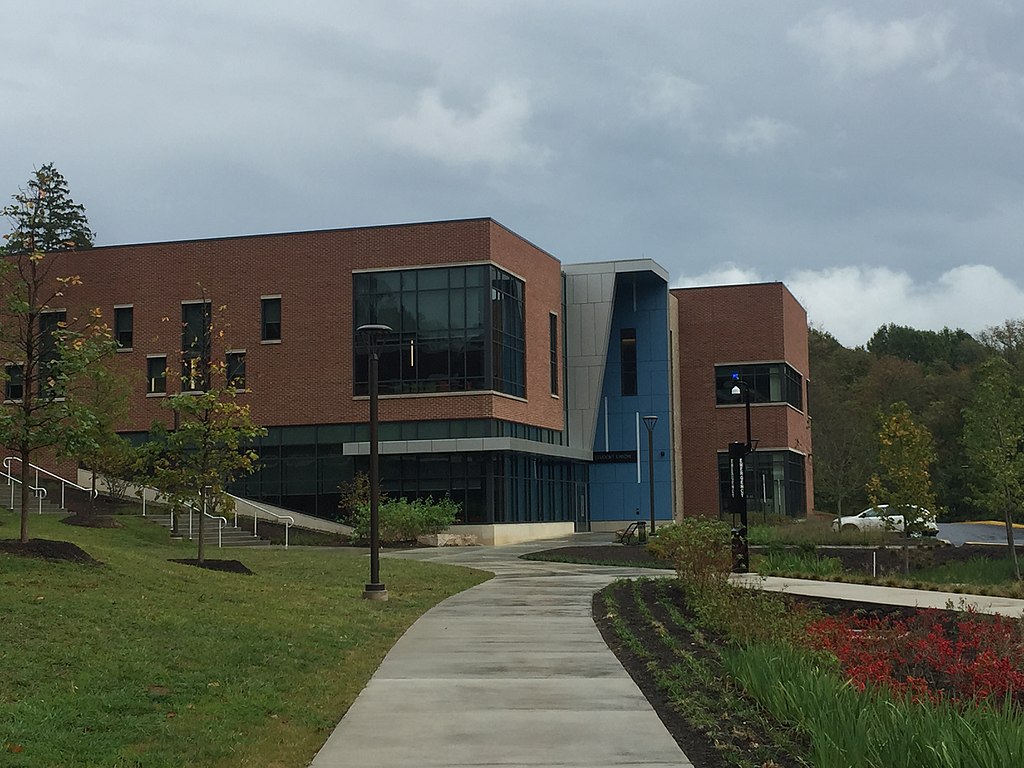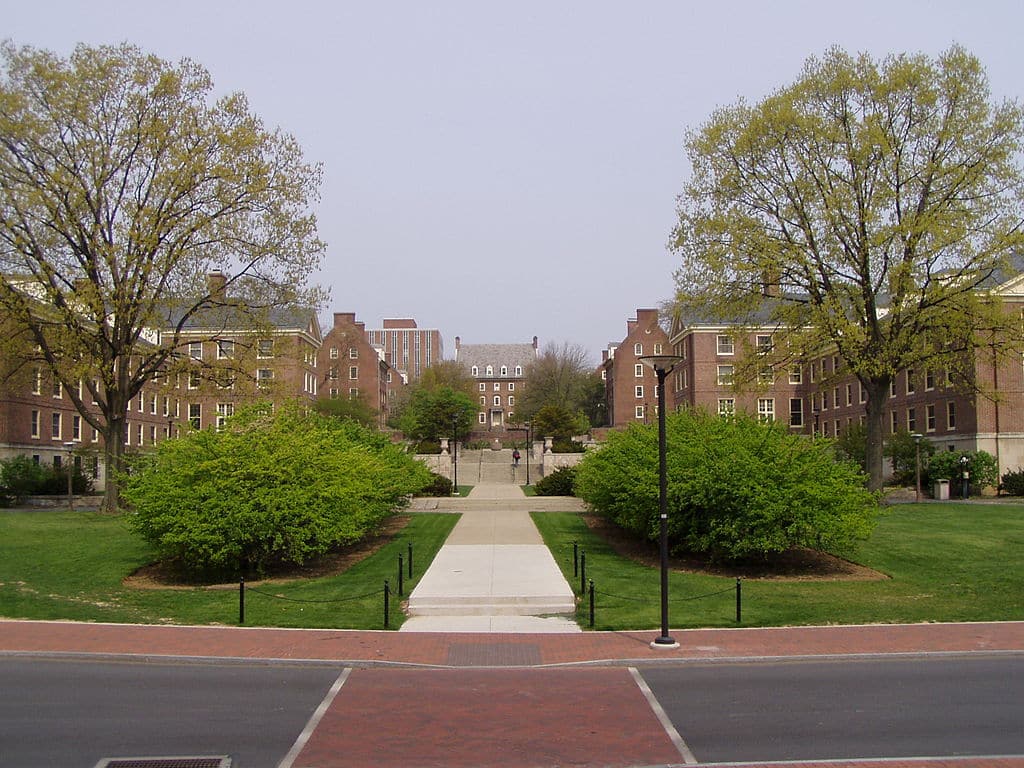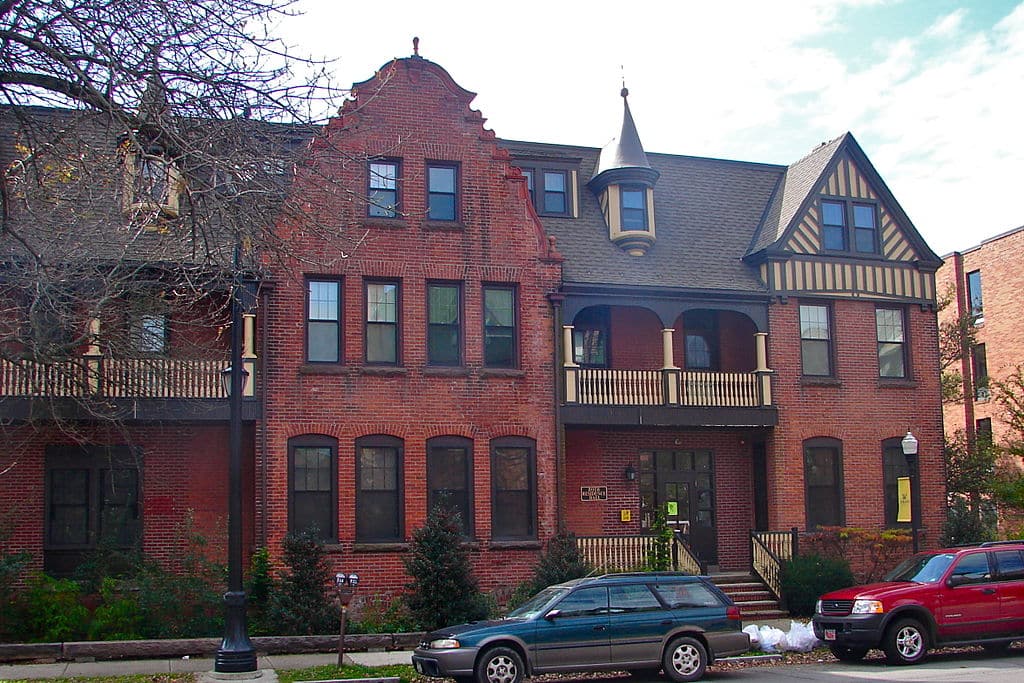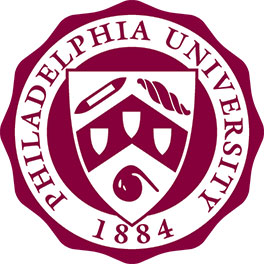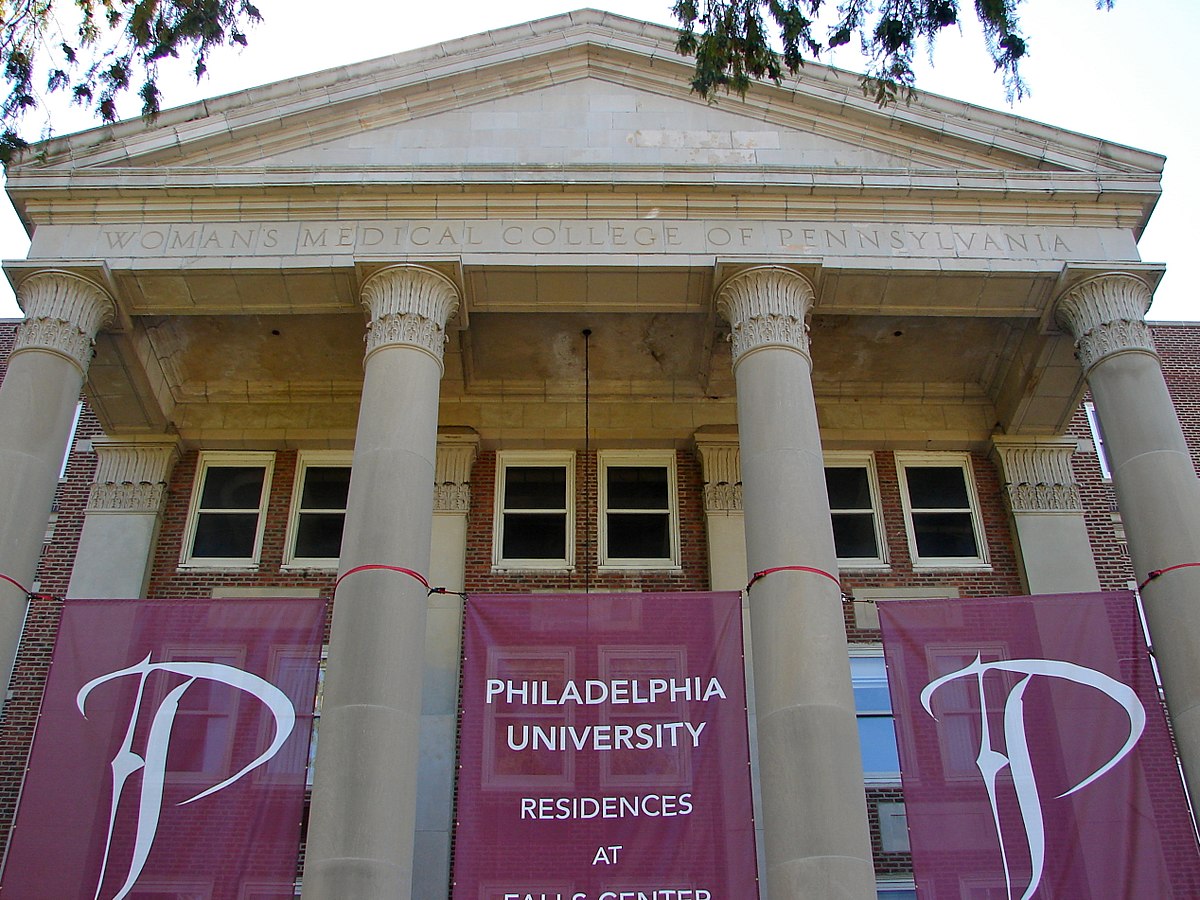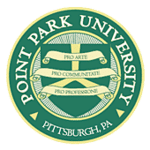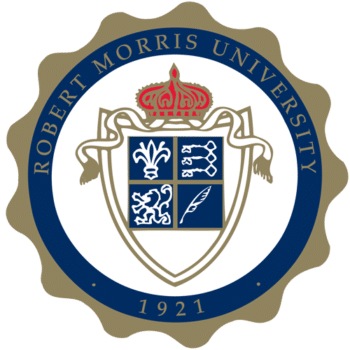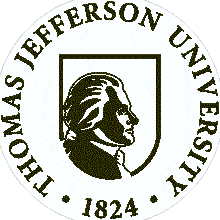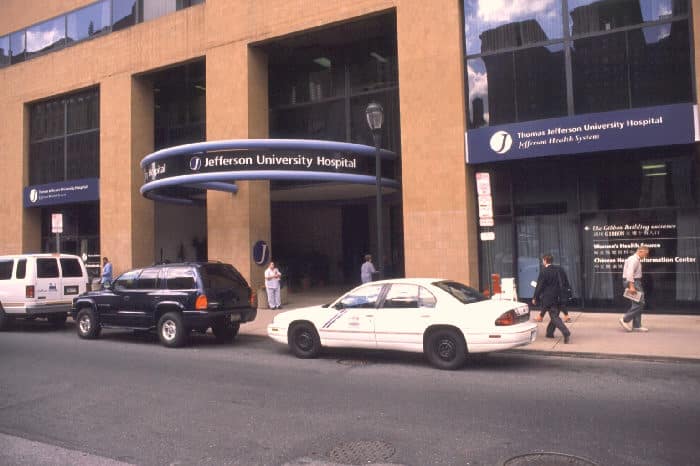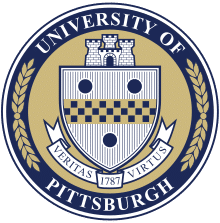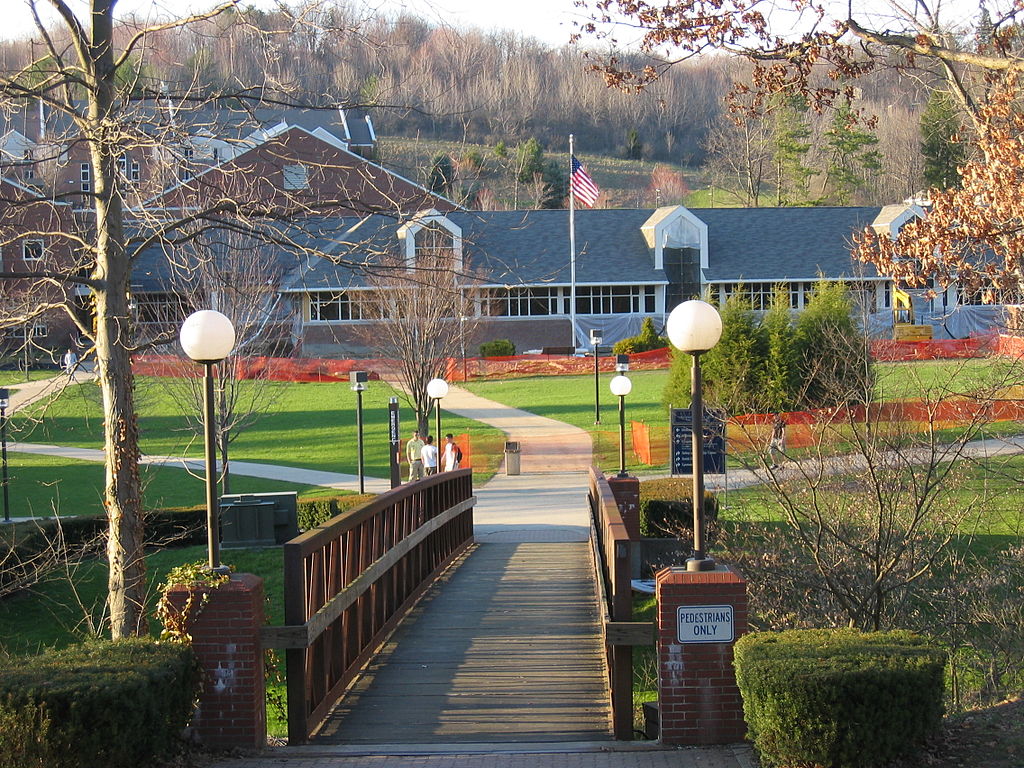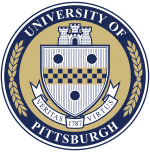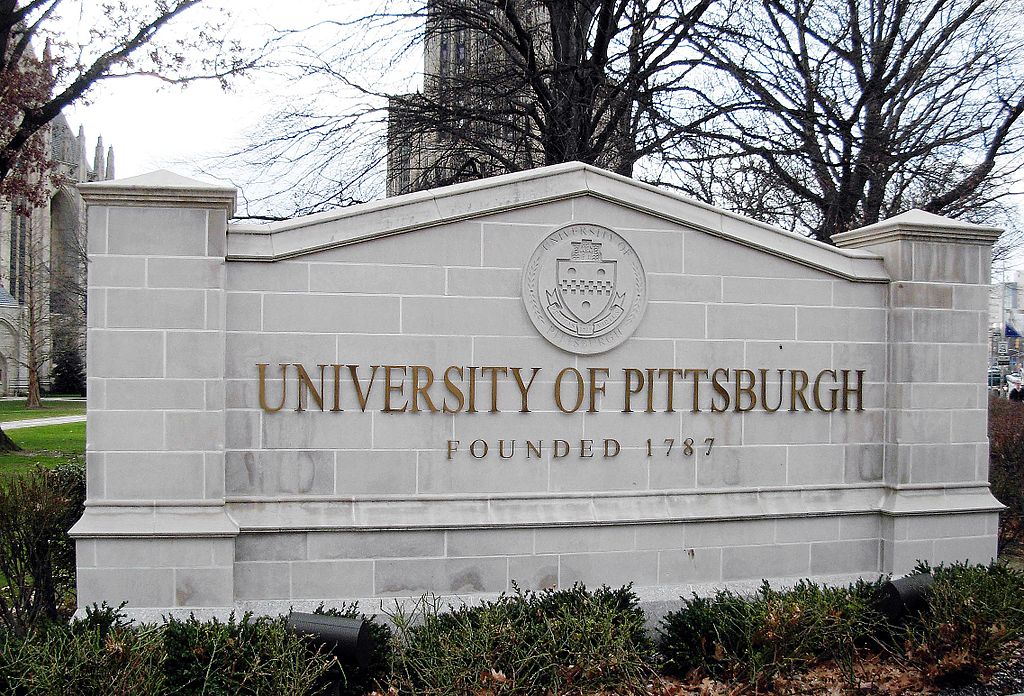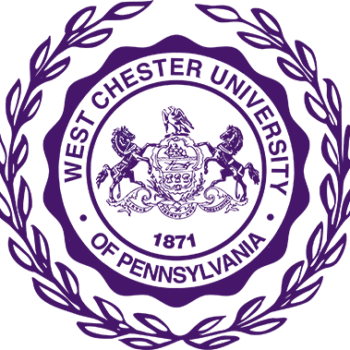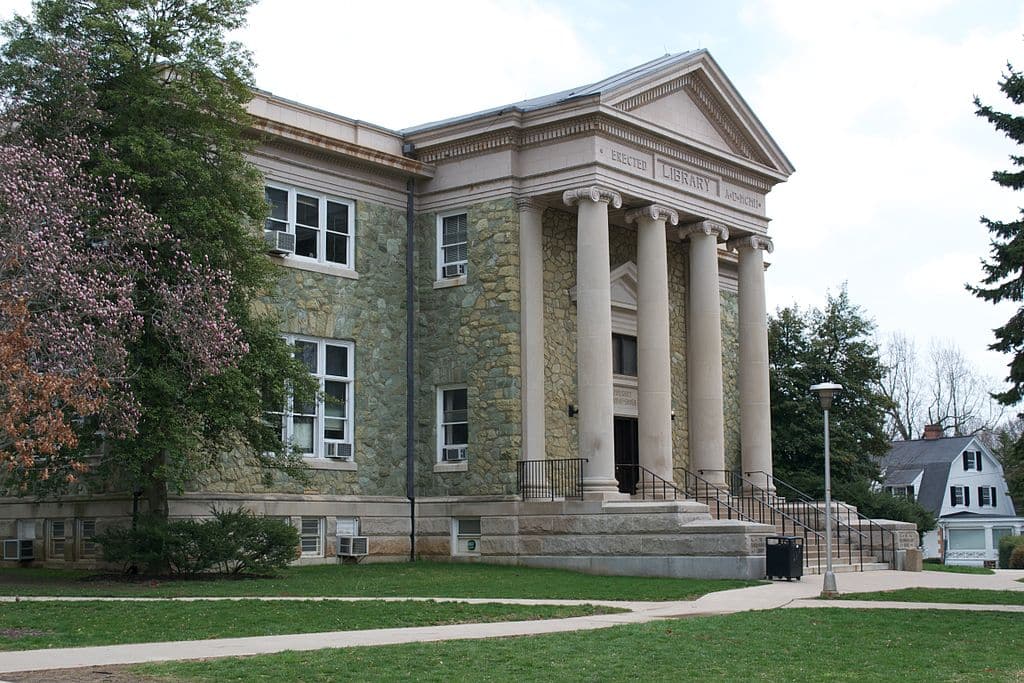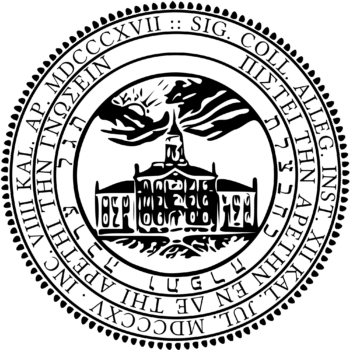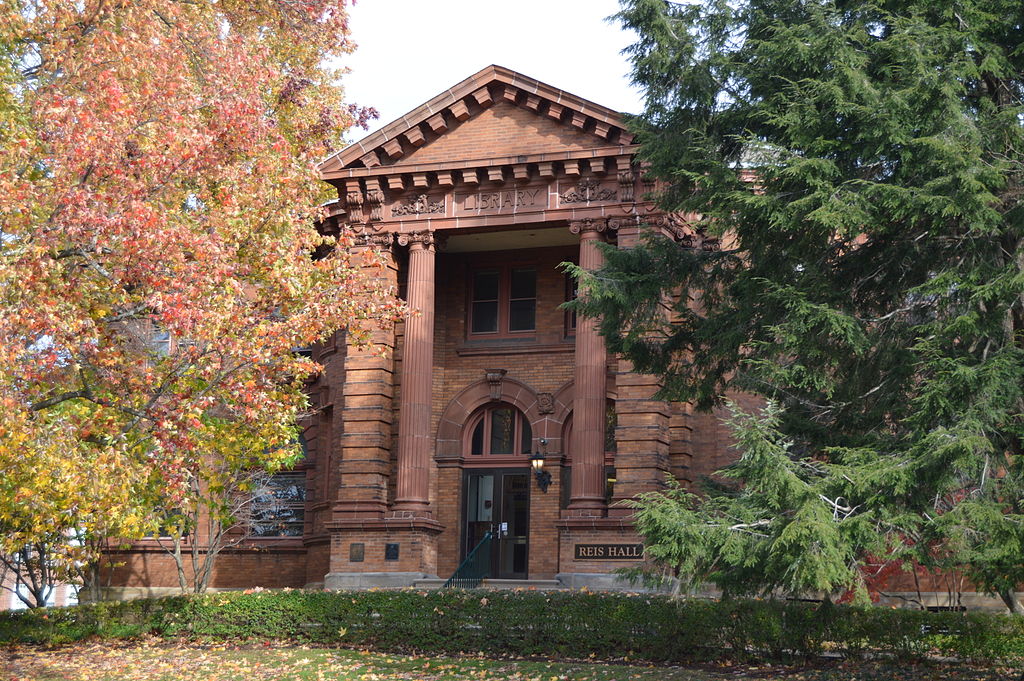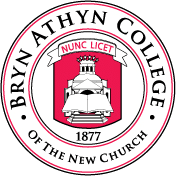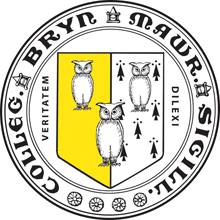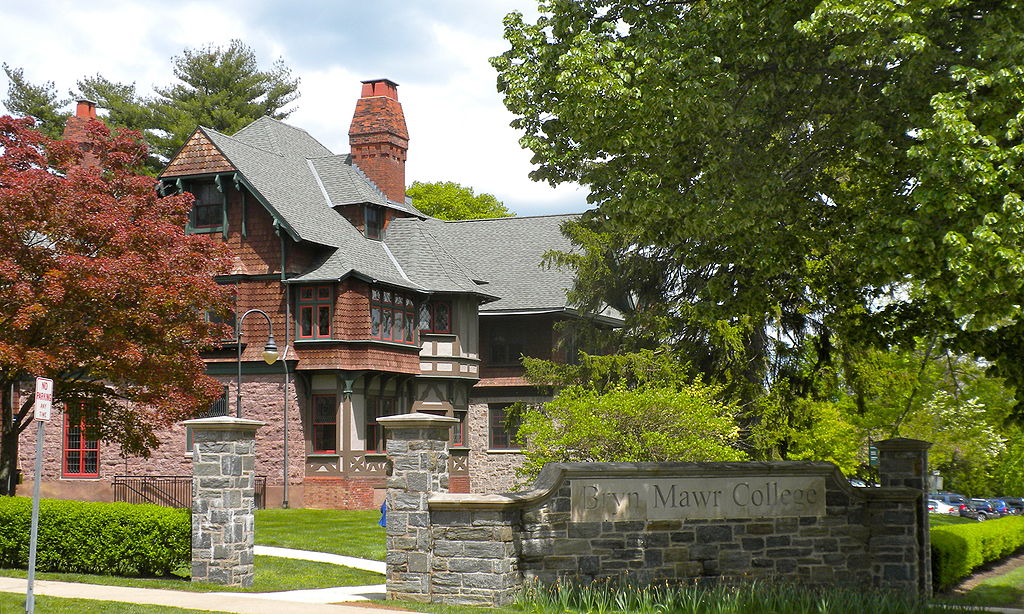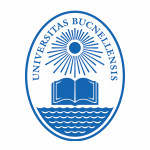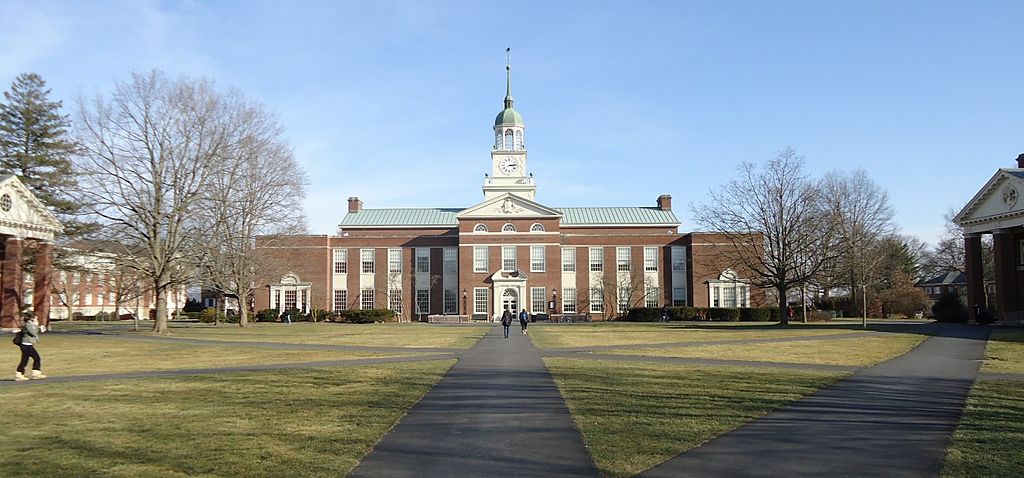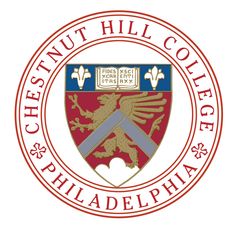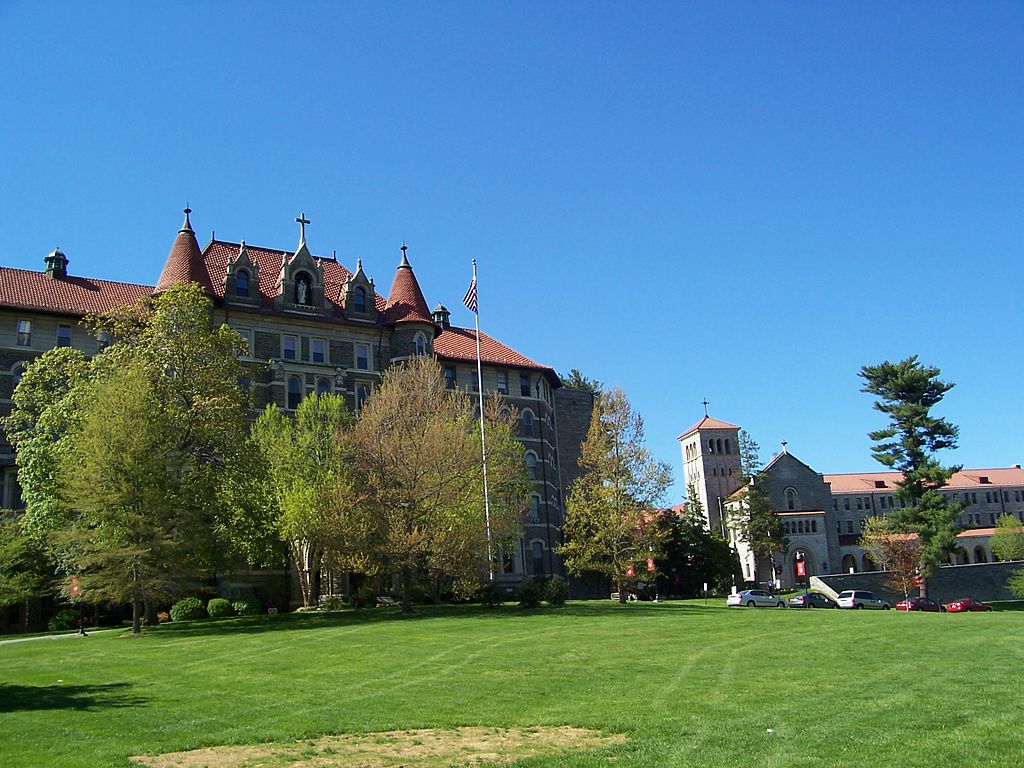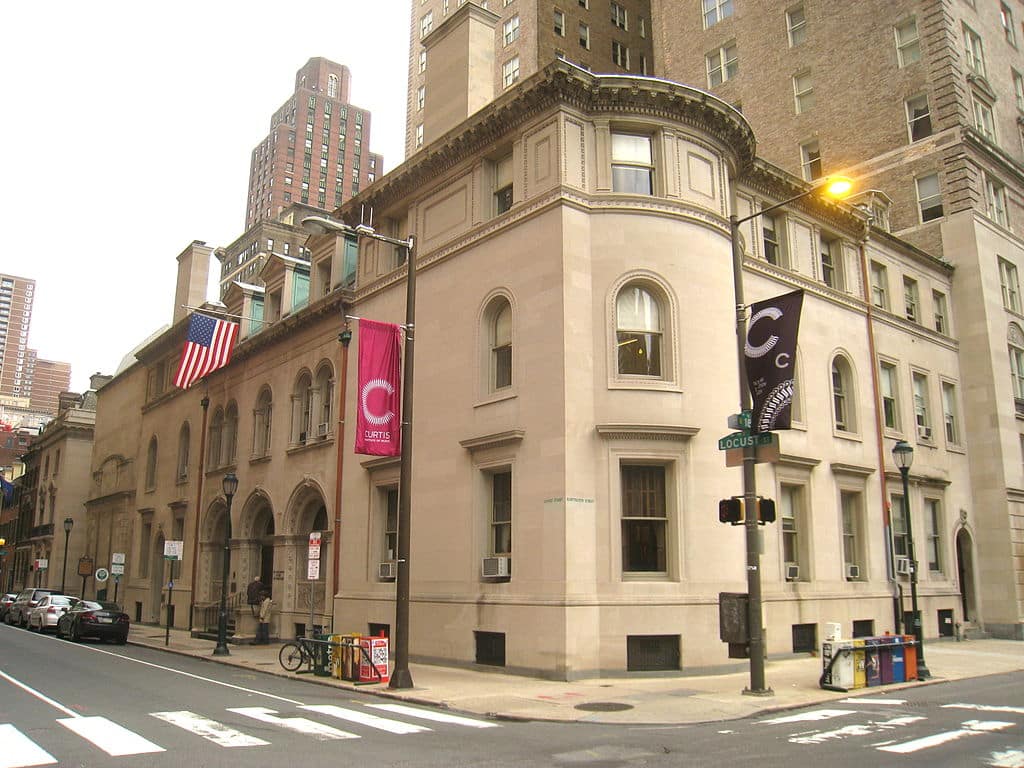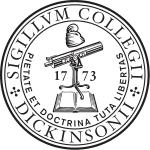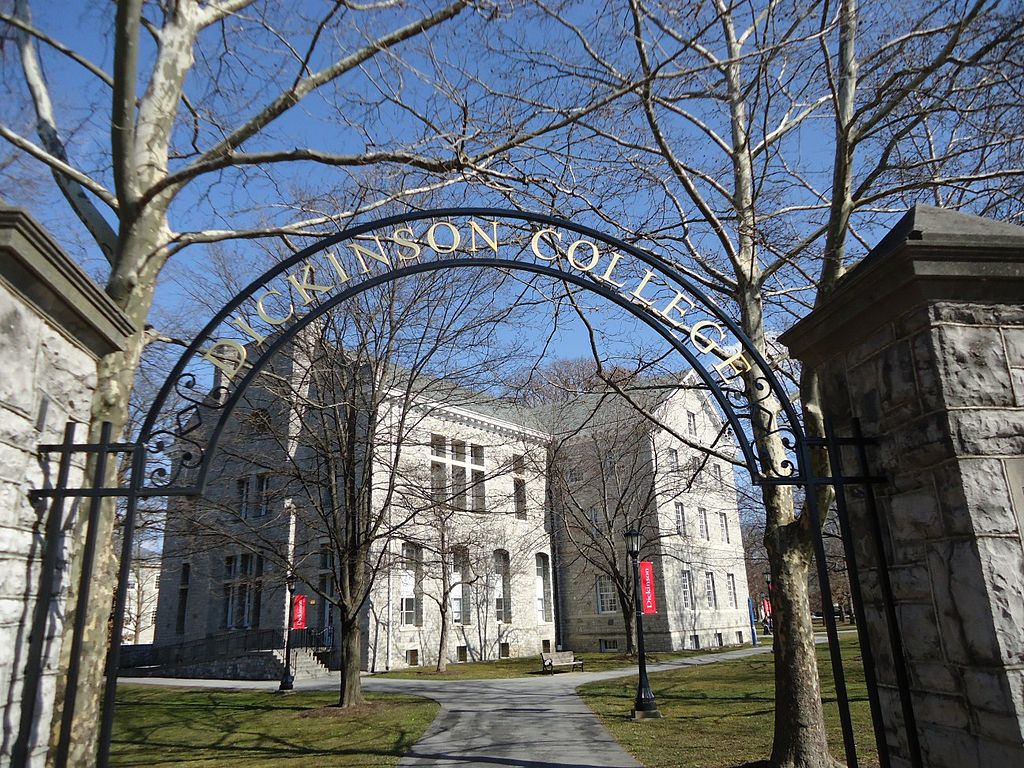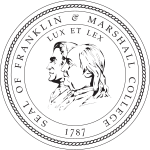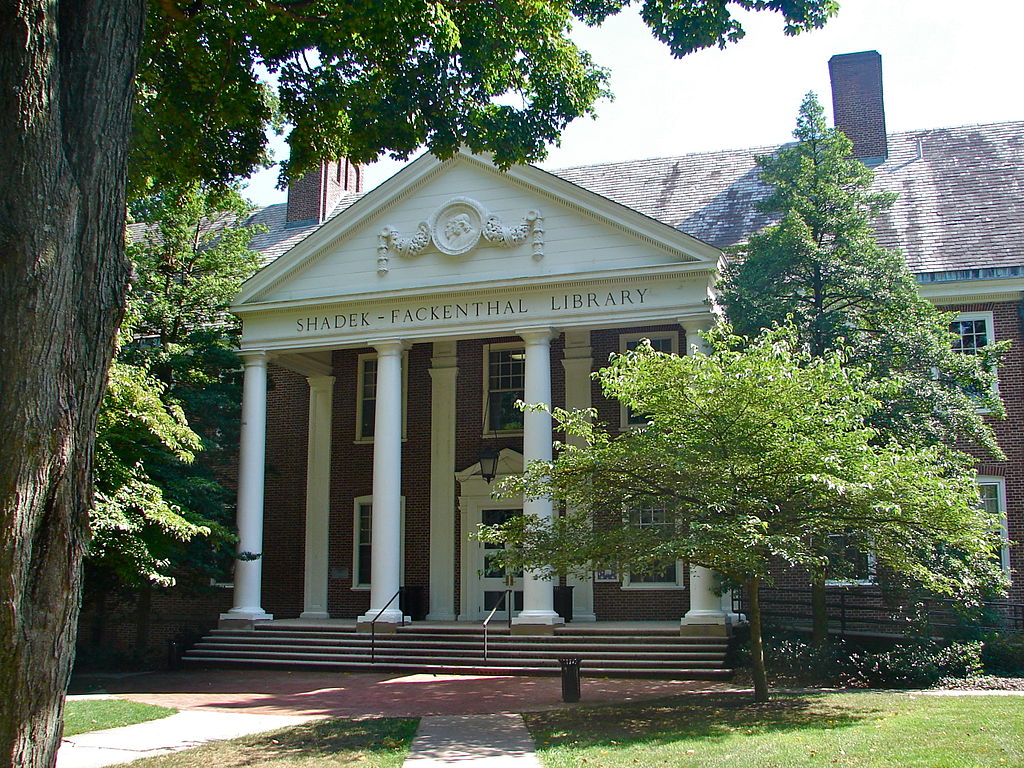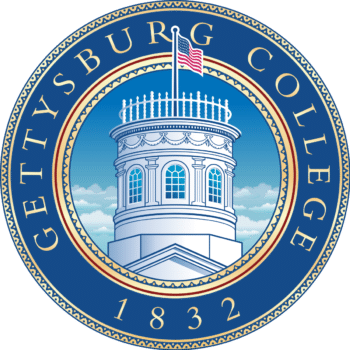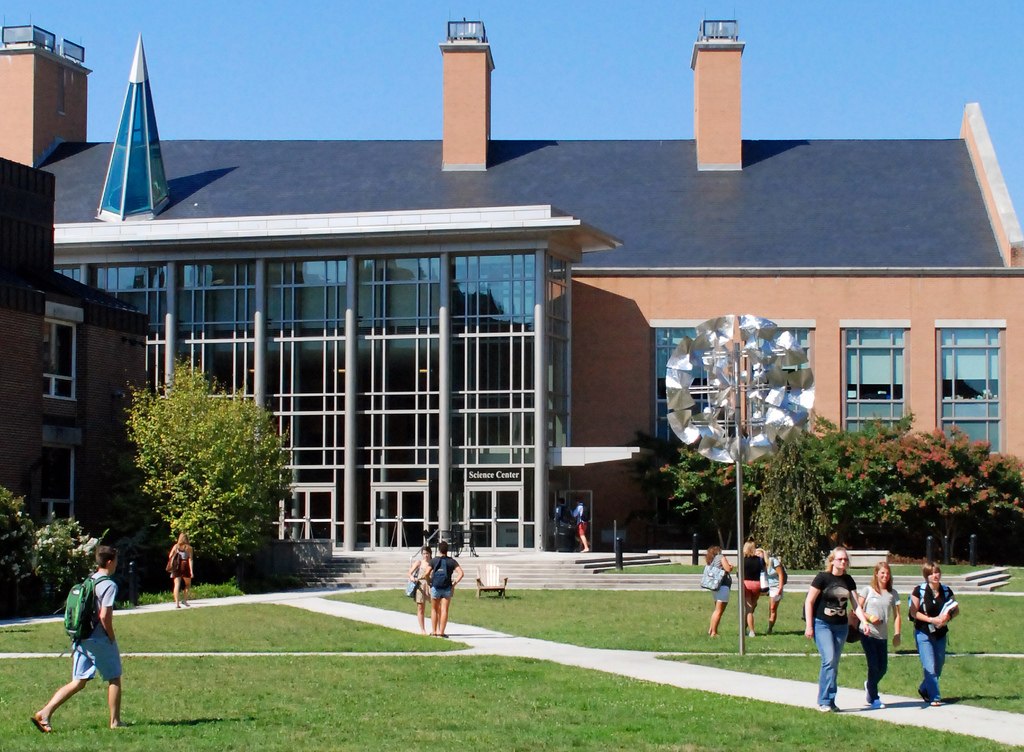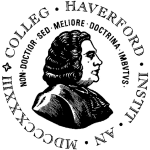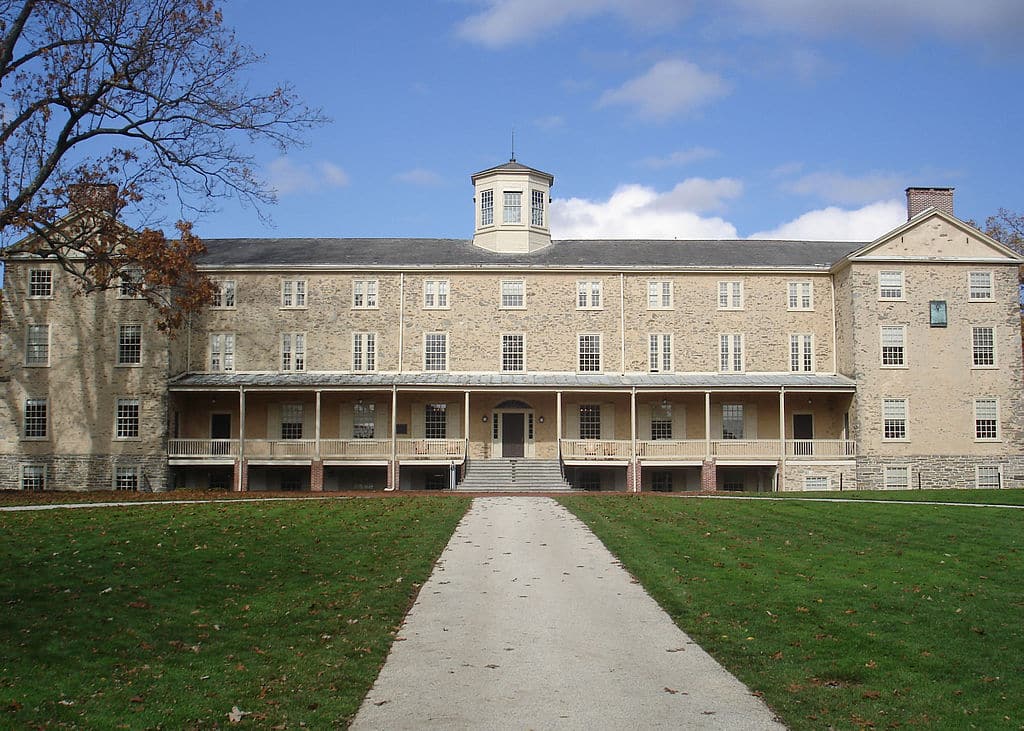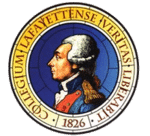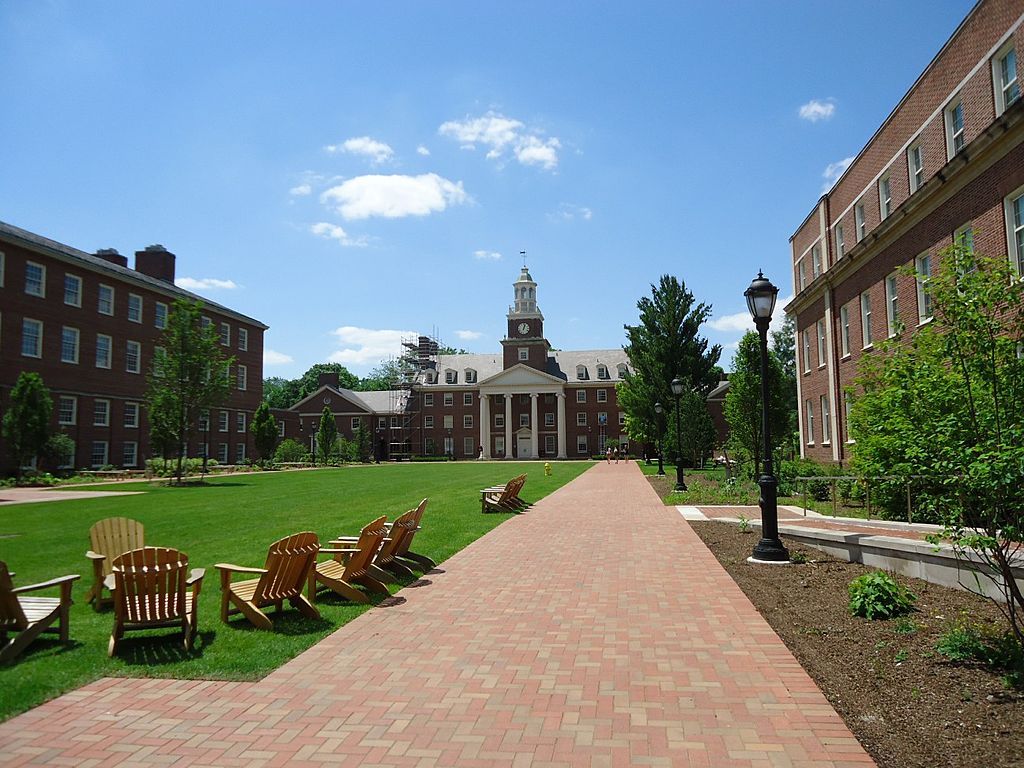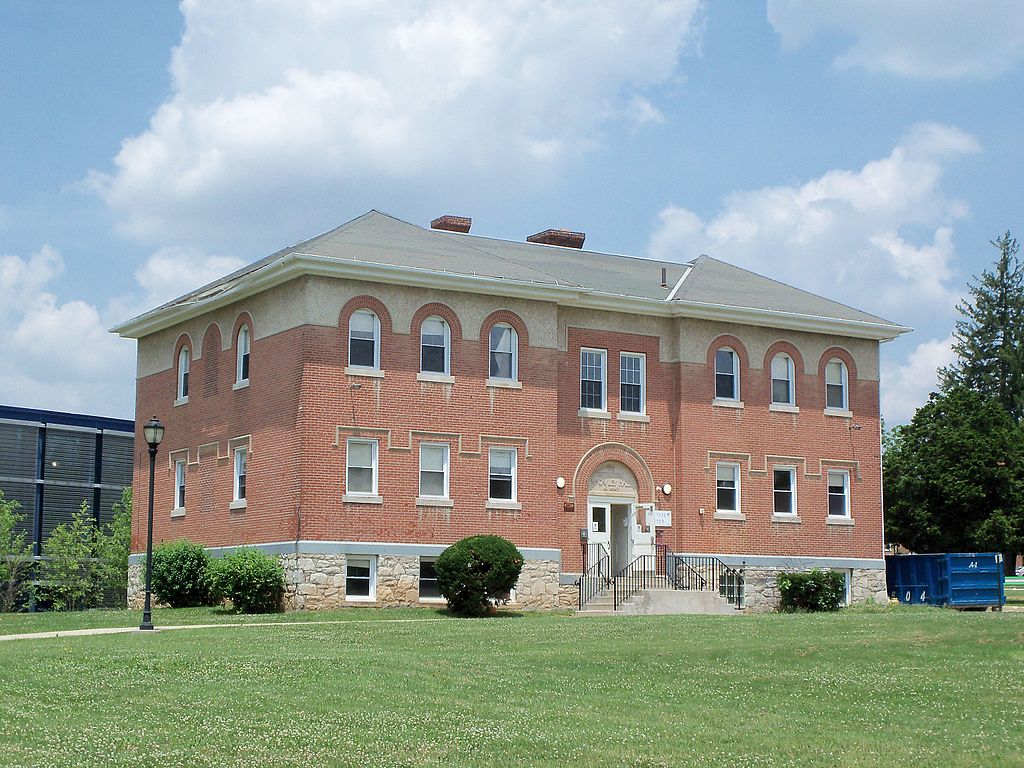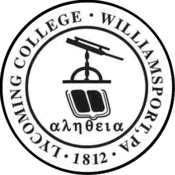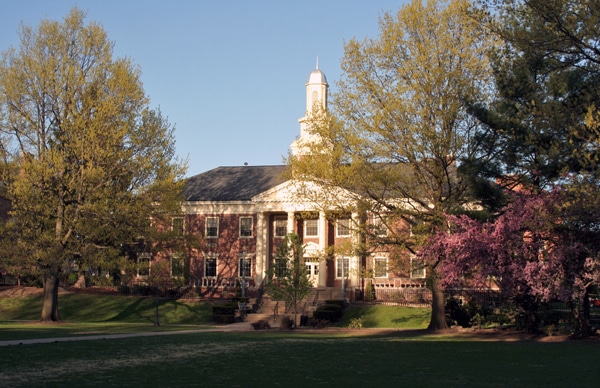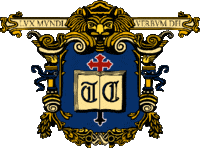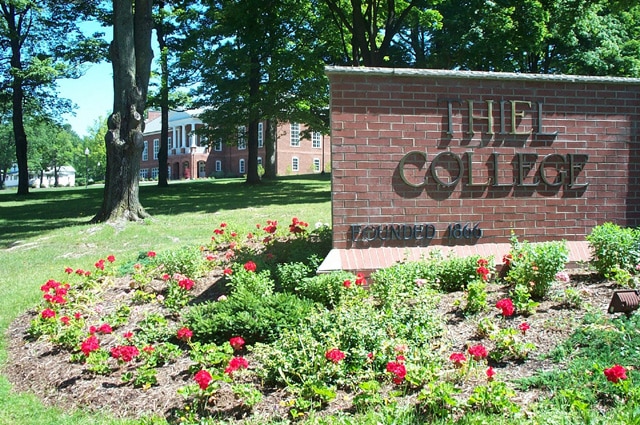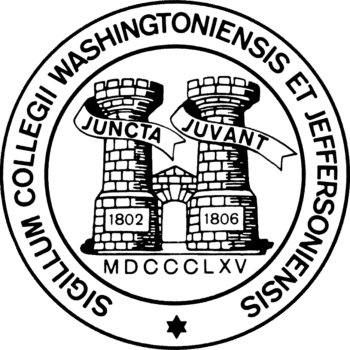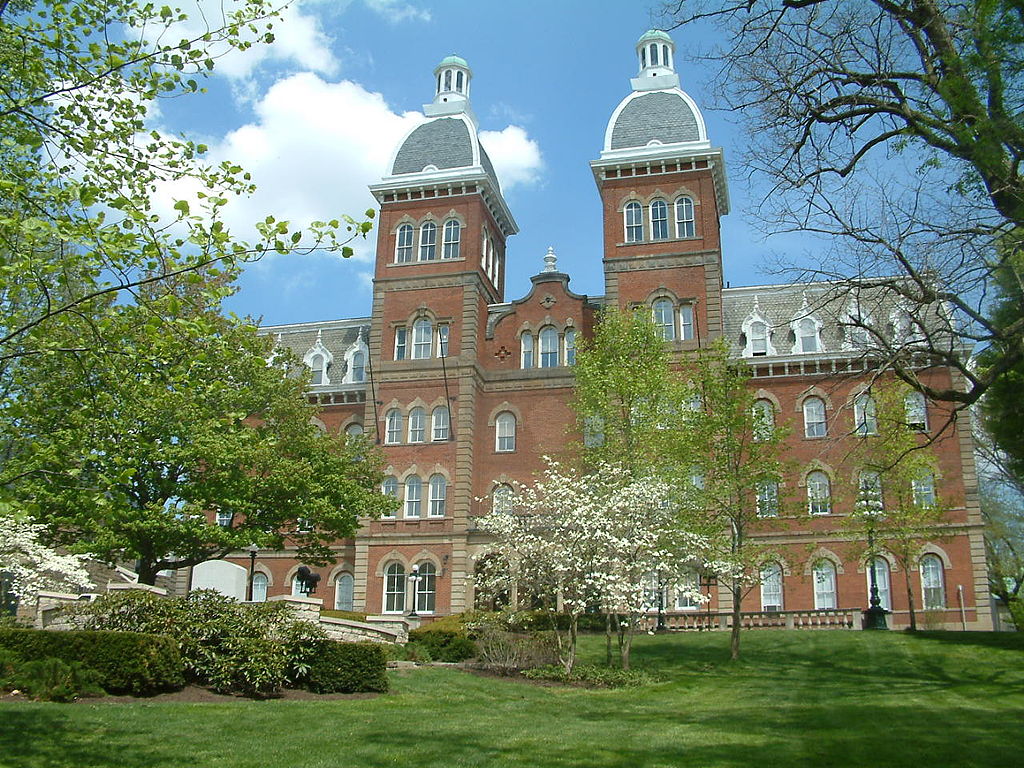Online Colleges in Pennsylvania
Compare all of the best distance education colleges located in Pennsylvania to pursue an online bachelors degree, associates, or online masters program degree. Including cost of tuition, degrees they offer, enrollment rates, faculty, famous alumni, and more.
Recommended Schools
-
Albright College
Reading, Pennsylvania
- 2,267 Total Students
- 49% Acceptance Rate
- 13% Enrollment Rate
- 15 to 1 Student to Faculty Ratio
- 7,645 Total Applicants
- Yes Online Programs
Albright College, a private coeducational college for liberal arts began its journey as Union Seminary, opening its doors for students in 1856. It is thus considered the oldest educational institute in the county of Berk. In its more than 150 year legacy, the institute faced a series of mergers with other institutes founded by the Evangelical Association and the United Evangelical Church. Part of these mergers was change in its original location to its present day campus, based at the base of Mount Penn in Reading in Pennsylvania.
The college was named after Jacob Albright, a German preacher who founded the Evangelical Association. Based on its traditions, the college still maintains its religious affiliation with the United Methodist Church; however, this has not limited the institution in its approach towards racial, cultural and religious diversity and its search for knowledge.
With its futuristic approach, Albright further instills an active community life on its campus. It provides with student organizations and activities for social exchange and service. As part of this, the college has partnered with 13th and Union Elementary School. The collaboration began in 2004 with the Education Department however other departments have also been included over time. This also facilitates the placement of teacher students at Albright. There are sports opportunities at the campus, with colors Red and White, its team ‘Lions’ participate at the NCAA Division III.
The college grants undergraduate and graduate degrees of Arts and Sciences. It offers 50 different programs of study, with a choice of more than 150 combinations of majors. There are Accelerated Programs as well for those choosing to study alongside work with the choice of 7 majors. Its most prestigious facilities include Freedman Gallery in the Center for the Arts, displaying contemporary American Art it is the among the best college galleries in the country; the Gingrich Library and the Gable Health and Counseling Center.
Albright School Facts
- Years Estd.1856
- NicknameLions
- MottoVeritas et Justitia
- Motto Eng.Truth and Justice
- ColorsRed and White
- LocationPennsylvania
- AthleticsNCAA Division III-MAC
- Religious AffiliationUnited Methodist
Famous Albright Alumni
-
Brent Hurley
Business & Industry
Team member of 'Youtube' founding team
-
Ron Dissinger
Business & Industry
CFO and Vice President of Kellogg's Company
-
Matthew Urbanski
Business & Industry
Landscape Architect
-
Lauren Ashburn
Politics & Law
Works at EWTN as the Chief White House Correspondent and Political Director
-
Steven A. Hummer
Politics & Law
Lieutenant General
-
Bob Spitz
Education & Advocacy
A celebrity biographer
-
Eric Artz
Business & Industry
CFO/COO of REI - Recreational Equipment Inc.
-
Alvernia University
Reading, Pennsylvania
- 2,856 Total Students
- 74% Acceptance Rate
- 32% Enrollment Rate
- 12 to 1 Student to Faculty Ratio
- 1,670 Total Applicants
- Yes Online Programs
It was in 1958 that Alvernia University became a liberal arts college and received a charter in 1960. Albeit, its foundation was laid down in 1926, when Bernardine Sisters of the Third Order of Saint Francis found an orphanage, which eventually grew into an elementary school. It further paved way for progress for the institute as it made its way towards being a Private university based in Reading, Pennsylvania.
The values at Alvernia are based in Franciscan tradition, which encourages community building, leadership and service through acceptance of diversity at all levels. The college’s official motto is ‘To Learn, To Love, To Serve’. It is also a strong supporter of environmental stability.
A unique fact about the university is its dedication towards community engagement of its students. On the university campus is the Holleran center for community and global engagement founded by Dr. Thomas Flynn in 2006. The object behind the center was to form strategic partnerships between the students and the communities and engage them underlying career development. Another one its centers, O’Pake institute for ethics, leadership, and public service with the aim of promoting leadership among individuals and community alike. Sports are also pursued with the same enthusiasm at the university. Under the title, ‘Crusaders’ and the colors Maroon and Gold, its teams participate NCAA Division III and the Eastern College Athletic Conference.
Academics at Alvernia consist of undergraduate as well as graduate degree. It offers more than 50 choices of study for Bachelor’s and Pre-professional programs. There are 22 graduate, both Master’s and Doctoral programs for the students to choose from. Its prestigious institutes and facilities include, Franco Library, O’Pake Institute named after Senator Michael O’Pake and Schuylkill Center.
Alvernia School Facts
- Years Estd.1958
- MascotCrusader
- MottoLatin: Doceat Christus vos facere.
- Motto Eng.To Learn, To Love, To Serve
- ColorsMaroon and gold _ _
- LocationPennsylvania
- AthleticsNCAA Division III MAC Commonwealth Conference, ECAC
- Religious AffiliationRoman Catholic
-
Arcadia University
Glenside, Pennsylvania
- 3,984 Total Students
- 59% Acceptance Rate
- 11% Enrollment Rate
- 10 to 1 Student to Faculty Ratio
- 9,641 Total Applicants
- Yes Online Programs
A private university, Arcadia started its journey in Beaver, Pennsylvania as a Beaver Female Seminary, set up in 1853. This seminary was born out of the need of the local population to have a center to gain knowledge. This need for knowledge only increased with time and hence the seminary progressed into a college and eventually into a university to serve the growing needs. It also relocated and finally came to its present location at Glenside, Pennsylvania in 1928.
In its entire journey, growing with the growing needs of its people, the university has instilled the values of acceptance, collaborative growth and diversity in its contribution towards its people. It allows intellectual freedom to be the spirit of its students in understanding local and global issues and steer them towards solutions.
Guided by the same principles, the campus life is all about involvement with each other as well as the community through academic and intellectual means. Students are given various opportunities to connect with their communities. They work with the nonprofit as part along with their studies. They contribute to volunteer opportunities such as in hospitals or healthcare centers, for animal welfare, helping out with children and battling hunger and homelessness in the communities. Besides there are fun events held at the university too. There are choir and musical activities and book clubs. Many student organizations work to raise awareness about different issues such as mental health problems. Athletics is also an important part of campus life; the sports teams take part in NCAA Division III. The campus colors are Scarlet and Grey.
The university offers both undergraduate and graduate programs with more than 150 different choices of study. The academics are divided under the five schools and colleges covering arts, sciences, healthcare and others. The most notable building with the university is the campus itself; the Grey Towers Castle is a national historic landmark.
Arcadia School Facts
- Years Estd.1853
- MascotKnight (formally named Sir Castor)
- ColorsScarlet and Grey
- LocationPennsylvania
- AthleticsKnightsDivision III (MAC Commonwealth conference)
- Religious AffiliationPresbyterian Church (USA)
Famous Arcadia Alumni
-
William R. Evanina
Politics & Law
The National Counterintelligence Executive of the United States; also the director of the U.S. National Counterintelligence and Security Center
-
Julianne Boyd
Entertainment & Arts
A theater director
-
Edith Schaeffer
Social Advocacy & Service
A religious author; Co-founded the L'Abri study center
-
M. Susan Savage
Politics & Law
Formerly held office as the Secretary of State of Oklahoma; also former Mayor of Tulsa, Oklahoma
-
Dorothy Germain Porter
Professional Sports
Amateur golf champion
-
Joe McKeehen
Professional Sports
Champion at World Series of Poker, Main Event in 2015
-
Catherine Gunsalus Gonzalez
Education & Advocacy
Professor Emerita at Columbia Theological Seminary; also a religious author
-
Anna Deavere Smith
Entertainment & Arts
Actress by profession
-
Abbey Ryan
Entertainment & Arts
An artist, painter
-
Bloomsburg University of Pennsylvania
Bloomsburg, Pennsylvania
- 9,737 Total Students
- 88% Acceptance Rate
- 25% Enrollment Rate
- 21 to 1 Student to Faculty Ratio
- 9,795 Total Applicants
- Yes Online Programs
BU is a Public institute whose origin goes back to the establishment of an academy which was founded in 1839. It went through many phases throughout its more than 200 year old journey. Its first transition from being only a literary institute to also a normal school happened in 1869. Its ownership changed in 1919 when the institute was bought over by the Commonwealth of Pennsylvania and it took late 20th century for the college to become a university and be given its present name, happening in 1983.
The university is permanently based in Bloomsburg, a rural part of the Northeastern Pennsylvania and has since its start played strategic role in contributing towards social and economic conditions. Not only through academic contribution that it provides but also bringing in out of region opportunities through its talented workforce.
Student life at the Bloomsburg University of Pennsylvania is all about finding your interests and getting involved. There are over 250 student clubs and organisations that attract students from all interest areas. There are many events planned and held by the students, however the two major events held at the campus are Siblings’ and Children’s Weekend and Renaissance Jamboree Street Fair. Recreation and physical activity is highly encouraged at the campus, with students being asked to ‘Unleash the Inner Husky’. There is a 50 foot indoor climbing wall, a high ropes course outdoor and intramurals and athletic teams. With campus colors Maroon and Gold, its mascot ‘Roongo’, the teams participate at the NCAA Division II. Additional facilitation for the students in need is provided through the Campus Childcare Center.
BU offers both undergraduate and graduate programs. There are 56 undergraduate programs with 58 minors and 20 graduate programs. It also offers Doctoral programs in Audiology and Nursing practice. Its prominent facilities are Nelson Field House and Redman Stadium.
BU School Facts
- Years Estd.1839
- NicknameHuskies
- MascotRoongo
- ColorsMaroon & Gold
- LocationPennsylvania
- AthleticsNCAA Division II PSAC (East)
- Religious AffiliationNot applicable
Famous BU Alumni
-
Mark S. Schweiker
Politics & Law
Formerly served as the Governor of Pennsylvania
-
Jackie Eddy
Professional Sports
A professional MMA fighter in the UFC
-
Dennis Bermudez
Professional Sports
A professional MMA fighter in the UFC
-
Cabrini University
Radnor, Pennsylvania
- 2,428 Total Students
- 72% Acceptance Rate
- 22% Enrollment Rate
- 11 to 1 Student to Faculty Ratio
- 2,544 Total Applicants
- Yes Online Programs
A Private coeducational liberal arts institute, Cabrini began as a female only institute founded in 1957 by the Missionary Sisters of the Sacred Heart of Jesus (MSC). The charter for the Cabrini College was granted by the Commonwealth of Pennsylvania and the first class consisted of only 43 young women. It was in 1970 that the men were admitted to the institute. With openness to inclusivity and considering diversity an important element for growth the college progressed as a university in 2016.
The university is based in Radnor, Pennsylvania and is a Roman Catholic institute. With Christian values at its foundation and the aspiration to become a modern higher education institute in the footsteps of a global approach, the students learn commitment, intellectual engagement and critical reasoning.
Cabrini University named after Saint Frances Xavier Cabrini brings an experience for its students that develop them as a human being working for other human beings. The students find involvement in more than 50 student clubs and organisations. There are university events such as Thanksgiving and Homecoming. The university has academic partnerships where it involves its students with high school students and faculty, in assisting them; there are community partnerships with local social service groups and non profit groups for volunteering work or advocacy. The university also partners with Catholic Relief Services providing the chance to the students to work on global issues. The university has a Domestic Violence Symposium where it brings speakers that address the issue and speak about it. There is an annual celebration held, ‘Cabrini Day’ which is a celebration in the name of Saint Frances Xavier Cabrini and involves activities with a cause. Athletics is prevalent on the campus, with 18 varsity teams, participating at the NCAA Division III. Its mascot is the ‘Cavalier’.
Programs offered at Cabrini include undergraduate programs with more than 35 majors, minors and certifications. There are also five graduate degrees and two part time doctoral degrees. Its notable facilities are The Antoinette Iadarola Center for Science, Education and Technology and Dixon Center.
Cabrini School Facts
- Years Estd.1957
- NicknameCavaliers
- MascotCavalier
- ColorsBlue and White
- LocationPennsylvania
- AthleticsNCAA Division III CSAC
- Religious AffiliationRoman Catholic
-
Recommended Schools
-
Cairn University-Langhorne
Langhorne, Pennsylvania
- 1,043 Total Students
- 99% Acceptance Rate
- 42% Enrollment Rate
- 13 to 1 Student to Faculty Ratio
- 390 Total Applicants
- Yes Online Programs
Cairn is a Private university that was formed with the merger of two separate institutes. The earlier of the two was founded in 1913 to which the university traces its origin. The merger came into effect in 1951 and the institute was named Philadelphia Bible Institute, which provided Biblical training and offered only three year Diplomas. In 1958 the institute was approved by the Commonwealth of Pennsylvania for a four year program. It was in 2012 that the institute adopted its present name.
Presently the institute has come to be located in Langhorne, Pennsylvania. With the values at the university embedded in the Christian faith and the path of Jesus Christ, the students are prepared with a wider perspective on the world and the challenges and issues rising globally.
Cairn University brings an atmosphere of involvement, social and intellectual engagement and empowerment for its students. The students find many opportunities to interact with each other and pursue their interests through the many student clubs and organisations present. There are arts performances and cultural events which provide the students to work on their creative side; there are art galleries as well as production performances brought together by the students. The students engage in spiritual and religious life through campus ministry, chapel services as well as mission trips that take students out in the country and around the globe. This not only results in spiritual development but also community building and volunteering. There are university athletic teams, 12 teams that participate at the NCAA Division III. The official color is Crimson and the mascot is ‘Highlander’.
Academic programs are divided into six schools and colleges that cover liberal arts and sciences, social work, music, divinity, business, and education. The university offers Bachelors as well with more than 30 minor and certification options. There are also Master programs available with the university. Its notable facility is the Masland Library.
Cairn School Facts
- LocationPennsylvania
- Religious AffiliationNot applicable
-
California University of Pennsylvania
California, Pennsylvania
- 7,854 Total Students
- 85% Acceptance Rate
- 30% Enrollment Rate
- 21 to 1 Student to Faculty Ratio
- 3,590 Total Applicants
- Yes Online Programs
Cal U is a public higher education institute whose origins date back to 1852 when efforts began to establish an academy to provide college level courses. Donations and tax money was decided to be used for the academy and so by 1864 the land was purchased and the institute began. A year later it received its charter and it soon progressed as two year teacher training institute. In 1828 it transitioned a four year college and was updated as a university in 1983.
It was the same year that the university was made part of the State System of Higher Education and took on its present name. California University of Pennsylvania has always focused on being a place which focuses career as well as character development. It brings expert faculty, intellectual exchange and scholarly application of its academics.
Besides education, the university has its campus life which takes student experience outside classrooms enabling to be involved in many activities. With a closely knitted student community, there are over 100 clubs ranging from cultural, academic, to recreational, faith based as well as media. There are honor societies as well as Greek life. There are various performing arts opportunities such as Bands, Choirs and dance clubs. There are leadership opportunities such as becoming university ambassadors for prospective and new students or take part in public speaking, conflict resolution and others. For those wanting a spiritual connection, there is campus ministry which offers prayer groups, bible studies, and more. Students also volunteer for philanthropic and community service projects. Besides, the university has its own traditions such as The Big Event, a service initiative towards the community as a mark of appreciation, Martin Luther King Jr. Day of Service and a few others. Athletics is also a huge part of campus life with teams participating at NCAA Division II. The campus colors are Red and Black.
Academic programs provided at Cal U consist of over 130 undergraduate programs and 12 Master’s degree programs. Besides offering on campus programs, it also provides online education, which includes two doctorate programs as well. Its notable department is Eberly College of Science and Technology and Louis L. Manderino Library.
Cal U School Facts
- Years Estd.1852
- NicknameVulcans
- MascotBlaze
- MottoBuilding Character. Building Careers.
- ColorsRed and Black
- LocationPennsylvania
- AthleticsNCAA Division II PSAC (West)
- Religious AffiliationNot applicable
Famous Cal U Alumni
-
Grant Furlong
Politics & Law
Democratic U.S. Congressman from Pennsylvania from 1943 to 1945
-
Garrett Kelleher
Business & Industry
Founder of Shelbourne Development; also the owner of the Irish football club St Patrick's Athletic FC
-
Paul K. Van Riper
Politics & Law
Retired Lieutenant General of the United States Marine Corps
-
Jack Zduriencik
Professional Sports
General Manager of Major League Baseball, Seattle Mariners from 2008 to 2015
-
James Nixon
Professional Sports
NFL Defensive Back-Green Bay Packers
-
Steven Toprani
Politics & Law
District attorney in Washington County, Pennsylvania
-
Shaka Smart
Professional Sports
Head basketball coach of the formerly the VCU Rams
-
Rishaw Johnson
Professional Sports
NFL Offensive Lineman
-
Rick Krivda
Professional Sports
MLB pitcher from 1995 to 1998
-
Carlow University
Pittsburgh, Pennsylvania
- 2,272 Total Students
- 81% Acceptance Rate
- 28% Enrollment Rate
- 11 to 1 Student to Faculty Ratio
- 945 Total Applicants
- Yes Online Programs
A Private and coeducational institute, Carlow began in 1929, however its founders began the journey towards a progressive institute that it is today when they arrived back in 1843. Sisters of Mercy arrived in this year from Carlow, Ireland and began with their mission to provide for the needs of the underprivileged which included educational needs. Throughout their time, the Sisters of Mercy opened many schools and so in 1929, founded Mount Mercy College.
The college transformed gradually into a university, in 2004, Carlow University. It is based in Pittsburgh, Pennsylvania and hails itself as a Catholic university with students being guided through Christian values of commitment and learning but also with present day understanding of innovation and diversity.
Student experience at Carlow is rich with all the elements of modern education. Students are welcomed to the university with a thorough orientation program and further integrated with the institute through student activities and student clubs and organizations. There are academic clubs to cultural organizations to those that provide for leadership activities and skill development. There is also Student Government Association that arranges activities but is also responsible for student concerns and issues. Besides interactive activities and opportunities in a social setting, there are other student services such as campus ministry which serves as a way to maintain spiritual connection. There are other activities that aim for physical and professional wellness of all the students. Sports remain as one of the important student activities; there are eight varsity teams and its athletic teams, ‘Celtics’ is part of NAIA. The campus colors are Purple and Gold. Academically, the university also provides research opportunity through its Office of Sponsored Programs and Research (OSPR). It also has a network of partnerships with community partners for working towards social justice causes.
Academic programs include more than 25 majors and more than 20 minors offered along with 14 graduate degree programs. Accelerated programs and online education are also offered. The notable buildings are A.J. Palumbo Hall of Science and Technology, Frances Warde Hall, Aquinas Hall, Antonian Hall, McAuley Hall, Grace Library and a few more.
Carlow School Facts
- Years Estd.September 24, 1929 by the Sisters of Mercy
- NicknameCeltics
- MascotShammie
- MottoAd Superna, non Superba
- Motto Eng.To the Eternal, not the Perishable
- ColorsGold & Purple
- LocationPennsylvania
- AthleticsUSCAANAIA KIAC
- Religious AffiliationRoman Catholic
Famous Carlow Alumni
-
Michele Fabriz
Business & Industry
President & CEO of MARC USA
-
Peter Francis Flaherty,
Politics & Law
Served as 54th Mayor of Pittsburgh Pennsylvania
-
Celeste Gainey
Business & Industry
Stakeholder in the Pittsburgh Steelers
-
Barbara Mistick,
Education & Advocacy
President of Wilson College
-
Sister Jane Scully
Education & Advocacy
Served as President of Mount Mercy College (now Carlow Univeristy); also became the first woman to serve on Gulf Oil’s board of directors
-
Carnegie Mellon University
Pittsburgh, Pennsylvania
- 12,963 Total Students
- 24% Acceptance Rate
- 32% Enrollment Rate
- 10 to 1 Student to Faculty Ratio
- 20,547 Total Applicants
- Yes Online Programs
A Private and a global research university, CMU was founded from the vision and donations of Andrew Carnegie. Coming from Scotland and being self educated, Carnegie wanted educational opportunities for the working class individuals. It was in 1900 that he donated $ 1 million, which started Carnegie Technical Schools offering certificate programs. The schools further added Bachelor programs and with graduate programs, the institute started to take shape.
It was renamed and transformed over these many years, and came to its present state with the merger in 1967 with Mellon Institute becoming, Carnegie Mellon University. With the diversity and innovation in the fundamental of the education at the institute, it has gained importance for leadership and research on both national and international levels.
Based in Pittsburgh, Pennsylvania, CMU brings an interesting experience for its students involving unique traditions of Scottish heritage after the founder, Andrew Carnegie. There is Kiltie Band and Bagpipers which can be seen performing round the campus. Entertainment is added through events such as Spring Carnival which is a four day event, which is famous for its Buggy Sweepstakes, where students design, build and then race their pushmobiles. Athletics are also a huge part with teams participating at NCAA Division III. Furthermore, student community, called ‘the Bridge’ brings events and organizations, where students experience academics through a different lens, take part in worship activities or are involved in various extracurricular courses such as NASA scuba diving. Research and inventions are a common practice, some achievements to name are; development of first wi-fi network in 1993, development of BLISS – system programming language around 1970 and having 19 Nobel Prize Laureates, 72 Members of the National Academies, 114 Emmy Award Winners, 43 Tony Award laureates among its alumni and faculty. Its campus colors are Cardinal, Black, Grey and White.
Academic offerings consist of Bachelors, Masters as well as Doctoral programs through its seven colleges or schools; some distinguished ones are Tepper School of Business, Dietrich College of Humanities and Social Sciences, H. John Heinz III College: Information Systems, Public Policy and Management and Mellon College of Science.
Carnegie Mellon School Facts
- Years Estd.1900 by Andrew Carnegie1967 (merger with Mellon Institute)
- NicknameTartans
- MascotScotty the Scottish Terrier
- Motto"My heart is in the work" (Andrew Carnegie)
- ColorsCardinal, Black, Grey and White
- LocationPennsylvania
- AthleticsNCAA Division III UAA, ACHA, IRA17 varsity teams
- Religious AffiliationNot applicable
Famous Carnegie Mellon Alumni
-
Cormac Kinney
Science & Medicine
Software inventor and entrepreneur
-
Jim Levy
Business & Industry
Founding CEO of Activision from 1979 to 1986
-
Joshua Bloch
Science & Medicine
Chief Java Architect of Google, also the author 'Effective Java', Jolt Award-winning book
-
Scott Fahlman
Entertainment & Arts
Creator of the emoticon
-
William Ball,
Entertainment & Arts
The founder and director of the American Conservatory Theatre
-
Jack Klugman
Entertainment & Arts
Actor, Emmy Award winner; known for The Odd Couple, Quincy, M.E.
-
Nilofar Bakhtiar
Politics & Law
Senator and Federal Minister for Tourism in Pakistan
-
Charles L. Evans
Business & Industry
Current President and CEO of the Federal Reserve Bank of Chicago, since 2007
-
Padmanabhan Balaram
Science & Medicine
Director of Indian Institute of Science, India
-
Raoul Bott
Science & Medicine
Recipient of Wolf Prize in Mathematics in 2000
-
Robert Dennard
Science & Medicine
Inventor of dynamic random access memory (DRAM); IBM Fellow; also known for having proved the theories leading to Moore's Law
-
Stephanie Kwolek
Science & Medicine
Inventor of Kevlar
-
Cedar Crest College
Allentown, Pennsylvania
- 1,591 Total Students
- 67% Acceptance Rate
- 24% Enrollment Rate
- 10 to 1 Student to Faculty Ratio
- 1,086 Total Applicants
- Yes Online Programs
A women’s liberal arts college, Cedar Crest was founded in 1867. The college has been historically affiliated with United Church of Christ; however it remains to be an independent institute academically. It is situated in Allentown, Pennsylvania and is only one of the two colleges that is a four year higher education institute.
Understanding its duty as a progressive higher education institute in the region and one that is committed solely to women, the college aims to become a transforming experience. It is on a mission to train them into leaders for the future and for a highly complex, diverse and technologically integrated global society.
Student experience at Cedar Crest College is an extensive one, combining academics with arts, culture, student initiative, global experiences and traditions. To begin with, there are variety of student groups ranging from fraternities, literary, to media to health, outdoor and criminal justice. Performing arts is a common culture with students bringing dance, theatre and other creative performances. To better its expose its students to the rising challenges and global issues, it offers study abroad opportunities and has also formed partnership with international institutes. The college has some unique and interesting traditions such as Strawberry Festival, where students have been celebrating the day with strawberries since 1913; there is Big Sis/Lil Sis where senior since 80 years have been helping first year students get around the campus life and Junior Ring Ceremony, where juniors are given their class rings by the President. Athletics are also important part of the student life and its teams, Falcons take part in NCAA Division III. The official university colors are Yellow and White.
Cedar Crest provides following academic programs: undergraduate with 38 major options and nine Master’s degree programs. There are certificate programs offered as well. The prominent departments include Donald P. Miller Family Building for Art, Science and Peace, Harold and Miriam Oberkotter Center for Health and Wellness, Tompkins College Center, Blaney Hall Administration Building, Cynthia L. Blaschak Softball Field and a few more.
Cedar Crest School Facts
- Years Estd.1867
- NicknameFalcons
- MottoReligio, Libertas et Scientia (Latin)
- Motto Eng.Divinity, Liberty and Knowledge
- ColorsYellow and White
- LocationPennsylvania
- Religious AffiliationNot applicable
Famous Cedar Crest Alumni
-
Dr. Blenda Wilson
Education & Advocacy
Former Chancellor of California State University-Northridge and also University of Michigan
-
Suzanne Fisher Staples
Education & Advocacy
Author and international news reporter
-
Dr. Alice Holland
Science & Medicine
Director of Health & Wellness at Swarthmore College and director of Student Health Services at Quinnipiac University
-
Julie Reynolds Willey
Science & Medicine
Director of Delaware State Police Crime Lab
-
Sarah Gyedu Saffo
Business & Industry
Vice President and Senior Business Control Specialist for Bank of America
-
Judy McGrath
Business & Industry
Former CEO of MTV Networks
-
Andrea Joel
Entertainment & Arts
CBS four-time Emmy Award-winning set designer
-
Central Penn College
Summerdale, Pennsylvania
- 1,385 Total Students
- 97% Acceptance Rate
- 42% Enrollment Rate
- 11 to 1 Student to Faculty Ratio
- 582 Total Applicants
- Yes Online Programs
Central Penn is a Private college that traces its origins to the Pennsylvania Business College, which was founded in 1881 by Joseph N. Currey. The college offered career preparation in the field of business, located at the center of the business district in the area. It was in early 20th century, that as the institutes in the area were closing down, in 1922 Professor William H. Hartsock opened Central Pennsylvania Business College. This gradually went on to become a college and then in 21st century saw itself becoming an accredited four year degree granting institute.
The focus of the institute remained the same, even as it proceeded towards becoming a modern day educational institute, that is of being career focused and developing students for their profession, imbibed with integrity and highest standards of professionalism. It is based in Summerdale, Pennsylvania.
There are many factors that set Central Penn College apart from others. Students are joined by the expert faculty as well as community partners, in their academic journey, watching, guiding and preparing them carefully in a close knit interactive environment. Students are also involved in work study programs that not only help them in getting away with finances and tuition costs but also add to the practical experience of working. Besides work and education, students also enjoin each other in their journeys through participation in student clubs. There are 26 student led clubs which cover cultural bodies, alumni association, media, cancer awareness, dance and many other such areas. There are also collaborative spaces where students not only meet for interests but rather to help each other to support. These are Writing Center, where students get through peer assistance, ToastMasters which is focused on improving communication skills or Black Student Union which addresses cultural or ethnic issues. One interesting tradition is ‘Common Hour’ which brings students together on Wednesdays for an hour for presentations by alumni or contributing public figures. There is also athletic participation by the students at USCAA Division II and the campus colors are Maroon and Orange.
Academic programs provided at Central Penn are Associate, Bachelor’s and Master’s degree programs. There are 10 Associate programs, 11 choices in Bachelor programs, and Master’s in Organizational Leadership. Its prestigious facilities are Charles “T” Jones Leadership Library and the Boyer House.
Central Penn School Facts
- Years Estd.1881
- MascotKnights
- ColorsMaroon & Orange
- LocationPennsylvania
- AthleticsUSCAA Division II
- Religious AffiliationNot applicable
-
Chatham University
Pittsburgh, Pennsylvania
- 2,224 Total Students
- 55% Acceptance Rate
- 26% Enrollment Rate
- 10 to 1 Student to Faculty Ratio
- 1,490 Total Applicants
- Yes Online Programs
Chatham’s journey began with the pastor of the Shadyside Presbyterian Church, Reverend William Trimble Beatty began the struggle along with other members from the community to set up a higher education institute women equal to those available for men. With National Association of Women’s Suffrage was established in 1869, the college also paved way the same year on December 11 as Pennsylvania Female College.
It was renamed as Chatham College, after William Pitt, First Earl of Chatham and was given university status in the year 2007. The university accepts diversity and aims to play a huge role in shaping its students understanding of being responsible, active and engaged citizens. It is based in Pittsburgh, Pennsylvania.
Chatham University provides its students with every opportunity at the campus to learn, experience and grow. There are 70 student clubs and organizations present on campus ranging from academic, cultural, business, arts and others. Additionally, there is ‘Activities Fair’ which organizes events on campus. Some traditional events are New Student Ice Cream Social, where students interact with alumni; Mocktails where students organize non alcoholic events throughout the week; Song Contest, a 70 year old tradition; Airband & Senior Skits where students brings skits and other musical performances, besides many other traditional events that exist. There are community service activities as well, where students provide food, clothing or provide other necessities to local shelters. There is also Family & Friends Weekend, where the purpose is to allow families to participate into the lives of their children. There are separate student organizations and activities for the graduate students, such as workshops, lectures, Mug Club event, Honor societies and other. The university students also take part in athletics, at NCAA Division III. The mascot is Carson the Cougar and the campus colors are Purple and Grey.
The academic programs offered at Chatham are undergraduate program with 38 majors, 25 Master’s degree programs and four Doctoral degree programs. Its notable department and facilities are Falk School of Sustainability & Environment, Jennie King Mellon Library, Eden Hall Campus, Mellon Center, Woodland Hall, Berry Hall and a few more.
Chatham School Facts
- Years Estd.December 11, 1869
- NicknameCougars
- MascotCarson the Cougar
- MottoFiliae Nostrae Sicut Antarii Lapides (Latin)
- Motto Eng.That our daughters may be as cornerstones, polished after the similitude of a palace.
- LocationPennsylvania
- AthleticsNCAA Division III PAC
- Religious AffiliationNot applicable
Famous Chatham Alumni
-
Rachel Carson
Science & Medicine
Biologist and zoologist
-
Lea Wait
Entertainment & Arts
Author of mystery novels and children's books
-
Muriel Bowser
Politics & Law
Mayor of Washington, D.C.
-
Lesley Brooks Wells
Politics & Law
United States District Judge
-
Elaine Scarry
Education & Advocacy
Author
-
Walter M. Cabot
Education & Advocacy
Professor of Aesthetics and the General Theory of Value at Harvard University
-
Cheyney University of Pennsylvania
Cheyney, Pennsylvania
- 711 Total Students
- 10 to 1 Student to Faculty Ratio
- Yes Online Programs
CU is a public historically black institute that dates back to 1837. It was founded on the vision as well as the donation of Richard Humphreys. A philanthropist, Humphrey donated $10,000 and also land on his estate and wished that a higher education institute be established for the African Americans. It was founded and named as African Institute. As the institute grew, it relocated to the land of farmer George Cheyney and eventually adopted the name.
It went from being a teacher’s training to a state institute and became a university in 1983. The university is the first institute of higher learning in the country for the African Americans and with its history of providing access to education and opportunity to all, the university stays firms in its commitment to advancing societies through intellectual excellence. It is based in Cheyney, Pennsylvania.
Student growth is a central part of life at Cheyney University of Pennsylvania and there is office as well as Student Government Association that handle student concerns. The SGA is the ‘voice’ of the students at campus and is responsible for being vocal about student concerns, issues and matters of student welfare. The association is also responsible for putting up student events and activities of all kinds, which provide opportunity for social, and cultural amalgamation and awareness and academic exchange among students. It also supports student led groups and organizations and more 30 are present on campus including Honor societies and Greek life. It also brings leadership as well as personal development activities for students. There are both in classroom and outside classroom and extracurricular activities provided for the students. Athletics is also pursued enthusiastically on campus. The university’s teams ‘Wolves’ take part in NCAA Division II and the official colors are Royal Blue and White.
Academic programs offered at CU consist of 18 baccalaureate degrees and three Master’s degree programs. Its prominent buildings and facilities are Marian Anderson Music Center, Leslie Pinckney Hill Library, Wade Wilson Administration Center, Vaux Hall, Marcus A. Foster Student Alumni Center, Carnegie Library and few more.
CU School Facts
- Years Estd.1837
- NicknameWolves
- ColorsRoyal blue and white
- LocationPennsylvania
- AthleticsNCAA Division II PSAC (East)
- Religious AffiliationNot applicable
Famous CU Alumni
-
Edward Rudolph "Ed" Bradley Jr.
Business & Industry
American journalist; known for work on CBS News television program 60 Minutes
-
Clarion University of Pennsylvania
Clarion, Pennsylvania
- 5,368 Total Students
- 96% Acceptance Rate
- 45% Enrollment Rate
- 18 to 1 Student to Faculty Ratio
- 2,215 Total Applicants
- Yes Online Programs
The present day public university traces its origins to the Carrier Seminary of western Pennsylvania which was established in 1867. Back in those days, the idea for a seminary became popular with the citizens who by 1857 drafted a proposal for an institution however the efforts came to a standstill with Civil War. Over the years, it gradually progressed as a normal school and then eventually turned into a college in 1929.
By 1980s the institute was taken over by the newly created Pennsylvania State System of Higher Education. It is named after Carrier family, who donated funds for the institute in its founding years. Clarion is based in Clarion, Pennsylvania and aims to become a source of learning opportunities and prepare students for bright career paths.
Being a student centric educational institute, Clarion University of Pennsylvania brings plenty of opportunities of learning, both inside and outside classrooms. Students are part of student led clubs and organisations, of which more than 130 are present on campus. Not only a platform for social interaction, these also serve as skill learning and leadership development activities. Leadership activities also come in the form of mentoring programs, lectures series, conferences and others. There is Student Senate that voices and represents student concerns, and Clarions Students’ Association (CSA) that brings student activities and events including theatre performances, comedians, sports events and others. Some of its events that are aimed at bringing people together are Good Neighbor Program, where students work towards improving quality of life for the Clarion community, and Autumn Leaf Festival which is the homecoming tradition. There are recreational and athletic opportunities; the university teams ‘Golden Eagles’ participate at the NCAA Division II and the campus colors are Blue and Gold.
The academic programs at Clarion consist of more than 100 undergraduate and graduate programs. There are also Certificates and Certifications available for study. The notable buildings are Gemmell Food Court, Carlson library café, Becht Hall, Gemmell Student Complex and Suhr Library at Venango College.
Clarion School Facts
- Years Estd.1867
- NicknameGolden Eagles
- ColorsBlue and Gold
- LocationPennsylvania
- AthleticsNCAA Division II PSAC
- Religious AffiliationNot applicable
Famous Clarion Alumni
-
Evan John Jones
Politics & Law
Former U.S. Congressman from Pennsylvania, from 1919 to 1923
-
Michael Chapaloney
Politics & Law
Executive director of Tourism, PA Department of Community and Economic Development
-
Vince Sands
Business & Industry
Retired CEO of BNY Mellon Pennsylvania
-
Peter Talleri
Politics & Law
Major General, United States Marine Corps from 1979 to 2013
-
Kurt Angle
Professional Sports
Summer Olympics wrestling gold medalist, 1996; a professional wrestler, and member of the World Wrestling Entertainment Hall of Fame
-
Joe Kapp
Entertainment & Arts
Radio producer of 'Cook and Poni Show', KDKA-FM
-
Randall Silvis
Entertainment & Arts
Author
-
Delaware Valley University
Doylestown, Pennsylvania
- 2,266 Total Students
- 69% Acceptance Rate
- 26% Enrollment Rate
- 15 to 1 Student to Faculty Ratio
- 2,594 Total Applicants
- Yes Online Programs
A private higher education institute, DelVal traces its beginnings to when it as founded as National Farm School offering three year education and with students assisting on the farm. It was started humbly by Joseph Krauskopf, rabbi and also a social justice activist who believed in his cause. Originally for Jewish boys but later opened up for all faiths and by 1969 became coeducational.
Situated in Doylestown, Pennsylvania, the institute went through name changes and as it transformed into a university in 2014, it came to be known as Delaware Valley University. The institute employs a rigorous academic curriculum focusing on intellect as well as skill development of its students for better and more responsible leaders and thinkers.
At DelVal, the students come across a vibrant community of students and faculty and staff members involved in the pursuit of learning. Student involvement begins with taking part in student led clubs, of which more than 70 are present on campus offering various interests and fields. There is also Greek Life on campus. Considering it important for its students, there are leadership learning opportunities as well; the students are offered to learn problem solving and leadership with professionals through Presidential Fellows program and also be serving fellow students by becoming Resident Advisors. These extracurricular activities are complemented through community service opportunities. Students put up their own projects as well as those supported by the teachers. The students also work with local or national non-profit organisations working towards shelter, animal rescue or similar causes. For entertainment and as windows for socialising, there are some unique campus celebrations, which include Family Day, A-Day, Commencement and others. There are also university athletic teams providing recreational activity to students, participating at NCAA Division III. The campus colors are Green and Gold and the mascot is ‘Ram’.
The academic programs at DelVal include over 25 undergraduate majors, six master’s programs, a doctoral degree along with adult education courses. Its prominent facilities are Roth Center for Sustainable Agriculture, Barness Hall and Cooke Hall, Krauskopf Library, Berkowitz Hall, Ulman Hall, Goldman Hall and Samuel Hall and few more.
DelVal School Facts
- Years Estd.1896
- NicknameAggies
- MascotRam
- ColorsGreen Gold
- LocationPennsylvania
- Religious AffiliationNot applicable
Famous DelVal Alumni
-
Charles R. Wira
Science & Medicine
Scientist of Physiology and Neurobiology
-
Laura Owen
Business & Industry
Business executive and entrepreneur
-
Jacob Joseph Taubenhaus
Science & Medicine
Plant pathologist
-
Kenneth Roux
Science & Medicine
Biologist
-
Ted Cottrell
Professional Sports
NFL football player and coach
-
Thomas W. Watson
Business & Industry
CEO
-
DeSales University
Center Valley, Pennsylvania
- 3,136 Total Students
- 78% Acceptance Rate
- 20% Enrollment Rate
- 13 to 1 Student to Faculty Ratio
- 2,706 Total Applicants
- Yes Online Programs
DeSales is a private catholic and coeducational institute for higher education that traces its history to the year 1962 when planning to establish a college in the region began. The college received its charter as the Allentown College of St. Francis de Sales and also the permission to award Bachelor’s degrees in 1964. The college began its classes in 1965. By 1970 it turned into a coeducational institute.
It was in 2000 that not the institute progressed as a university but also was renamed as DeSales University in 2001. It is based in Lehigh County, Pennsylvania. The university has its values firmly rooted in the Roman Catholic tradition which aims to prepare students for larger purpose in life; as successful professionals, responsible leaders and morally high individuals.
DeSales brings vibrant community of learners and future leaders as they get involved in multiple activities and opportunities around the campus. The students get their first experience as leaders by working for their fellow students by tutoring them, mentoring for them, organising events and entertainment for them through the Campus Activities Board. Some annual events include Fall Fest, Winter Carnival, Spring Fling, game nights, concerts, comedy shows and many others. Students can also be involved in either running or taking part in student organisations, learning and socialising at both ends. There are over 100 student led clubs and originations ranging from various interests like recreational, academic, fraternities and sororities and others. There is also emphasis on community service and besides this students also have to contribute 40 hours of their time while at the university in serving the community. For faith based activities, there is campus ministry which holds chapel, social justice activities as well as retreats for a complete spiritual immersion. The university also has athletic participation at NCAA Division III. The campus colors are Red and Blue and the mascot is ‘Bulldog’.
Academic programs include undergraduate programs with over 30 majors, 10 Masters Degree programs (including online) and two Doctoral programs. Its notable facilities are Hurd Science Center, Gambet Center, Dooling Hall, Labuda Center, Trexler Library, Schubert Theater, and Iacocca Studio.
DeSales School Facts
- Years Estd.1965
- ColorsBlue and Red
- LocationPennsylvania
- Religious AffiliationRoman Catholic
Famous DeSales Alumni
-
Dee Roscioli
Entertainment & Arts
Actress; played Elphaba in the Broadway production of the musical Wicked
-
Steven Burns
Entertainment & Arts
Former host at Blue's Clues on Nickelodeon
-
Amy Golden
Social Advocacy & Service
Owner at REACH
-
Joseph F. Leeson, Jr.
Politics & Law
Judge of the United States District Court for the Eastern District of Pennsylvania
-
Peter Augustine Lawler
Politics & Law
Member of President Bush's Council on Bioethics; also award-winning professor, author, and lecturer
-
Marnie Schulenburg
Entertainment & Arts
Actress
-
Alexie Gilmore
Entertainment & Arts
Actress - Dr. Sara Dillane on the Fox television series New Amsterdam
-
Drexel University
Philadelphia, Pennsylvania
- 25,595 Total Students
- 75% Acceptance Rate
- 13% Enrollment Rate
- 10 to 1 Student to Faculty Ratio
- 28,757 Total Applicants
- Yes Online Programs
Drexel is a private research university which traces its origins to the vision of Anthony J. Drexel, financier and philanthropist from Philadelphia. It was in year 1891 that his vision was materialised as Drexel Institute of Art, Science and Industry was founded. It wasn’t until 1914 that the institute awarded its first degrees; by 1927 started awarding Masters Degrees and Doctoral degrees by 1965.
By 1970 the university was officially given university status and took on its present name. With the ideals of innovation and progress of its founder, the university has emerged as a modern day education and learning institute which is preparing its students for a broader vision and professional success.
Drexel University offers a comprehensive student life, with opportunities that make the student’s entire journey more adventurous. The primary most important activity is leadership development and engagement which comes across as students take up leadership roles in student led organisations or those serving as student representative bodies. There are also event planning activities where students organise activities and programs on campus. Women are also encouraged on for leadership development particularly. Students are also allowed to set up other student organisation and clubs, as per their interests whether political, social, cultural, recreation or other and collaborate with others having similar interest promoting learning outside classrooms. There is also Greek Life on campus. Students get to enjoy arts and creativity as well as display their talents through theatre, dance, music and exhibits. There is also focus on community service as students get involved through projects and activities, such as interacting with residents and working against social justice issues. There are athletic teams at the university as students compete at NCAA division I; with colors Blue and Gold and mascot ‘Mario the Magnificent’.
Academic programs at the university include more than 80 undergraduate majors and more than 120 graduate degree programs including certificates. Its prominent schools/facilities are LeBow College of Business, Pennoni Honors College, Thomas R. Kline School of Law, Westphal College of Media Arts & Design, W.W. Hagerty Library, Queen Lane Library, and more.
Drexel School Facts
- Years Estd.1891 (1891)
- NicknameDragons
- MascotMario the Magnificent
- MottoScience, Industry, Art
- ColorsBlue and Gold
- LocationPennsylvania
- AthleticsNCAA Division I - Colonial Athletic Association
- Religious AffiliationNot applicable
Famous Drexel Alumni
-
John C. Browne
Science & Medicine
Former Director of the Los Alamos National Laboratory
-
Dorcas Bates Reilly
Business & Industry
Invented the green bean casserole while an employee at home economics department, Campbell Soup Company
-
William Sidney Pittman
Entertainment & Arts
Architect, designed many notable buildings in Washington, D.C. and Texas
-
David Kresh
Entertainment & Arts
Poet and reference specialist at the Library of Congress
-
Susan Seidelman
Entertainment & Arts
Filmmaker; popular for film Smithereens,the first American independent film that competed at the 1982 Cannes Film Festival
-
Moshe Kam
Education & Advocacy
49th President of IEEE and also Dean of the Newark College of Engineering
-
Myrtelle Canavan
Science & Medicine
One of the first female pathologists; also namesake of Canavan disease
-
Mary Corinna Putnam Jacobi
Science & Medicine
First woman to become a member of the Académie Nationale de Médecine
-
Earle I. Mack
Politics & Law
Former U. S. ambassador to Finland, also partner of The Mack Company, and an award-winning film producer
-
Paul Baran
Science & Medicine
One of the inventors of packet switching and a founding father of the Internet
-
Norman Joseph Woodland
Science & Medicine
Inventor of barcode technology
-
Duquesne University
Pittsburgh, Pennsylvania
- 9,404 Total Students
- 76% Acceptance Rate
- 26% Enrollment Rate
- 13 to 1 Student to Faculty Ratio
- 7,354 Total Applicants
- Yes Online Programs
Duquesne is a private Catholic university that was founded by the Spiritans, a group of missionaries in year 1878. It was eventually set up as an institute to for the underprivileged and was called Pittsburgh Catholic College. With operating in a rented facility to its own building, the college rapidly added facilities as it grew further.
Based in Pittsburgh, Pennsylvania, the university was renamed officially as Duquesne University of the Holy Ghost. With its catholic traditions, the institute is committed towards excellence, holding high moral values, which it believes is important for not only professional commitment but personal development and service to communities.
Student life at Duquesne is extensive yet diversified offering a range of activities and programs for students, to be engaged in active learning and learning to fill multiple roles. It brings Student Government Association which lets students work as leaders for other students and the Program Council which is involved in organizing events and activities on campus. For students, there are also opportunities to be part of student led clubs of which over 180 thrive on campus. There is also active Greek Life. Deeming it important, the university involves its students in a spiritual journey as well and for that has campus ministry. It brings prayer and worship programs, and also has a liturgical ministry. The ministry considers community engagement as an important element in development and so encourages student participation at community events and for social causes and social welfare. The students also find an entertainment outlet in athletic participation as the university teams compete at NCAA Division I. The campus has a mascot called ‘The Duke’ and its official colors are Red and Blue.
The academic programs offered at Duquesne include undergraduate programs with over 70 majors and minors, and 85 graduate programs including both master’s and doctoral. Its prominent departments are John G. Rangos Sr. School of Health Sciences, the Bayer School of Natural, A.J. Palumbo School of Business Administration and facilities are Libermann Hall, Mellon Hall, Rockwell Hall, and others.
Duquesne School Facts
- Years Estd.October 1, 1878 (1878-10-01)
- NicknameDukes
- MascotThe Duke
- MottoSpiritus est qui vivificat (Latin)
- Motto Eng.It is the Spirit that gives life.
- ColorsRed and Blue
- LocationPennsylvania
- AthleticsNCAA Division I A-10, NEC
- Religious AffiliationRoman Catholic
Famous Duquesne Alumni
-
Peter Brunette
Entertainment & Arts
Film critic at The Hollywood Reporter; also film historian
-
Bill Hillgrove
Professional Sports
Sports journalist, radio personality, and also sports broadcaster
-
Tom Tribone
Business & Industry
Founder and CEO of Guggenheim Global Infrastructure Company
-
Most Rev. David Zubik
Social Advocacy & Service
Bishop of Green Bay from 2003 to 2007 and Bishop of Pittsburgh from 2007 to present
-
Jimmy Smith
Professional Sports
Former MLB player; also won one World Series
-
Catherine Baker Knoll
Politics & Law
Lieutenant Governor of Pennsylvania
-
Samuel A. Weiss
Politics & Law
Judge and Pennsylvania Congressman from 1941 to 1946
-
Keith Donohue
Education & Advocacy
Novelist; also Director of Communications for the National Historical Publications and Records Commission
-
Delfin Carbonell Basset
Education & Advocacy
Lexicographer and creator of the Unialphabet system
-
Mark Tabbert
Education & Advocacy
Author of American Freemasons: Three Centuries of Building Communities
-
William Schultz
Business & Industry
President and CEO of Fender Musical Instruments Corporation
-
East Stroudsburg University of Pennsylvania
East Stroudsburg, Pennsylvania
- 6,828 Total Students
- 84% Acceptance Rate
- 26% Enrollment Rate
- 22 to 1 Student to Faculty Ratio
- 5,982 Total Applicants
- Yes Online Programs
ESU is a public university and is part of the Pennsylvania State System of Higher Education (PASSHE). It was founded in 1983 as a Normal School offering two year education. It was a privately owned institute but was transferred to Commonwealth of Pennsylvania in 1920 and so by 1927 was authorised to grant degrees, however it wasn’t until 1969 that it issued its Masters degree.
It was in 1983 that it officially transitioned into East Stroudsburg University and has always aimed to be an institute providing education fostering innovation as well as cultural diversity and social change, equipping students with the knowledge and skill set that will help them work for better communities and global societies.
Activities and opportunities for student learning and growth are the central part of the campus life at ESU. Students are welcomed into the university through an extensive orientation programs and other programs introducing them to campus, its activities and the social, academic and extracurricular life. There is Student Senate, a student representative body working as a bridge between the university and the students, working for their issues, grievances and demands. Similarly there is Campus Activities Board, which is solely responsible for bringing activities and events of interests and entertainment on campus. As students engage in these, they find further opportunities through the student led organisations, over 140, working on campus, as learning units and social platforms. As students get involved in various directions, they also find that there is campus ministry which serves to provide spiritual support. Students also get to practice meditation which relieves them of their stress and allows them to relax and improve focus. For more cultural integration, there is Office of Multicultural Affairs (OMA) and the recreation center on campus provides for physical activities. Students also engage in athletics, participating at NCAA Division II. The campus colors are Black and Red.
Academic programs at the ESU consist of undergraduate programs with over 40 majors, and 26 graduate degree programs. The prominent facilities on campus are Kemp Library and Mekeel Child Care Center.
ESU School Facts
- Years Estd.1893
- NicknameWarriors
- ColorsBlack and Red
- LocationPennsylvania
- AthleticsNCAA Division IIPSAC (East)
- Religious AffiliationNot applicable
Famous ESU Alumni
-
Ruth Williams
Professional Sports
All-American Girls Professional Baseball League player
-
Joseph Battisto
Politics & Law
Pennsylvania House of Representatives
-
Count Wiley
Social Advocacy & Service
Chiropractor and West New York, New Jersey Commissioner of Public Works
-
Charlie Brenneman
Professional Sports
Professional Mixed Martial Artist, formerly for the UFC's Lightweight Division
-
Mervin Heller, Jr.
Professional Sports
President at United States Tennis Association (USTA)
-
Eastern University
Saint Davids, Pennsylvania
- 3,505 Total Students
- 52% Acceptance Rate
- 25% Enrollment Rate
- 10 to 1 Student to Faculty Ratio
- 2,941 Total Applicants
- Yes Online Programs
Eastern is a coeducational and Christian higher education institute that was established in year 1925 as Eastern Baptist Theological Seminary. It was initially established as a department of the seminary and as it expanded it relocated and became a separate institution, named as Eastern Baptist College. By 1972, it dropped the term Baptist from its name.
In 2001 it was officially given university status and hence came to its present name. Today it is based in St. Davids, Pennsylvania. With Christian centered education, the university is committed to bringing excellence into education and learning, producing individuals that are critical as well as responsible with duties towards their societies.
With its active campus life Eastern University has always been on the forefront of positive development in students. The activities on the campus consist of student led clubs, a variety of which exist to provide learning activities outside classrooms. There is also the Student Government Association and Student Activities Board (SAB), which open up chances for the students to play active role in campus leadership and hold office positions. Through these the students plan and organise many yearly learning, engaging as well as entertainment events. There are also very many multicultural events held at the campus which aim at acceptance and celebration of cultural diversity helping each student to grow their ideas and understand various perspectives. Maintaining spirituality and faith on campus, a separate campus department works to provide activities to the students; there are yearly mission trips, student ministries working towards community outreach for homeless, those in prison etc, chapel session, worship teams and prayer activities. Students also find recreation through its athletic teams competing at NCAA Division III. The university’s official colors are Maroon and White and its mascot is ‘Eagle’.
The academic programs at Eastern are over 85 Bachelors degree programs including minors, certifications and pre professional programs, over 50 Masters, Doctoral and Certificate programs. Its notable departments/facilities are Esperanza College, Palmer Theological Seminary, Templeton Honors College, Harold C. Howard Center/Warner Memorial Library, Bradstreet Observatory and Julia Fowler Planetarium.
Eastern School Facts
- LocationPennsylvania
- Religious AffiliationAmerican Baptist
-
Edinboro University of Pennsylvania
Edinboro, Pennsylvania
- 6,548 Total Students
- 96% Acceptance Rate
- 36% Enrollment Rate
- 19 to 1 Student to Faculty Ratio
- 3,509 Total Applicants
- Yes Online Programs
Edinboro is a public university that goes back to year 1857 when it was founded as Edinboro Academy and the original purpose of the institute was to train teachers. It was state funded and by 1861 had become affiliated with the state, renamed as Northwest State Normal School. It continued so, and by 1927 had also added liberal arts curriculum to its programs. With this, the college was once again renamed and finally became a state college in 1960.
It gained university status in year 1983 and becoming part of the Pennsylvania State System of Higher Education (PASSHE), was named as Edinboro University of Pennsylvania. It is based in Edinboro, Pennsylvania, the university aims to contribute to communities by producing individuals who are curios minded, forward thinkers and open to diversity.
Along with academic excellence, an active campus life at Edinboro complements overall student development. There are over 140 student run clubs and organisations that serve as primary units for providing platform for activities, learning as well as socialising. This also includes the Greek Life. Working in student interest is also the student government which is the representation body. It also provides the opportunity to work as leaders on campus. Similarly, there are ambassadors which represent the university outside the campus at events. Besides, practical learning experience, there is also the National Society for Leadership and Success, which offers programs for development of leadership skills through trainings, seminars, conferences etc. Equal importance is paid to spiritual and character development of every student and so campus ministry provides trips, fellowships, prayer programs etc ensure that faith based needs are fulfilled. There is also athletic participation, through 18 teams at NCAA Division I and II. The mascot is ‘Fighting Scott’ and the campus colors are Red and White.
Academic programs at Edinboro consist of over 100 undergraduate programs including majors and minors, as well as graduate programs through three schools and five colleges. Its prominent departments/facilities are Porreco College, Frank G. Pogue Student Center, Baron-Forness Library, Rose Hall, Earp Hall and few more.
Edinboro School Facts
- Years Estd.1857
- NicknameFighting Scots
- ColorsRed and White
- LocationPennsylvania
- AthleticsNCAA Division I EWLNCAA Division II PSAC (West)
- Religious AffiliationNot applicable
Famous Edinboro Alumni
-
Robert Carothers
Education & Advocacy
President of University of Rhode Island from 1991 to 2009
-
Dave Filoni
Entertainment & Arts
American film writer, and animator; the director of Star Wars: The Clone Wars film and series
-
Joseph Newton Pew
Business & Industry
Founder of Sun Oil Company, now called Sunoco
-
Mike S. Zafirovski
Business & Industry
Former CEO of Nortel Networks and also the former President of Motorola
-
Vicki Van Meter
Science & Medicine
Youngest female pilot to cross the continental United States
-
Merritt Eldred Hoag
Education & Advocacy
Formerly served as the President of University of North Georgia
-
Denayne Davidson-Dixon
Professional Sports
Former Arena Football League player
-
Jack R. Anderson
Entertainment & Arts
Former director of the University of Pittsburgh bands
-
Elizabethtown College
Elizabethtown, Pennsylvania
- 1,820 Total Students
- 71% Acceptance Rate
- 21% Enrollment Rate
- 12 to 1 Student to Faculty Ratio
- 3,453 Total Applicants
- Yes Online Programs
Elizabethtown is a private liberal arts institute that was established in 1899 by the Church of the Brethren. Looking to establish an educational institution for their denomination, they were granted the charter by the Commonwealth of Pennsylvania. It was in 1921 that it was granted the permission to award degrees. And by late 20th century, in 1993 the college was handed over to an independent Board of Trustees.
The college is based in Elizabethtown, Pennsylvania, and has been dedicated to creating a strong educational foundation for its students and to evolve them professionally, personally, socially and morally by promoting thinking, reasoning, diversity, and social duty for change and advancement.
At Elizabethtown College, students find a range of activities to be involved in. One such program is the Called to Lead, a learning and skill development platform, promoting students to become leaders with vision and fill their lives with purpose. There is also the office of student Activities which provides opportunities for the students to put their leadership skills to practice by leading and taking part in more than 70 student run clubs and organisations, or by serving as student representatives and working to improve campus life by participating at the Student Senate. To integrate its newcomers further into the campus life, there are Living-Learning Communities (LLCs), which provide added academic and social support. Students also enjoy the college traditions and the annual events such as Homecoming and Family Weekend, Into the Streets, TGIS Weekend, First-Year Walk and few more. Students also find themselves working for the community by volunteering for activities such as fighting hunger, homelessness, programs for children etc. The college also has athletic participation at NCAA division III. The campus mascot is the ‘Blue Jays’ and the colors are Royal Blue and Gray.
The academic programs at the college are undergraduate programs with over 75 majors and minors. Its prominent facilities are James B. Hoover Center for Business, Steinman Center, Edward R. Murphy Center, S. Dale High Center for Family Business, Leffler Chapel and Performance Center, High Library, Annenberg Center, Baugher Student Center and others.
Elizabethtown School Facts
- Years Estd.1899
- MascotBlue Jays
- MottoEducate for Service
- ColorsRoyal Blue & Gray
- LocationPennsylvania
- Religious AffiliationChurch of Brethren
Famous Elizabethtown Alumni
-
Dennis Hollinger
Education & Advocacy
President of Gordon-Conwell Theological Seminary
-
Carl Bowman
Education & Advocacy
Sociologist, Author, Educator at Bridgewater College in Bridgewater, VA
-
Richard L. Bond
Business & Industry
Former Chief Executive Officer of Tyson Foods
-
Charles Walker
Social Advocacy & Service
Nonviolence trainer and civil rights and peace activist.
-
David Hickernell
Politics & Law
State Representative at Pennsylvania House of Representatives from 2003 to present
-
Bill Foster
Professional Sports
Former head coach Duke men's basketball
-
Bruce Smith
Politics & Law
Former State Representative at Pennsylvania House of Representatives from 1981 to 2007
-
Gannon University
Erie, Pennsylvania
- 4,416 Total Students
- 76% Acceptance Rate
- 19% Enrollment Rate
- 12 to 1 Student to Faculty Ratio
- 4,213 Total Applicants
- Yes Online Programs
Gannon University (GU) is a private, Catholic and inclusive higher co-educational institute that is located in Erie, Pennsylvania. Under the 1925 charter of Villa Maria College, Gannon was established as a College of Arts and Science, a two year-educational institute, by John Mark Gannon. In 1941, John Mark bought the Strong Mansion, one of the gorgeous buildings of downtown Erie. The building is now known as the “Gannon’s Old Main” and considered as the focal point of the current campus. In 1944, Gannon College of Arts and Science changed its status to be a four-year college for males and its name to be Gannon College. It was converted into a co-educational institute in 1964. It also opened its graduate school in the same year. In 1979, Gannon College was granted the university status and consequently its name was changed finally to be Gannon University. Erie, where the university is located, is the 4th largest city in Pennsylvania. Erie is one of the highly kinetic ports of the Great Lakes. Due to its location, GU is only 2-4 hours driving away from Cleveland, Buffalo, and Pittsburgh.
The university mission is preparing global citizens through its offered liberal arts, sciences and professional programs. Following the Catholic traditions, the university aims at spreading the values of bible, faith, community service and leadership among the students.
Gannon University is ranked as one of the Top Tier Master’s Universities in the “America’s Best Colleges 2010” list by U.S. News & World Report’s. It offers 59 undergraduate degrees, 27 master’s degrees, and 4 doctoral degrees. In addition it offers 11 pre-professional programs and 7 associate’s degrees. The university consists of 3 main colleges and subdivided into 5 schools. The most famous among them are Dahlkemper School of Business, Morosky College of Health Professions and Sciences, and Villa Maria School of Nursing.
GU School Facts
- Years Estd.1925
- NicknameGolden Knights
- MascotVictor E. Knight
- MottoSanitas, Scientia, Sanctitas
- Motto Eng.Health, Knowledge, Holiness
- ColorsMaroon and gold
- LocationPennsylvania
- AthleticsNCAA Division II PSAC (West)
- Religious AffiliationRoman Catholic
Famous GU Alumni
-
Stephen Joseph Grilli
Professional Sports
An American professional baseball player. A former player in many teams including in Major League Baseball (MLB) for the Detroit Tigers and Toronto Blue Jays.
-
John R. Hornaman
Politics & Law
An American politician and a former democratic representative of the 3rd District in the Pennsylvania House of Representatives from 2007 for 6 years.
-
William V. Gehrlein
Education & Advocacy
An American professor of business administration in Delaware University and a memorable researcher in the field of social choice theory, decision theory and graph theory.
-
Andy Lorei
Professional Sports
An American famous soccer player currently in Minneapolis City team.
-
Zaid AlKhas
Professional Sports
A Jordanian professional basketball player. A former player in Zain of the JBL and Chinese basketball club Qingdao DoubleStar and a current player in Orthodox Amman a part of JBL (Jordanian Basketball League).
-
R. Tracy Seyfert
Politics & Law
An American female politician. A former representor of the 5th District in the Pennsylvania House of Representatives from 1997 to 2000.
-
Daniel Cudmore
Entertainment & Arts
A famous Canadian actor. Commonly known for his roles as the mutantPiotr Rasputin/Colossus in the X-Men film franchise, and as the Volturi Felix in the Twilight Saga films.
-
Geneva College
Beaver Falls, Pennsylvania
- 1,714 Total Students
- 73% Acceptance Rate
- 27% Enrollment Rate
- 15 to 1 Student to Faculty Ratio
- 1,678 Total Applicants
- Yes Online Programs
Geneva College (GC) is a Christian educational college that offers liberal arts degrees and is located in Beaver Falls, Pennsylvania at the northern region of Pittsburgh. The college was established by the minister of RPCNA “John Black Johnston” in 1848. It was founded in Northwood, Ohio and named after the Swiss center of the Reformed faith movement to be Geneva Hall. Geneva Hall was closed concisely during the American Civil War then resumed its operations till 1880. A lot of sites were investigated to transfer Geneva Hall to another region that is more near to urban locations. College Hill region Beaver Falls, Pennsylvania was chosen as a new location for Geneva Hall. Harmony Society donated the land of the current campus to construct its new campus which was done by 1881 and consequently, its status has been changed to be a college. A major project that involved re-establishment of Pennsylvania Route 18 that passes through the college campus and Reeves Stadium was completed on successive stages in 2007 and 2009 respectively.
Geneva College code of conduct involves praising God’s grace through educating and guiding young people to develop reliable leaders capable of serving the Christ.
Geneva College is rated as one of the top three value schools among the northern region universities according to the U.S News and World Report. Christian Universities online has ranked GC as the 6th among the top 25 beautiful Christian colleges in the U.S. Geneva’s Chemistry Department has been approved by the American Chemical Society as a distinction along with other 5 chemistry departments in the CCCU for around 50 years.
The college has 13 departments through which more than 50 undergraduate degrees offered including more than 50 majors and more than 40 minors. In addition, it offers two aviation dual degrees, and three independent undergraduate degrees. GC offers 4 master’s degrees including the Master’s Degree in Counselling that has been rated as the 8th in Pennsylvania.
GC School Facts
- Years Estd.1848
- NicknameGolden Tornadoes
- MascotTurbo the Tornado
- MottoPro Christo et Patria
- Motto Eng.For Christ and Country
- ColorsOld Gold and White
- LocationPennsylvania
- Religious AffiliationReformed Presbyterian Church
-
Gratz College
Melrose Park, Pennsylvania
- 292 Total Students
- 5 to 1 Student to Faculty Ratio
- Yes Online Programs
Gratz College (GC) is the first independent academic institution that provides Jewish studies in the North America region. It is a private educational institute that is currently located in Melrose Park, Philadelphia, the largest city in Pennsylvania State offering liberal arts educational programs based on Jewish aspects. The history of the College’s name “Gratz” returns back to honor the Gratz family members who showed high patriotism, economic success, charity, and obligation towards the Jewish community. Rebecca Gratz, one of the famous Gratz family members, successfully inaugurated the Hebrew Sunday School in 1838 in Philadelphia through which she conducted several classes to teach Jewish women and men. Later on, she and Isaac Leeser together founded the Hebrew Education Society of Philadelphia in 1848. The idea of establishment of Jewish based educational institute like Gratz College returns back to 1856, when Hyman Gratz, Rebecca’s brother, and the Hebrew Education Society of Philadelphia agreed to manage founding a Hebrew teachers’ college. After Rebecca’s death in 1869, Hyman decided to donate a high portion of their money for the sake of the establishment of a teacher’s college providing Jewish educational services.
GC code of conduct is to provide the Jewish community with well prepared and highly educated generations of scholars, educators and leaders. It aims at establishing robust Jewish community through providing educational services based on Jewish aspects and values.
The College offers 10 graduate programs; one doctoral and 9 masters’ programs in addition to 3 undergraduate programs. Moreover It offers some professional certificates and some online programs. Its slogan is education without borders so in addition to the previously mentioned academic programs, it offers more educational services for adults and young people through a number of adult programs, cultural programs, a Jewish community high school and the Tuttleman Library for Jewish studies.
Gratz School Facts
- Years Estd.1895 (1895)
- MottoEducation Grounded in Jewish Values
- LocationPennsylvania
- Religious AffiliationJewish
-
Grove City College
Grove City, Pennsylvania
- 2,444 Total Students
- 81% Acceptance Rate
- 44% Enrollment Rate
- 13 to 1 Student to Faculty Ratio
- 1,541 Total Applicants
- Yes Online Programs
Grove City College is a private Christian college of liberal arts. It was established by Isaac C. Ketler in 1876 under the name of Pine Grove Normal Academy. Since its establishment, the college declared itself as non-denominational and students were accepted regardless of their faith or beliefs. Accordingly, Students at the college are not required to sign any declaration of faith, however; they have to attend 16 chapel services per semester. During World War II, the college was selected by the U.S. navy to participate in Electronic Training Program that was offered to groups of the Marine and Navy at the college facilities. Since 1963 till 2016, the college was censored by the American Association of University Professors due to violation of tenure and academic freedom caused by the firing of Dr. Gara. This is the longest period for any college to be under such condition. In 2005, the college established a Center for Vision and Values that expanded their scope of humanity studies.
The college states its mission to provide quality education at affordable prices in a completely Christian environment. Faith and freedom are considered the core values for the college.
Currently Grove City campus covers a 180-acres land in a rural region of Grove City, Pennsylvania. In 2008, the college purchased from Edinboro University an observatory telescope located sixty miles away from its campus. The official colors for the college are crimson and white while its mascot is called Willie the Wolverine.
The College is divided into 22 departments with 54 majors. It is accredited by the Middle States Commission on Higher Education. Grove City is ranked by US News and World Report as the second most politically conservative college. Students applying to the college are not allowed to accept any federal financial aid including grants and scholarships. Alternatively, they can apply to its own program which is called Student Freedom Fund.
Grove City School Facts
- Years Estd.1876
- NicknameWolverines
- MascotWillie the Wolverine
- MottoLux Mea (My Light)
- ColorsCrimson and White
- LocationPennsylvania
- Religious AffiliationUndenominational
Famous Grove City Alumni
-
Alejandro Chafuen
Business & Industry
former CEO of Atlas network
-
Larry Critchfield
Professional Sports
former NFL player
-
Harold Willis Dodds
Education & Advocacy
former President of Princeton University
-
Frank Soday
Science & Medicine
Chemist, participated in developing alternative ways to use synthetic fibers
-
Matt Kibbe
Education & Advocacy
former CEO of FreedomWorks and current president of Free the People
-
Gwynedd Mercy University
Gwynedd Valley, Pennsylvania
- 2,582 Total Students
- 68% Acceptance Rate
- 31% Enrollment Rate
- 10 to 1 Student to Faculty Ratio
- 1,146 Total Applicants
- Yes Online Programs
Gwynedd Mercy University is a catholic university established by the Sisters of Mercy in 1948 as a junior college. The college started to grant baccalaureate degree in 1963. Fifty years later, the college achieved University Status changing its name to the current one.
The university states its mission is to provide education that combines between the Gospel values and the liberal arts. It also emphasizes on active learning and community service.
The campus covers a 160-acres property that was built as a large Gregorian mansion for Frances Bond who was an investor banker. It was known at that time as the Willowbrook Farm. The mansion is still used by the university as Assumption hall. There are currently several distinctive buildings and facilities including Loudres library, the Lincoln library, Theatres including the Julia Ball Auditorium, Frances M. Maguire hall in addition to Alexandria, Siena, St. Brigid and Loyola residential halls. Among traditions of the university, is the mercy week which is celebration of the foundation of Sisters of Mercy through organizing educational and service-related programs. The university official colors are red and gold while its mascot is the M.E.R.V. Its athletic teams compete in the NCAA Division III as members of the National Collegiate Athletic Association and CSAC.
The university offers 40 programs granting Bachelor of Science, Bachelor of Arts, associate degrees, master’s degree, doctoral degree in addition to certificate programs. The university is completely accredited by the Middle States of Colleges and Schools. Students applying to the university may benefit from one of eleven scholarship programs, some of which are dedicated to transfer students. All students enrolled in 2016 received financial aid. Enrolled students travel to do part of their studies abroad in one out of 26 countries.
Gwynedd Mercy School Facts
- Years Estd.1948
- NicknameGriffins
- MascotM.E.R.V
- MottoVeritas et Misericordia
- Motto Eng.Truth and Mercy
- ColorsRed and gold
- LocationPennsylvania
- AthleticsNCAA Division III CSAC
- Religious AffiliationRoman Catholic
-
Harrisburg University of Science and Technology
Harrisburg, Pennsylvania
- 2,099 Total Students
- 26 to 1 Student to Faculty Ratio
- Yes Online Programs
Harrisburg University of Science & Technology (HUST) is a four-year private non-profit educational institute that is located in Pennsylvania’s State Capital, Harrisburg. In 1981, it was noticeable that the manufacturing power of the industrial city, Harrisburg, had intensively dropped. The situation continued to be worse to the extent that Harris was rated to be the second most distressed city in the United States. Both the region and the work market were in a bad need of well-educated labor force that could refresh the region’s economy. Additionally, although there were around 20 colleges in the surrounding area of Harrisburg, the region lacked a technology-based educational institution. Hence, the community leaders at that time decided that the region is in deep need of establishment of a technical based educational institute. The main scope of that institute is to prepare well educated generation through providing them with the needed academic, technical, scientific and professional skills that could match the surrounding workforce requirements in the 21st century. Therefore, it was decided to inaugurate HUST in 2001. It was the first technology-based non-profit educational institute to be established in Pennsylvania in more than 100 years. The university opened its doors to the first class of students in 2005 and was accredited in 2009.
The university mission is to provide its students with creative academic programs in science and technology related fields that match with the national and global careers needs. It encourages students seeking science and technology related careers, foster entrepreneurship invention and economy growth.
HUST campus consists of 6 research centers and institutions. It offers four-year bachelor degrees in 8 majors. Additionally, it offers three undergraduate programs on an online system. It also offers 6 master’s degrees in more than 10 concentrations. Additionally, HUST offers a unique program known as early college program or dual enrollment program in which high school students could join to earn credit courses that could be counted for their university degrees later on or even transferred to another universities or colleges.
HUST School Facts
- Years Estd.2001
- LocationPennsylvania
- Religious AffiliationNot applicable
-
Holy Family University
Philadelphia, Pennsylvania
- 2,711 Total Students
- 74% Acceptance Rate
- 35% Enrollment Rate
- 12 to 1 Student to Faculty Ratio
- 1,328 Total Applicants
- Yes Online Programs
Holy Family University (HFU) is a Roman Catholic private higher co-educational institute for liberal arts studies that is located in Philadelphia City, Pennsylvania State in the United States. It was established by the Congregation of the Sisters of the Holy Family of Nazareth, the pacemaker of all of the families in 1954. HFU establishment followed the inauguration of the Holy Family Teacher Training School that was founded in 1934. At the beginning, HFU was opened as an affiliate educational institute to the Catholic University of America. Launching of graduate programs took place in 1990 followed by launching of many other programs during the following 20 years.
Its campus lies within the Roman Catholic Archdiocese of Philadelphia, a special spiritual province affiliated to the Roman Catholic Church of southeastern Pennsylvania. In addition to the main campus in Philadelphia, HFU has some other satellite campuses that are located in Newtown, and on Bristol Pike in Bensalem in Pennsylvania State. The College offers several residential options to the students as St. Joseph’s Hall, Garden Residence, and the Stevenson Lane Residence. Its athletic teams who are called the tigers compete in NCAA Division II and CACC. Its official colors are dark blue, light blue and white.
HFU considers its students, faculty and staff as an interconnected family despite their diversity in backgrounds and origins. It offers its educational services under the umbrella of Judeo-Christian vision to spread respect, integrity and responsibility among its students.
The university consists of 4 schools offering different programs in arts, science, education and health sciences. It offers 6 undergraduate programs and 5 graduate programs. In addition, a doctoral program in education was launched starting January 2011. HFU offers a unique dual program with Conwell-Egan High School to allow high school students to attend university courses for credit to be transferred later after joining undergraduate education. The university is ranked as the second best regional university in the North in 2017 according to the U.S. News and Reports.
HFU School Facts
- Years Estd.1954
- NicknameTigers
- MottoTeneor votis
- Motto Eng.I am bound by my responsibilities
- ColorsBlue and White
- LocationPennsylvania
- AthleticsNCAA Division II CACC
- Religious AffiliationRoman Catholic
-
Immaculata University
Immaculata, Pennsylvania
- 2,961 Total Students
- 79% Acceptance Rate
- 15% Enrollment Rate
- 9 to 1 Student to Faculty Ratio
- 1,599 Total Applicants
- Yes Online Programs
Immaculata University is a co-educational Roman Catholic university in Malvern, Pennsylvania. The university was established by the Sisters, Servants of the Immaculate Heart of Mary. The university is associated with the Roman Catholic Church over the Archdiocese of Philadelphia. Immaculata was founded as a women’s college and named “Villa Maria College”, in 1920, as the first Catholic school for women in Philadelphia. Nine years later, the name was altered to Immaculata College. It is affiliated to the greater Immaculate Heart of Mary community that comprises an academy for girls and the neighboring House of Studies. The University was converted into co-educational in the fall of 2005. The land of Immaculata was purchased by the sisters in 1906. The original land was 198 acres, which was expanded to around 373 acres. Immaculata was given the university status, by the Pennsylvania Department of Education, In June 2002 and the college is now known as Immaculata University.
Immaculata campus features several distinctive buildings including Alumnae Hall, the Mary A. Bruder Center, The DeChantal and Marian Halls, Gillet Hall, the Good Counsel Hall, Lourdes Hall, Loyola Halland Nazareth Hall. The oldest and the principal building of the campus is Villa Maria while the newest building is the three-storied Gabriele Library. Mighty Macs is the university sports teams’s nickname, while their colors are blue and white. Mighty Macs are affiliated with the Colonial States Athletic Conference.
Immaculata offers more than 60 programs, comprising accelerated and online career-oriented programs. The university offers also over and above a dozen masters, doctoral, and graduate programs. Immaculata is regionally recognized by the Commission of Higher Education Middle States Association of Colleges and Schools.
Immaculata School Facts
- Years Estd.1920
- NicknameThe Mighty Macs
- MascotMac
- MottoScientia Floret Virtute
- Motto Eng.Knowledge Flourishes in Virtue
- ColorsBlue, White
- LocationPennsylvania
- AthleticsNCAA Division III CSAC
- Religious AffiliationRoman Catholic
Famous Immaculata Alumni
-
Megan Jane Brennan
Politics & Law
the Postmaster General of the United States.
-
Michael Francis Burbidge
Social Advocacy & Service
an American prelate of the Roman Catholic Church and he is the current Bishop of Arlington
-
Mary Pat Clarke
Social Advocacy & Service
an American politician represents the district 14 in the Baltimore City Council
-
Olga Gorelli
Entertainment & Arts
well known for her musical talents as a composer and pianist
-
E. Gail de Planque
Science & Medicine
an American nuclear physicist
-
Indiana University of Pennsylvania
Indiana, Pennsylvania
- 13,835 Total Students
- 88% Acceptance Rate
- 30% Enrollment Rate
- 19 to 1 Student to Faculty Ratio
- 9,566 Total Applicants
- Yes Online Programs
Indiana University of Pennsylvania (IUP) is a research based public educational institute that is located in Indiana County, Indiana. It was established in 1871 by Indiana County investors as Indiana Normal School. Normal Schools at that time were following State system in only being accredited by the commonwealth. However, they were independent private educational institutes. Indiana Normal School opened its doors for students’ admission in 1875. At that time, the school composed of only one building, John Sutton hall, which is located nowadays in the heart of IUP campus as one of the national famous historic monuments. Indiana Normal School has expanded academically and physically along the years and consequently its name changed several times to be Indiana State Teachers College then Indiana State College in 1920 and 1959 respectively. Finally it inaugurated its first doctoral program in 1965 when its name was also changed to its current name.
Currently, IUP campus occupies more than 350 acres with several distinctive buildings and facilities as oseph Uhler Hall, Zink Hall, Davis Hall, Edna Sprowls Hall, Willis Pratt Hall, University Towers, Samuel W. Jack Cogeneration Power Plant, Susan Snell Delaney Hall, Donna D. Putt Hall and Stephenson Hall. IUP is currently a leading public research based university devoted to serving the public community through offering undergraduate, graduate and doctoral degrees as well as scholarships. IUP aim is to provide its students with an environment enriched with high standard education in addition to diverse cultures, mental challenges and other student activities. The university official colors are crimson and slate while its mascot is called Norm.
The university campus covers IUP is one of the largest two universities following the Pennsylvania State System of Higher Education (PASSHE) System and first to offer doctoral degrees. It is also one of the top five largest universities in the Commonwealth and the only university in the state system that offers graduate instruction at the PhD level. IUP appeared in the best college list since 2002 according to Princeton Reviews and 1995 according to U.S. News and World Report.
IUP consists of 9 colleges and schools and more than 50 departments among them are Eberly College of Business and Information Technology and School of Graduate Studies and Research. IUP offers undergraduate degrees in more than 130 programs and graduate degrees in more than 60 programs.
IUP School Facts
- Years Estd.1875
- NicknameCrimson Hawks
- MascotNorm (referring to its history as a normal school)
- ColorsCrimson and Slate
- LocationPennsylvania
- AthleticsNCAA Division II PSAC (West)
- Religious AffiliationNot applicable
Famous IUP Alumni
-
Timothy Richard
Politics & Law
An American businessman and politician, commonly known as Tim Richard. A Republican representor of Western Pennsylvania's 12th congressional district in the election of U.S. House of Representatives in 2010.
-
Tom Creighton
Politics & Law
An American politician and a member of Republican Party. One of the Pennsylvania house representors for the 37th District from 2001 till 2013.
-
John Stuchell Fisher
Politics & Law
An American Politician and a Republican member. A former Pennsylvania State senator from 1901 till 1907 and the 29th Pennsylvania Governor from 1927 till 1931.
-
Gerald L. Zahorchak
Education & Advocacy
An American educator. A former Education Secretary of Pennsylvania Department of Education from 2006 till 2010. A former superintendent of the Greater Johnstown School District in Cambria County from 1997 till 2003.
-
Jeff Burk
Entertainment & Arts
An American author, editor and novel writer. Author of the short novel “Shatnerquake” and Super Giant Monster Time book.
-
Ian Gallanar
Entertainment & Arts
An American director of theatres. Current Artistic Director of the company of Chesapeake Shakespeare.
-
Micah Johnson
Entertainment & Arts
An American broadcast journalist. A former anchor at CNN Cable News Network in Atlanta City, Georgia State. Current CEO of Entegy Group - MediaStars Worldwide Company in Scottsdale City, Arizona State.
-
John Kinport Brallier
Professional Sports
An America professional football player. Commonly known as Sal Brallier. First recognized paid professional football player when paid to play for the Latrobe Athletic Association team against the Jeanette Athletic Association team in 1895.
-
Juniata College
Huntingdon, Pennsylvania
- 1,583 Total Students
- 77% Acceptance Rate
- 18% Enrollment Rate
- 13 to 1 Student to Faculty Ratio
- 2,604 Total Applicants
- Yes Online Programs
Juniata College is the first college to be established by the Church of the Brethren. It was founded in 1876 as a coeducational institute. It was initially named the Huntingdon Normal School till 1877 when its name was changed to Brethren Normal School. Two years later, the college moved to its first permanent building on the current campus; the Founder’s hall, which was then known as “the Building”. The college name was changed again in 1894 to Juniata College after the nearby “Juniata River”. Renaming was based on the Brethren Church’s Annual Meeting’s decision to avoid using the term “Brethren” in the college name. The name was legally approved two years later.
Juniata main campus is located in Huntingdon, Pennsylvania covering 110 acres with several distinctive buildings as the Founders Hall was recognized as a LEED Gold building after the renovations in 2009 as it uses geothermal energy for heating and cooling. Other distinctive buildings include Carnigie Hall which was built in 1907, the von Liebig Center for Science and the Suzanne von Liebig Theatre that were built after 2000 and Nathan Hall which is the newest building on campus. There are other off-campus sites that belong to the university as the 315-acre Baker-Henry Nature Preserve, the Baker Peace Chapel and the Raystown Field Station covering 365 acres on Raystown Lake. The official colors of the university are old gold and yale blue while its mascot is called Eagles. The college athletic teams compete in Division III of the National Collegiate Athletic Association. There are several annual events that are held at Juniata campus since its establishment as Lobsterfest, Storming of the Arch, Mountain Day and Madrigal dinner.
The college is divided into 27 academic departments offering programs in 21 different areas of studies. The university uses programs of emphasis rather than majors. Juniata has been ranked 105th by U.S. News & World Report in 2014 and 133rd by Forbes.com in 2015.
Juniata School Facts
- Years Estd.1876
- MascotEagles
- MottoVeritas Liberat (Latin)
- Motto Eng.Truth Sets Free
- ColorsOld Gold & Yale Blue
- LocationPennsylvania
- Religious AffiliationNot applicable
Famous Juniata Alumni
-
Carol McFate
Business & Industry
Chief Investment Officer of Xerox Corporation
-
Henry H. Gibbel
Business & Industry
CEO of Lititz Mutual Insurance Company
-
James Madara
Business & Industry
CEO of American Medical Association
-
John Kuriyan
Science & Medicine
winner of the Richard Lounsbery Award for extraordinary scientific achievement
-
Morley J. Mays
Education & Advocacy
former president of Elizabethtown College
-
Keystone College
La Plume, Pennsylvania
- 1,459 Total Students
- 98% Acceptance Rate
- 30% Enrollment Rate
- 11 to 1 Student to Faculty Ratio
- 999 Total Applicants
- Yes Online Programs
Keystone College is a private college located in Northeastern Pennsylvania. The college was established in 1868 by Dr. John Howard Harris. It operated initially in the local Baptist church in Factoryville after receiving a charter from the Commonwealth of Pennsylvania. In 1934, the college name was changed to Scranton-Keystone Junior College before it was shortened in 1944 to Keystone Junior College. It got its current name in 1995. The college was approved to offer bachelor degree by the Pennsylvania Department of Education and was approved to offer master’s degree in 2014.
Keystone main campus covers 276 acres located at the gateway to the Endless Mountains, Pennsylvania with several distinctive academic buildings as Capwell Science Hall, Brooks Hall, Miller Library, Kemmerer Hall and Harris Hall which is named after John Howard Harris; the founder of Keystone Academy. Campus administrative buildings include Hedgewood, Hibbard Campus Center, Patrick Hall, Sabiston Hall, Sickler Hall, Sisson Hall and Ward Hall while athletic facilities include Gambal Athletic Center, Ned Boehm Field, Edmunds Field, Christy Mathewson Field and Diane Murray Tennis Center. Additionally, the college offers students several residence halls as Moffat Hall, Frear/Reynolds Hall, The Dr. Edward G. Boehm and Mrs. Regina E. Boehm Hall, Hollinshead Hall, Tewksbury Hall and Davis Hall. The college athletic teams, which are called the Giants, compete in the Colonial States Athletic Conference.
The college offers undergraduate and graduate programs in around 70 majors. It also offers a study abroad program that allows students to study a summer, year or semester abroad.
Keystone School Facts
- Years Estd.1868
- NicknameGiants
- MottoProgress Through Effort
- LocationPennsylvania
- Religious AffiliationNot applicable
Famous Keystone Alumni
-
Suzanne Fisher Staples
Entertainment & Arts
journalist and author
-
Sandra Major
Politics & Law
member of the Pennsylvania House of Representatives
-
Kate Micucci
Entertainment & Arts
actress and musician
-
Christy Mathewson
Professional Sports
professional baseball player
-
King’s College
Wilkes-Barre, Pennsylvania
- 2,310 Total Students
- 72% Acceptance Rate
- 22% Enrollment Rate
- 12 to 1 Student to Faculty Ratio
- 3,244 Total Applicants
- Yes Online Programs
King’s College is a Roman Catholic liberal arts higher education institute located in Wilkes-Barre, Pennsylvania. It was established in 1946 by the Congregation of Holy Cross priests and brothers from the University of Notre Dame. It initially aimed at educating sons of local mill workers and miners. Its administrative building indicates the link to the coal industry as it was built as the headquarters of the Lehigh Valley Coal Company. Moreover, the college chapel, which is called Christ the King, contains an anthracite altar weighing 4,200 pounds emphasizing the link between the college and the coal industry. The altar was created in 1954 by C. Edgar Patience. In 1972, most of the campus was flooded by the overflow of the Susquehanna River which was caused by rains from Tropical Storm Agnes.
The College campus is located adjacent to the Susquehanna River covering 50 acres. At the center of the campus, Monarch Court exists which contains a large King’s Block K which is surrounded by bricks engraved by names of students, alumni and local businesses. The campus also includes several other distinctive buildings and locations as Maffei Theatre, D. Leonard Corgan Library, J. Carroll McCormick Campus Ministry Center, O’Hara Hall, Luksic Hall, Benaglia Hall, King’s on the Square, Moreau Court, John J. Lane House and Kilburn House. The official colors of the college are red and gold while its mascot is called Leo the Lion. Its athletic teams, who are nicknamed Monarchs, compete in the NCAA Division III as members of the Middle Atlantic Conference.
The college is divided into two schools including the William G. McGowan School of Business. It offers undergraduate programs in 35 majors, 10 special concentrations and 7 pre-professional programs in addition to 3 master’s programs. It was ranked among top universities in the United States by Forbes magazine and U.S. News and World Report. It is accredited by the Middle States Association of Colleges and Schools.
King's School Facts
- LocationPennsylvania
- Religious AffiliationRoman Catholic
Famous King's Alumni
-
Joseph James Farnan, Jr.
Politics & Law
United States Fedral Judge
-
Thomas M. Leighton
Politics & Law
former mayor of Wilkes-Barre
-
William G. McGowan
Business & Industry
former chairman of MCI Communications
-
James L. Nelligan
Politics & Law
former United States Congressman
-
Raphael J. Musto
Politics & Law
former Senator from Pennsylvania state
-
Kutztown University of Pennsylvania
Kutztown, Pennsylvania
- 8,995 Total Students
- 82% Acceptance Rate
- 28% Enrollment Rate
- 20 to 1 Student to Faculty Ratio
- 8,023 Total Applicants
- Yes Online Programs
Kutztown University of Pennsylvania is a public university that is member of the Pennsylvania State System of Higher Education (PASSHE). It was established in 1866 under the name of the Keystone Normal School. The name was changed in 1928 to Kutztown State Teachers College, and then Kutztown State College in 1960 till it got its current name in 1983.
The university campus is located in a rural area of Kutztown, Pennsylvania covering 326 acres offering several distinctive facilities to the students including a gallery, planetarium, observatory, GLBTQ Center, TV production facilities, a student-operated radio station, cartography lab and Pennsylvania German Heritage Center. The campus provides also 14 residence halls as Beck Hall, Berks Hall, Bonner Hall, Dixon Hall and Johnson Hall. Other prominent buildings on-campus include Beekey Education Center, Boehm Science Center, College Hill Memorial Grove, deFrancesco Building, Dixon Marketplace, DMZ, Freyberger Schoolhouse and Grim Science Building. The official colors of the university are maroon and gold while its mascot is called Golden Bear. Its athletic teams compete in the NCAA Division II and the Pennsylvania State Athletic Conference.
The university is divided into 4 colleges besides the school of graduate studies. It offers 24 undergraduate programs, 18 master’s degree programs and a doctoral degree program. There is also an undergraduate honor program. Students at Kutztown are offered the chance to complete part of their study abroad through 17 international exchange and study abroad programs. Students can also participate in ongoing research supervised by the staff members. The university is accredited by the Middle States Association of Colleges and Secondary Schools and Pennsylvania Department of Education in addition to several other organizations providing accreditation to particular programs.
KU School Facts
- Years Estd.1866
- NicknameGolden Bears
- Motto"Learn... to make a difference."
- ColorsMaroon and Gold
- LocationPennsylvania
- AthleticsNCAA Division II PSAC (East)
- Religious AffiliationNot applicable
Famous KU Alumni
-
A.J. Petrucci
Professional Sports
former professional wrestler
-
William Martin Croll
Politics & Law
former U.S. Congressman from Pennsylvania
-
John Gabriel
Professional Sports
executive in the National Basketball Association
-
James Delgrosso
Politics & Law
former mayor of Bethlehem, Pennsylvania
-
Craig Rivera
Politics & Law
journalist and correspondent for Fox News Channel
-
La Roche College
Pittsburgh, Pennsylvania
- 1,523 Total Students
- 95% Acceptance Rate
- 26% Enrollment Rate
- 12 to 1 Student to Faculty Ratio
- 1,167 Total Applicants
- Yes Online Programs
La Roche College, commonly known as La Roche, is an independent and private Catholic College that is located in a superb of Pittsburg, McCandless, Pennsylvania State. It was established as a private catholic college in 1963 by the sisters of the Divine Providence for the purpose of providing religious studies for sisters. La Roche name was selected in order to honor the Sister Marie de La Roche, a French sister who was the first mother and leader of sisters of the Divine providence. Sister Annunciata Sohl was selected to be the college’s first president till 1968. Admission of first students took place in 1965 and since then la Roche started expansion. Its expansion was too rapid and could not be more accommodated by its rented place therefore; it started building its own first academic building in 1967 as a library. The library costed more than 1 million dollars and was named after John Cardinal Wright, the eighth bishop of Pittsburgh Diocese. La Roche faced a lot of financial obstacles, however Sister de la Salle Mahler, who served as the college’s president from 1969 to 1975, was able to overcome such problems. La Roche continued its growth and expansion to inaugurate, through its affiliation with the Art Institute of Pittsburg, some graphics and interior design that are encountered among the strongest program offered nowadays by La Roche. La Roche continued its physical expansion when it constructed two new residence halls and Palumbo Science Center by mid of 1970s and 1980 respectively. Afterwards, Magdalen Chapel and Kerr Fitness and Sports Center were inaugurated in 1990 and 1993 respectively.
La Roche College mission is to help its students acquire high standard education and be lifelong learners.
La Roche campus is composed of 5 academic division through which it offers several academic programs in liberal arts and sciences. La Roche offers undergraduate degrees in more than 5 majors and 50 minors. It also offers 6 master degrees in 9 different concentrations. In addition, it offers an online doctoral degree in nurse anesthesia practice.
La Roche School Facts
- Years Estd.1963
- NicknameRedhawks
- MascotRed hawk
- Motto"Engaging Minds. Embracing the World."
- ColorsRed and white
- LocationPennsylvania
- AthleticsNCAA Division III AMCC
- Religious AffiliationRoman Catholic
-
La Salle University
Philadelphia, Pennsylvania
- 5,683 Total Students
- 75% Acceptance Rate
- 18% Enrollment Rate
- 12 to 1 Student to Faculty Ratio
- 6,057 Total Applicants
- Yes Online Programs
La Salle University is a private coeducational Roman Catholic university. It was established in 1863 by the Institute of the Brothers of the Christian Schools and named in honor of St. Jean-Baptiste de La Salle. It was initially located in the Olde Kensington section of Philadelphia. It then moved to Center City before moving in 1886 to the former mansion of Michael Bouvier. The university had to move again in 1930 due to space limitations to its current campus in the Logan neighborhood of the city. La Salle faced difficult financial challenges in the 1930s as it was unable to sell its former campus. The college was about to close until it raised funds on the occasion of its 75th anniversary. The university faced another difficult challenge during the World War II as the number of enrolled students dropped significantly. It became a coeducational institute in 1970. In the following year, the Olney Hall was opened to become the main academic building. The campus expanded more during the 1970s and 1980s. La Salle achieved the university status in 1984. It acquired in 2007 the former Germantown Hospital.
La Salle campus covers 130 acres has several distinctive buildings as College Hall, Connelly Library, Roland Holroyd Science Center, Hansen Quad, Wister Hall and North Residence Halls Complex. The official colors of the university are blue and gold while its mascot is called The Explorer. Its athletic teams compete in NCAA Division I – Atlantic 10.
The university is divided into three schools offering undergraduate programs in addition to masters and doctoral degree programs. Programs are offered in 60 different areas. There are also Special Core Programs as the Doubles Program, First Year Odyssey, and Understanding at Home and Abroad.
La Salle School Facts
- Years Estd.1863
- NicknameExplorers
- MascotThe Explorer
- MottoVirtus, Scientia
- Motto Eng.Virtue, Knowledge
- ColorsBlue and Gold
- LocationPennsylvania
- AthleticsNCAA Division I Atlantic 10Philadelphia Big 5City 6
- Religious AffiliationRoman Catholic
Famous La Salle Alumni
-
Jim Kenney
Politics & Law
Philadelphia Mayor
-
Peter Boyle
Entertainment & Arts
Emmy award winning actor
-
Dwight Evans
Politics & Law
Democratic congressman
-
Michael Brooks
Professional Sports
former professional basketball player of the boycotted 1980 Olympics
-
Lancaster Bible College
Lancaster, Pennsylvania
- 1,913 Total Students
- 68% Acceptance Rate
- 62% Enrollment Rate
- 14 to 1 Student to Faculty Ratio
- 429 Total Applicants
- Yes Online Programs
Lancaster Bible College (LBC) is a coeducational private Bible college and seminary, for undergraduate and graduate studies. The college is located in Manheim Township, Lancaster, Pennsylvania. It was established in 1933 by Henry J. Heydt. The school started under the name “Lancaster School of the Bible”. In 1973, the school’s name was changed to the current name. Few years later, in 1981, LBC was officially authorized by the Pennsylvania Department of Education to offer the Bachelor of Science in Bible degree. In 1994, LBC’s graduate school was authorized to grant Master of Arts in Bible, Counseling, Ministry, and Master of Education degrees in Consulting Resource Teacher and School Counseling. On July 2012, LBC launched a Philadelphia campus using its partnership with the Center for Urban Theological Studies (CUTS). In January 2013, Lancaster Bible College announced that it had acquired the academic programs of Capital Bible Seminary and Washington Bible College in Greenbelt, Maryland. LBC completed construction of the Charles Frey Academic Center, early 2016, that houses an online radio station and a video production suite.
LBC’s mission is to educate Christian students to think and live a theological worldview and to serve Christ in the Church and society. LBC’s athletics teams participate as part of the National Collegiate Athletic Association’s Division III and the National Christian College Athletic Association (NCCAA) Division II. The college’s mascot is “Charger”, with the official colors of red and white.
LBC’s undergraduate education offers six bachelor’s degrees (with 30 programs), one associate degree, and two one-year certificates. Graduate students can choose one of 14 graduate programs in different areas. LBC’s graduate school is known as Capital Seminary and Graduate School.
LBC School Facts
- Years Estd.1933 (1933)
- NicknameLBC
- MascotCharger
- ColorsRed and White
- LocationPennsylvania
- AthleticsNCAA Division III,NCCAA Division I, NECVA13 varsity sports
- Religious AffiliationNot applicable
Famous LBC Alumni
-
Emmanuel Adomako
Social Advocacy & Service
a ministry intern at Calvary Monument Bible Church in Paradise
-
Wayne Cordeiro
Social Advocacy & Service
a prolific author, megachurch pastor (New Hope Christian Fellowship), and speaker as well.
-
Lebanon Valley College
Annville, Pennsylvania
- 1,918 Total Students
- 72% Acceptance Rate
- 19% Enrollment Rate
- 11 to 1 Student to Faculty Ratio
- 3,329 Total Applicants
- Yes Online Programs
Lebanon Valley College is a small private higher education institute for liberal arts located in Annville in Lebanon County, Pennsylvania. The college was established in 1866 by the Church of the United Brethren in Christ and was affiliated to it. The college is currently affiliated to the United Methodist Church as a result of a series of church mergers. United Brethren in Christ Church established 34 colleges. Currently, only 4 colleges are remaining including Lebanon Valley. The College initially operated in a single building that was formerly used by Annville Academy. Lebanon Valley got its charter in 1867 describing it as a coeducational institute however, men and women were taught different curriculum as a compromise with the church view at that time. In 1878, the college announced that experience showed that men and women can learn equally. In 1904, North College building was burnt down. The college started in the following year raising funds to rebuild it and to expand the campus.
Lebanon Valley campus is located in a rural area covering 340 acres with 40 buildings. Distinctive buildings on campus include Carnegie Building, Blair Music Center, Miller Chapel, Allan W. Mund College Center, Clyde A. Lynch ’18 Memorial Hall, Fencil Building, Suzanne H. Arnold Gallery, Neidig-Garber Science Center, Vernon and Doris Bishop Library, Laughlin Hall Advancement Office and Wagner House among others. The official colors of the college are blue and white while its mascot is called the Flying Dutchman. Its athletic teams compete in NCAA Division III in the MAC Commonwealth Conference.
Lebanon Valley offers undergraduate programs in 10 topics of study and 66 majors. It also offers Pre-Professional, Cooperative, Graduate and Professional studies. The college is accredited by the Commission on Higher Education of the Middle States Association of Colleges and Schools.
LVC School Facts
- Years Estd.February 23, 1866
- NicknameFlying Dutchmen
- MascotFlying Dutchman
- MottoLibertas per Veritatem (The truth shall set you free)
- ColorsBlue and white
- LocationPennsylvania
- Religious AffiliationUnited Methodist
Famous LVC Alumni
-
Rowland W. Barnes
Politics & Law
Georgia Superior Court judge who was killed in his courtroom in Atlanta
-
Dr. Daniel W. Fox
Business & Industry
inventor of LEXAN polycarbonate, which is used in CDs, DVDs, and Nalgene products
-
Peter George Olenchuk
Politics & Law
U.S. Army Major General
-
Charlie Gelbert
Professional Sports
former Major League Baseball player
-
Edgar Morgan
Politics & Law
founder of the Mid-Atlantic European Union Simulation Consortium in Washington
-
Lehigh University
Bethlehem, Pennsylvania
- 7,054 Total Students
- 30% Acceptance Rate
- 32% Enrollment Rate
- 10 to 1 Student to Faculty Ratio
- 12,843 Total Applicants
- Yes Online Programs
Lehigh University is a private research university located in Bethlehem, Pennsylvania. It was established by businessman Asa Packer in 1865. He named it after his passion, the Lehigh Valley Railroad. The university is one of the Hidden Ivies which are 30 colleges of excellences announced in 2000. Packer donated $500,000 endowment to the university in addition to the first building on campus; Packer Hall which is currently known as the University Center. During the period between 1871 and 1891, the university admitted the students free of charge depending on the endowment provided by its founder. In 1879, the university became the wealthiest university in the country surpassing Yale and Harvard universities. In 1897, the Lehigh decided to terminate its affiliation to the Episcopal Church in order to be eligible to receive federal and state aid. Three years later, the physics building was destroyed by fire which was quickly rebuilt. During the same year, the university sold its interest in the Lehigh Valley Railroad. In 1960, Lehigh purchased 600 acres in Saucon Valley to establish athletic facilities.
Currently, Lehigh has large campus covering 2,350 acres which is divided into three neighboring campuses around South Mountain called the Asa Packer Campus which is the oldest of them, the Mountaintop Campus and the Murray H. Goodman Campus. It includes 150 buildings with many distinctive buildings as Barnett House, Beardslee House, Coppee Hall, Coxe Hall, Drown Hall, Emery House, E.W. Fairchild-Martindale Library and Computing Center, Mulvihill Golf Learning Center, Murray H. Goodman Stadium and Ulrich Sports Complex. The official colors of the university are brown and white while its mascot is called Clutch the Mountain Hawk.
The university is divided into 4 colleges including P.C. Rossin College of Engineering and Applied Science. It offers 90 programs and majors including undergraduate and graduate programs. Lehigh is ranked among top 100 higher education institutes in the U.S. according to Forbes, U.S. News & World Report and Washington Monthly.
Lehigh School Facts
- Years Estd.1865
- NicknameMountain Hawks
- MascotClutch
- MottoHomo minister et interpres naturae (Latin)
- Motto Eng.Man, the servant and interpreter of nature
- ColorsBrown and White
- LocationPennsylvania
- AthleticsNCAA Division I Patriot League MAISA
- Religious AffiliationNot applicable
Famous Lehigh Alumni
-
Anthony G. Collins
Education & Advocacy
President of Clarkson University
-
Martin Baron
Entertainment & Arts
editor of the Washington Post
-
Tracy Byrnes
Business & Industry
Business reporter on Fox Business News
-
John R. Patrick
Business & Industry
former IBM vice president
-
William Amelio
Business & Industry
CEO of Lenovo
-
Lock Haven University
Lock Haven, Pennsylvania
- 4,607 Total Students
- 92% Acceptance Rate
- 27% Enrollment Rate
- 19 to 1 Student to Faculty Ratio
- 3,415 Total Applicants
- Yes Online Programs
Lock Haven University is a public state university located in Lock Haven, in central Pennsylvania. It is one of the fourteen members of the the Pennsylvania State System of Higher Education. The university was founded in 1870 under the name of “the Central State Normal School”. The name was changed in 1927 and 1960 to the State Teachers College in Lock Haven and Lock Haven State College, respectively. The name was changed again when the institute joined the Pennsylvania State System of Higher Education to become known as Lock Haven University of Pennsylvania.
Lock Haven main campus covers 200 acres with several distinctive facilities including administrative, academic and residential buildings. The university has seven residential halls including Smith Hall, North Hall, High Hall, Woolridge Hall, McEntire Hall and Fairview Suites. Academic buildings include Robinson Hall, Durrwachter Alumni Center, Raub Hall, Akeley Hall which was formerly established as a laboratory school but currently is the computer science building, Ulmer Hall which is the main building, and Sloan Fine Arts Center. Administrative buildings include Russell Hall, Sullivan Hall and Stevenson Library which is the oldest building on campus. Additionally, the university operates branch locations at the LHU Clearfield Campus which was established in 1989 covering 12.9 acres, the Sieg Conference Center covering 44 acres and the new East Campus in the former Lock Haven High School building. The official mascot of Lock Haven is called Bald Eagle. Its athletic teams compete in NCAA Division II – PSAC (East). The university students operate a television station and an online radio stations called The Havenscope and WLHU. They also publish a campus newspaper called The Eagle Eye allowing students to get positions in it during their first at the university.
The university offers academic programs in 58 majors and 37 minors in addition to several concentrations and tracks. It is accredited by The Middle States Commission on Higher Education in addition to accreditation from 16 other organization for specific programs.
LHU School Facts
- LocationPennsylvania
- Religious AffiliationNot applicable
Famous LHU Alumni
-
Jim Larkin
Professional Sports
former NFL player for Buffalo Bills
-
Harris Jacob Bixler
Politics & Law
former Congressman from Pennsylvania
-
Kevin Rush
Professional Sports
manager and owner of New Jersey Nets
-
Mark Alles
Business & Industry
CEO of Celgene
-
Harry L. Haines
Politics & Law
former Congressman from Pennsylvania
-
Mansfield University of Pennsylvania
Mansfield, Pennsylvania
- 2,352 Total Students
- 89% Acceptance Rate
- 24% Enrollment Rate
- 15 to 1 Student to Faculty Ratio
- 1,918 Total Applicants
- Yes Online Programs
Mansfield University of Pennsylvania is a small public university for liberal arts located in Mansfield, Tioga County, Pennsylvania. It is a member of the Pennsylvania State System of Higher Education. It was established in 1857, under the name of Mansfield Classical Seminary. The seminary was completely burned after three months only and was replaced by a larger building. The new building was completed in 1859. It was converted into a normal school in 1862 under the name of the Mansfield Normal School making it the third normal school in the state. In 1892, the first night football game played in the United States, was held at the school after installing the Great Mansfield Fair electric lights. In 1902, the school was changed to a three-year college. It was changed again in 1926 to a four-year college changing its name to Mansfield State Teachers College. In 1960, the name of the college was changed to Mansfield State College recognizing the expansion of its programs. Mansfield achieved the university status in 1983 changing its name to its current one.
The university campus is located in 175 acres offering several distinctive buildings and facilities. The main administrative and academic building is called North Hall which was built in 1878 and renovated in 1975 at a cost of $11 million. It is a seven story Victorian style building. Other distinctive buildings include Grant Science Planetarium, Decker Gymnasium, Kelchner Fitness Center, Straughn Auditorium and Steadman Theatre. The official colors of the university are red and black while its mascot is called the Mountie. Its athletic teams compete in the Pennsylvania State Athletic Conference as members of the National Collegiate Athletic Association Division II.
The university offers 31 bachelor degree programs, 5 associate degree programs and master’s degree programs in addition to 47 minors. It is accredited by the Middle States Association of Colleges and Secondary Schools.
Mansfield School Facts
- Years Estd.1857
- NicknameMountaineers
- MascotThe Mountie
- MottoCharacter, Scholarship, Culture, Service
- ColorsRed and Black
- LocationPennsylvania
- AthleticsNCAA Division II PSAC (East)Collegiate Sprint Football League
- Religious AffiliationNot applicable
Famous Mansfield Alumni
-
Edwin J. Jorden
Politics & Law
U.S. Congressman from Pennsylvania
-
Ali Soufan
Politics & Law
author and anti-terror FBI agent
-
William D.B. Ainey
Politics & Law
U.S. Congressman from Pennsylvania
-
William A. Stone
Politics & Law
former Pennsylvania Governor
-
Tom Brookens
Professional Sports
former Major League Baseball player
-
Marywood University
Scranton, Pennsylvania
- 3,010 Total Students
- 71% Acceptance Rate
- 23% Enrollment Rate
- 12 to 1 Student to Faculty Ratio
- 2,273 Total Applicants
- Yes Online Programs
Marywood University is a coeducational higher education institute for liberal arts. It was founded by the Sisters, Servants of the Immaculate Heart of Mary in 1915 as a college for female students. The first class included 34 students and the first graduation was held on 1919 granting the students bachelor degrees. In 1937, the college refused an offer to merge with St. Thomas College which was then affiliated to the Christian Brothers. Marywood started accepting male students and becoming a coeducational institute in 1989. It was recognized as a university by the Pennsylvania Department of Education in 1997.
The university has a suburban campus covering 115 acres in in Scranton, Pennsylvania. It offers several distinctive buildings and facilities as the Swartz Center for Spiritual Life which includes the Marian Chapel, the Fricchione Day Care Center, Immaculata Hall which was named in honor of the college’s first dean Sister M. Immaculata Gillespie, the Insalaco Center for Studio Arts which contains the Kresge Gallery, and Maria Hall which is among the original buildings found on campus. Other prominent structures include the Memorial Arch, the Nazareth Student Center, the O’Neill Center for Healthy Families, the Rotunda, the Sette LaVerghetta Center for Performing Arts and the McGowan Center for Graduate and Professional Studies. The campus offers 8 residential options including Loughran Hall, Madonna Hall, Regina Hall and the Woodland Residences. Marywood announced in 1975 that the campus would be an arboretum in honor of Sister Maria Laurence Maher which was a professor of Biological sciences. The arboretum was officially recognized in 1997. The official colors of the university are white and forest green. Its athletic teams, who are nicknamed Pacers, compete in NCAA Division III and are members of CSAC and ECAC conferences.
The university is divided into 4 colleges offering 60 undergraduate programs, 36 master’s degree programs and 2 doctoral degree programs.
Marywood School Facts
- Years Estd.1915
- NicknamePacers
- MottoSanctitas Scientia Sanitas
- Motto Eng.Holiness, Knowledge, Health
- ColorsForest green and white
- LocationPennsylvania
- AthleticsNCAA Division III CSAC, ECAC
- Religious AffiliationRoman Catholic
Famous Marywood Alumni
-
Colette Cassidy
Politics & Law
primetime newsbreak presenter for MSNBC
-
Michele Knotz
Entertainment & Arts
voice actress for cartoons as Pokémon
-
Archbishop Joseph Kurtz
Social Advocacy & Service
president of the U.S. Conference of Catholic Bishops
-
Adam McIlwee
Entertainment & Arts
guitarist for tigers jaw
-
Lee Namey
Politics & Law
Mayor of Wilkes-Barre
-
Mercyhurst University
Erie, Pennsylvania
- 2,828 Total Students
- 80% Acceptance Rate
- 27% Enrollment Rate
- 13 to 1 Student to Faculty Ratio
- 2,749 Total Applicants
- Yes Online Programs
Mercyhurst University is a private Catholic college for liberal arts. It was established in 1926 by the Sisters of Mercy of the Diocese of Erie following the leadership of Mother M. Borgia Egan. Mother Egan became later the first president of the newly established college. The college received its charter 2 years later from the Commonwealth of Pennsylvania. The Old Main for the college campus was designed by architect F. Ferdinand Durang of Philadelphia who adopted English Gothic design and stateliness that resembled medieval castles. In 1963, the prep department of the college separated into an independent school located behind the college. Six years later the college became a coeducational institute following a decision of the board of trustees. The presidents of the college were all members of the Sisters of Mercy till 1972 when lay leadership was chosen for the college. In 1992, the college opened a branch in North East, Pennsylvania which was the former campus of Redemptorist Seminary. In 2002, the college inaugurated Audrey Hirt Academic Center at the value of $7.5 million which was financially supported by fund raising campaign that collected $22.8 million. Three years later, the college purchased 400 acres to establish Mercyhurst West campus. Mercyhurst achieved the university status in 2012.
The university main campus covers 74 acres in Erie, Pennsylvania offering several distinctive buildings and facilities as Frances Warde Hall, Hammermill Library and Garvey Park. The official colors of the university are green and white while its mascot is called Luke the Laker. Its athletic teams compete in NCAA Division I and Division II as members of Pennsylvania State Athletic Conference.
The university is divided into 7 schools including the Walker School of Business, the Hafenmaier School of Education & Behavioral Sciences, the Zurn School of Natural Sciences & Mathematics and the Tom Ridge School of Intelligence Studies & Information Science.
Mercyhurst School Facts
- Years Estd.1926
- NicknameLakers
- MascotLuke the Laker
- MottoLatin: Carpe diem (Seize the day)
- ColorsGreen and White
- LocationPennsylvania
- AthleticsNCAA Division I Atlantic HockeyNCAA Division II PSAC (West)
- Religious AffiliationRoman Catholic
Famous Mercyhurst Alumni
-
James "Buster" Douglas
Professional Sports
professional heavyweight boxer who was the first one to defeat Mike Tyson
-
John Deasy
Politics & Law
Irish Fine Gael politician who is a Teachta Dála (TD) for the Waterford constituency
-
Joan Chittister
Education & Advocacy
member of the Benedictine Sisters of Erie who has authored more than 45 books
-
Michael Patrick King
Entertainment & Arts
American television writer who wrote Sex and the City
-
Pat Harkins
Politics & Law
Member of the Pennsylvania House of Representatives
-
Messiah College
Mechanicsburg, Pennsylvania
- 3,302 Total Students
- 79% Acceptance Rate
- 35% Enrollment Rate
- 12 to 1 Student to Faculty Ratio
- 2,469 Total Applicants
- Yes Online Programs
Messiah College is a private Christian college offering studies in liberal arts and applied sciences. It was established in 1909 by the Brethren in Christ Church operating initially under the name of Messiah Bible School and Missionary Training Home. The first location for the college was the former house of its first president, Samuel Rogers Smith in Harrisburg, Pennsylvania. The school relocated two years later to Grantham Village when the construction of the first building on campus was completed which was also financially supported by Smith. The school initially offered high school programs. In 1921, the college changed its name to Messiah Bible School when it became a junior college. It got its current name thirty years later after it started offering 4-year college programs. The high school programs were terminated in 1959 and liberal arts programs were introduced. It received its accreditation as a liberal arts institute in 1963. In the following year, Messiah took over Upland College and moved all activities from its campus in Upland, California to Pennsylvania. In 1968, the college established a branch campus in Philadelphia following a partnership agreement with Temple University; however, this campus was closed in 2014. The college established in 2002 Harrisburg Institute with the aim of connecting the students to the needs of the community.
The campus offers several distinctive buildings and facilities to the students including Ernest L. Boyer Center, Boyer Hall, Calvin and Janet High Center, Climenhaga Building, Eisenhower Campus Center, Falcon Exchange, Frey Hall, Hoffman building, Jordan Science Center, Kline Hall of Science, McBeth Advancement Center, Murray Library, Murray Library and the Ernest L. Boyer Center. The official colors of the college are navy and white while its mascot is called the Falcon. Its athletic teams compete in NCAA Division III as members of the Middle Atlantic Conference.
The college is divided into 4 schools offering more than 150 majors and minors. It has achieved several good ratings and rankings as it was ranked as the #4 “Best Regional College” by U.S. News and World Report and “Best College in the Northeast” by the Princeton Review.
Messiah School Facts
- Years Estd.1909
- MascotThe Falcon
- Motto"Christ Preeminent"
- ColorsNavy and white
- LocationPennsylvania
- AthleticsNCAA Division III, the Middle Atlantic Conferences
- Religious AffiliationInterdenominational
Famous Messiah Alumni
-
Ernest Boyer
Education & Advocacy
President of the Carnegie Foundation for the Advancement of Teaching
-
Ray Crist
Science & Medicine
member of the Manhattan Project
-
Chris Heisey
Professional Sports
Major League Baseball player
-
Gregory Alan Thornbury
Education & Advocacy
President of the King's College
-
Derreck Kayongo
Education & Advocacy
CEO of the National Center for Civil and Human Rights
-
Millersville University of Pennsylvania
Millersville, Pennsylvania
- 7,959 Total Students
- 73% Acceptance Rate
- 30% Enrollment Rate
- 20 to 1 Student to Faculty Ratio
- 6,053 Total Applicants
- Yes Online Programs
Millersville University of Pennsylvania is a public liberal arts higher education institute that is member of the Pennsylvania State System of Higher Education. The university was established in 1855 and was initially named the Lancaster County Normal School making it the first normal school to be established in Pennsylvania. The land for the first location of the institute was donated by a local farmer called Jacob Shenk. It was renamed Millersville State Normal School 4 years later. In 1894, the college completed the establishment of the main landmark of its campus; Biemesderfer Executive Center. In 1927, the institute was recognized as a state teachers college. The name of the institute was changed again in 1959 to Millersville State College before achieving the university and gaining its current name in 1983.
Millersville campus is located in Millersville, Pennsylvania covering 250 acres. It offers several distinctive buildings including Adams House, Allegheny House, Breidenstine Hall, Byerly Hall, Lyte Auditorium and Northumberland House. Administrative facilities include Bishop Service Building, Boyer Building, Biemesderfer Center, Delaware House and Lyle Hall. The campus also offers athletic and residential facilities as the Biemesderfer Stadium, Chester House, Pucillo Gymnasium, Brookwood Apartments, Hobbs Residential Hall, First United Methodist Church, St Paul’s Lutheran Church, Gordinier Hall & Bolger Conference Center and Witmer Health Services. The university has a branch campus and performing arts center; the Ware Center which is located in Lancaster City. The official colors of the university are black and gold while its mascot is called Millersville Marauder and Skully. It has 7 men’s teams and 12 women’s teams competing in NCAA Division II.
Millersville is divided into three colleges. It offers 55 bachelor degree programs, 2 associate degree programs, 22 master’s degree programs in addition to 40 certificate non-degree programs. It is accredited by the Middle States Association of Colleges and Secondary Schools.
MU School Facts
- Years Estd.1855
- NicknameMarauders
- MascotMillersville Marauder and Skully (Marauders)
- MottoSeize the Opportunity
- ColorsBlack and Gold
- LocationPennsylvania
- AthleticsNCAA Division II PSAC (East)
- Religious AffiliationNot applicable
Famous MU Alumni
-
Joseph Franklin Biddle
Politics & Law
former U.S. Congressman from Pennsylvania
-
Bob Van Dillen
Entertainment & Arts
morning meteorologist, for CNN Headline News
-
Will Lewis
Professional Sports
professional football player for Seattle Seahawks
-
Lawrence Nowlan
Entertainment & Arts
sculptor who designed the ESPN Espy Award
-
Robb Riddick
Professional Sports
former NFL player
-
Misericordia University
Dallas, Pennsylvania
- 2,963 Total Students
- 71% Acceptance Rate
- 31% Enrollment Rate
- 12 to 1 Student to Faculty Ratio
- 1,956 Total Applicants
- Yes Online Programs
Misericordia University is a private catholic 4-year higher education institute for liberal arts. The university was established in 1924 by the Religious Sisters of Mercy. The sisters had already purchased 100-acre land for this purpose in 1914. The institute was initially named Misericordia which means “the heart of mercy”. The first class started in the same year with 37 students. The college later expanded to become a university offering liberal arts studies and accepting students of all faiths. In 1970s, the university became a coeducational institute and started its graduate degree programs. It officially recognized as a university by Pennsylvania Department of Education in 2007.
Misericordia University remained operating from its current campus at a suburban location in Dallas, Pennsylvania however, the campus expanded from 100 acres to 120 acres. The campus has several distinctive buildings and facilities including The Shakespeare Garden which won a 2011 Greening Award from the Pennsylvania Horticulture Society, Pauly Friedman Art Gallery, Passan Hall, Insalaco Hall, Metz Field House and MacDowell Hall, changing its name from College Misericordia to its current name. The official colors of the university are Blue and Yellow while its mascot is called Cougar. Its athletic teams compete in the NCAA Division III, Eastern College Athletic Conference and the MAC Freedom within the Middle Atlantic Conferences. There are 41 student clubs and organizations.
The university is divided into three colleges offering academic programs in 34 majors in addition to 16 certificate programs. It is accredited by Middle States Commission on Higher Education in addition to 13 other entities providing accreditation to specific programs. The university offers Guaranteed Placement Program to the students where it provides graduating students paid internship opportunities in case they do not get hired within 6 months of graduation.
Misericordia School Facts
- Years Estd.1924
- NicknameCougars
- MascotCougar
- ColorsBlue and Yellow
- LocationPennsylvania
- AthleticsNCAA Division III MAC Freedom
- Religious AffiliationRoman Catholic
Famous Misericordia Alumni
-
Karen Boback
Politics & Law
member of the Pennsylvania House of Representatives
-
Dave Kern
Professional Sports
professional soccer player
-
Maria Pallante
Politics & Law
United States Register of Copyrights
-
Moore College of Art and Design
Philadelphia, Pennsylvania
- 439 Total Students
- 87% Acceptance Rate
- 31% Enrollment Rate
- 7 to 1 Student to Faculty Ratio
- 357 Total Applicants
- Yes Online Programs
Moore College of Art and Design is a private higher education institute for visual arts offering undergraduate programs for female students. The college was established in 1848 by Sarah Worthington Peter. It was initially named Philadelphia School of Design for Women and was the first arts higher education institute for female students in the United States. Its original aim was to prepare women to participate in the industry that was starting in the region. In 1880, the school relocated to occupy the Edwin Forrest Mansion. The college name was changed in 1932 in honor of Joseph Moore’s parents after he donated $3 million endowment for the college. The endowment was required to fund the establishment of the Moore Institute of Art, Science and Industry which resulted from the merge with the Philadelphia School of Art & Design. Moore is currently a member of the Association of Independent Colleges of Art and Design. In 2009, the college started offering coeducational graduate programs.
The college states that its mission is to achieve excellence in art and design. The college campus hosts several galleries which are all open to the public free of charge. The college library is called Connelly Library.
Moore offers 12 bachelor and master’s degree programs. There is also a post-baccalaureate program and several non-degree certificate programs. It is accredited by the National Association of Schools of Art and Design and the Middle States Association of the Commission on Higher Education.
Moore School Facts
- Years Estd.1848
- LocationPennsylvania
- Religious AffiliationNot applicable
Famous Moore Alumni
-
Kate Bartoldus
Entertainment & Arts
sculptor and set designer who participated in Sixth Sense, 12 Monkeys, Unbreakable and Chasing Amy
-
Polly Smith
Entertainment & Arts
Emmy-award winning costume designer
-
Dom Streater
Entertainment & Arts
fashion designer who won season 12 of Project Runway
-
Sharon Wohlmuth
Entertainment & Arts
Pulitzer-prize winning photographer
-
Janet Biggs
Entertainment & Arts
video artist
-
Moravian College
Bethlehem, Pennsylvania
- 2,261 Total Students
- 75% Acceptance Rate
- 26% Enrollment Rate
- 12 to 1 Student to Faculty Ratio
- 2,737 Total Applicants
- Yes Online Programs
Moravian College is a private coeducational liberal arts college and seminary that was established by the merge of a male-only and a female-only institutes in 1954. The female institute was established in 1742 under the name of Bethlehem Female Seminary making it the first boarding school for female students in the United States. The institute was legally recognized as a college in 1863 by the Pennsylvania State Legislature. In 1913, the name of the college was changed to the Moravian Seminary and College for Women. Moravian College as a coeducational institute resulted from the merge from the Moravian Seminary and College for Women. The men’s institute, in turn, resulted from the merge of two boys’ schools that were established in 1742 and 1743. The two schools merged in 1759 to become Nazareth Hall which was converted in 1807 to Moravian College & Theological Seminary. The school was recognized in 1863 as a four-year college. It relocated in 1892 to Church Street in Bethlehem. In 1888, the college relocated again to its current campus which was funded by a donation from the Bethlehem Congregation of the Moravian Church.
Moravian Campus consists of two main parts, the North campus and the South campus. The North campus, which is currently the main campus, was formerly the location of the male institute. The South Campus in turn is the former campus of the female institute and is known as Priscilla Payne Hurd Campus. The two campuses are connected by 0.8 mile street which is known as the Moravian Mile. The campus offers several distinctive facilities as Brethren’s House, the President’s House, the Widow’s House, Clewell Hall, West Hall, South Hall and Comenius Hall. Many of the buildings on campus are listed on the National Register of Historic Places. The college also operates two off-campus locations which are the Steel Field Complex and the St. Luke’s Hospital.
The college offers 31 academic programs in addition to self-designed majors and minors. It also offers more than 25 graduate and certificate programs.
Moravian School Facts
- Years Estd.1742
- NicknameGreyhounds
- MottoVia Lucis (The Way of Light)
- ColorsBlue and Grey
- LocationPennsylvania
- Religious AffiliationMoravian Church
Famous Moravian Alumni
-
John Andretti
Professional Sports
NHRA race, Indy car and NASCAR driver
-
Mildred Ladner Thompson
Politics & Law
former reporter for The Wall Street Journal and Tulsa World
-
David Zinczenko
Entertainment & Arts
president and CEO of Galvanized Media
-
William Frederic Badè
Social Advocacy & Service
former president of the Sierra Club
-
John Baillie McIntosh
Politics & Law
Major General in the U.S. Army
-
Mount Aloysius College
Cresson, Pennsylvania
- 1,877 Total Students
- 73% Acceptance Rate
- 35% Enrollment Rate
- 12 to 1 Student to Faculty Ratio
- 1,485 Total Applicants
- Yes Online Programs
Mount Aloysius College is a private Catholic college for liberal arts located in Cresson, Pennsylvania. The college was established in 1853 by the Sisters of Mercy. It initially operated in Loretto under the name of St. Aloysius Academy. The academy was relocated to its current location in 1897. It was converted to a junior college in 1939 and was named Mount Aloysius Junior College which was supported by Sister M. de Sales Farley, R.S.M. It got its current name in 1991, when its charter was amended allowing it to offer 4-year bachelor degree programs. In 2000, the college started offering master’s programs. The college is one among 16 Mercy colleges in the United States. Accordingly, students are encouraged as part of their curriculum to evaluate ethical issues helping them to develop their characters in accordance with the Mercy values.
Mount Aloysius states that its mission is to provide high quality educational programs that satisfy the needs of the community to programs conforming to the tradition of the Religious Sisters of Mercy. The college main campus is located in the scenic southern Allegheny Mountains of west-central Pennsylvania covering 193 acres. It contains 12 buildings including Cosgrave Center which is the campus main hub, McAuley Residential Hall which was opened in 2009 and Pierce Health and Science center. Other prominent buildings on campus include Our Lady of Mercy Chapel, Saint’s Joseph Hall and the Bertschi Center. Additionally, the college has two branch campuses called DuBois and Altoona Campuses. The college mascot is called Victory. Its athletic teams, who are nicknamed Mounties, compete in the Allegheny Mountain Collegiate Conference as members of the NCAA Division III.
The college offers academic programs in 42 majors in addition to 4 online majors. It is accredited by the Middle States Association of Colleges and Schools. More than 90% of the enrolled students at the college are offered some sort of scholarships or financial aid.
Mount Aloysius School Facts
- Years Estd.1853
- NicknameMounties
- LocationPennsylvania
- Religious AffiliationRoman Catholic
Famous Mount Aloysius Alumni
-
Patricia Egan Jones
Politics & Law
member of the New Jersey General Assembly
-
Muhlenberg College
Allentown, Pennsylvania
- 2,397 Total Students
- 48% Acceptance Rate
- 24% Enrollment Rate
- 11 to 1 Student to Faculty Ratio
- 5,015 Total Applicants
- Yes Online Programs
Muhlenberg College is a private college for liberal arts affiliated with the Evangelical Lutheran Church in America. The college was established in 1848 by Reverend Samuel K. Brobst. It was initially named Allentown Seminary. The name was later changed to Allentown Collegiate and Military Institute then Allentown Collegiate Institute. The college relocated in 1867 to Trout Hall which was formerly the mansion of James Allen. The name of the college was then changed to its current name in honor of Henry Melchior Muhlenberg who was the patriarch of the Lutheran Church in America. The college relocated again in 1905 to its current location in Allentown’s West End. Five years later, the college opened the Wescoe School which offers evening classes to provide educational opportunities for adult students.
Muhlenberg campus covers 81 acres in Allentown, Pennsylvania. It offers several distinctive buildings which are marked with red doors in the Protestant style. Important buildings on campus include Shankweiler Building & Trexler Tower, Trumbower Hall, Haas College Center, Ettinger Hall, Moyer Hall, Egner Memorial Chapel, Baker Center for the Arts, Trexler Pavilion for Theatre & Dance, Benfer Hall and Robertson Hall. The College library is named Trexler Library in honor of Harry Clay Trexler who was a local industrialist and supporter of the college. The library is recognized as a Federal Depository Library. It contains more than 233,000 volumes and 360,000 microforms. It also has access to around 1,750,000 books through interlibrary loan. The college operates two off-campus locations including Lee and Virginia Graver Arboretum that is located in Bushkill Township covering 40 acres. The other site is wildlife sanctuary which is located in Germansville covering 40 acres.
The college offers undergraduate programs in more than 50 majors granting bachelor degree. It also offers several flexible schemes of study including cross-registration between disciplines, double major, independent study, student-designed major in addition to study abroad programs.
Muhlenberg School Facts
- Years Estd.1848
- NicknameMules
- MascotThe Mule
- ColorsCardinal Red and Gray
- LocationPennsylvania
- AthleticsNCAA Division IIICentennial Conference, ECAC
- Religious AffiliationEvangelical Lutheran Church
Famous Muhlenberg Alumni
-
Henry David Abraham
Politics & Law
recipient of the Nobel Peace Prize
-
Kenneth N. Beers
Science & Medicine
NASA flight surgeon
-
George O. Bierkoe
Education & Advocacy
president and co-founder of Endicott College
-
Bill Kern
Professional Sports
former professional baseball player for Kansas City Athletics
-
Lee Solomon
Politics & Law
Justice of the Supreme Court of New Jersey
-
Neumann University
Aston, Pennsylvania
- 2,901 Total Students
- 91% Acceptance Rate
- 20% Enrollment Rate
- 13 to 1 Student to Faculty Ratio
- 2,253 Total Applicants
- Yes Online Programs
Neumann University is a private Roman Catholic higher education institute for liberal arts. The institute operates under the sponsorship of the Sisters of St. Francis of Philadelphia. The institute was established in 1965 as a female-only institute and was originally named Our Lady of Angels College. The first class started in the same year and consisted of 115 female students. In 1980, the college was renamed Neumann College in honor of Saint John Neumann who was a former Bishop of Philadelphia. In the same year the institute was changed into a coeducational institute. In 2004, the college started its first doctoral program. Five years later, Neumann achieved the university status as recognized by the Pennsylvania Department of Education. Accordingly, the college got its current name.
Neumann states that its mission is to provide education to a diverse community of students following a belief that knowledge is a gift that should be shared. The university campus is located in Aston, Pennsylvania within the Archdiocese of Philadelphia. It offers several distinctive buildings and facilities including Bachmann Main Building, Rocco A. Abessinio Building, Thomas A. Bruder Jr. Life Center, Saint John Neumann Circle, Bruder Athletic Fields and Mirenda Center. The university offers 5 residential halls to the students three of them are within the campus boundaries. Neumann athletic teams, who are nicknamed Knights, compete in NCAA Division III as members of the Colonial States Athletic Conference and the Eastern College Athletic Conference. The official colors of the university are navy and gold.
The university offers 16 undergraduate, 6 master’s and 3 doctoral degree programs. Some programs are also offered to adult students offered either as an accelerated or normal length programs. The university is accredited by the Middle States Commission on Higher Education in addition to program accreditation from 8 other accrediting entities.
Neumann School Facts
- Years Estd.1965
- NicknameKnights
- MottoVeritas, Caritas
- Motto Eng.To Live the Truth in Love
- ColorsBlue and Gold
- LocationPennsylvania
- AthleticsNCAA Division III CSAC
- Religious AffiliationRoman Catholic
-
Peirce College
Philadelphia, Pennsylvania
- 1,708 Total Students
- 13 to 1 Student to Faculty Ratio
- Yes Online Programs
Peirce College is a higher education institute located in Philadelphia, Pennsylvania. It was established in 1865 by Thomas May Peirce under the name of Union Business College. The college initially aimed at offering business oriented education to soldiers returning from the Civil War. The college was a coeducational institute since its beginning. It initially operated at Handel and Haydn Hall on Spring Garden Street. In 1915, the college relocated to its present location on Pine Street. The name of the college was changed 2 years later to Peirce School of Business Administration. In 1964, the college got approval to grant associate degrees and accordingly changed its name to Peirce Junior College. It got its current name in 1997 when it got the approval to offer bachelor degree programs. In 1999, the college campus appeared in the Sixth Sense movie as the St. Anthony’s Academy for Boys. The college started offering online courses in 2000.
The college offers 5 undergraduate degree programs in addition to 2 graduate degree programs. The college has main focus to offer academic programs to working adults by offering evening and weekend classes in addition to offering online degree programs. The School District of Philadelphia has a partnership agreement with the college to offer off-campus programs to parents with children studying at Philadelphia public schools. The college is accredited by the Middle States Commission on Higher Education.
Peirce School Facts
- Years Estd.1865
- LocationPennsylvania
- Religious AffiliationNot applicable
Famous Peirce Alumni
-
Charli Baltimore
Entertainment & Arts
Grammy-nominated American rapper and songwriter
-
Benjamin Guggenheim
Business & Industry
American Businessman who died aboard Titanic
-
Simon Guggenheim
Politics & Law
former U.S. Senator from Colorado
-
Anastasio Somoza
Politics & Law
former president of Nicaragua
-
Christine Tartaglione
Politics & Law
democratic member of the Pennsylvania State Senate
-
Pennsylvania Academy of the Fine Arts
Philadelphia, Pennsylvania
- 300 Total Students
- 98% Acceptance Rate
- 19% Enrollment Rate
- 6 to 1 Student to Faculty Ratio
- 199 Total Applicants
- Yes Online Programs
Pennsylvania Academy of the Fine Arts is a private non-profit school and museum of fine arts located in Philadelphia, Pennsylvania. The academy was established in 1805 by several artists and businessmen including Charles Willson Peale and William Rush. It was then the first art school and museum to be established in the United States. The academy initially held its exhibitions at 1806 building that was designed by John Dorsey which is currently the location of the American Theater at Chestnut and 10th streets. The academy was officially in 1807 as a museum and the first class was held with the Society of Artists in 1810. The academy organized its first exhibitions in the following year when more than 500 statues and buildings were displayed. In 1844, the academy decided to dedicate 3 days per week for women to use the statue gallery for professional purposes in addition to study time at the museum. In 1845, the academy was destroyed by fire. In 1868, leaders of the academy started a fund-raising campaign to construct a new building for the academy. Construction of the building started in 1871 and the building was opened in 1876 as part of Philadelphia Exposition. The building currently hosts the academy museum and is known as the Furness-Hewitt building. During the period from 1811 to 1969, the academy held annual art expositions enabling its museum to make important acquisitions. In 1971, the Furness-Hewitt building was listed on the National Register of Historic Places and was designated 4 years later as a national landmark. In 2002, the academy campus was expanded by purchasing the former automobile factory next to its original building which is currently known as the Samuel M.V. Hamilton Building. The purchase of the building was financially supported by a donation from Dorrance H. Hamilton and was named in memory of her husband.
The academy offers programs in 5 areas of study. It grants bachelor and master’s degrees in addition to certificate programs. It is accredited by the Middle States Commission for Higher Education.
PafA School Facts
- LocationPennsylvania
- Religious AffiliationNot applicable
Famous PafA Alumni
-
Linda Lee Alter
Entertainment & Arts
American visual artist who is primarily known as an art collector and philanthropist
-
Elizabeth Gowdy Baker
Entertainment & Arts
American portrait painter
-
Cornelia Barns
Politics & Law
American feminist, socialist, and political cartoonist
-
Bo Bartlett
Entertainment & Arts
American realist painter
-
Walter Emerson Baum
Entertainment & Arts
American artist and educator active in the Bucks and Lehigh County areas of Pennsylvania
-
Pennsylvania College of Health Sciences
Lancaster, Pennsylvania
- 1,377 Total Students
- 53% Acceptance Rate
- 70% Enrollment Rate
- 11 to 1 Student to Faculty Ratio
- 660 Total Applicants
- Yes Online Programs
Pennsylvania College of Health Sciences is a private non-profit higher education institute located in Lancaster, Pennsylvania. The college was established in 1903 under the name of Lancaster General Hospital School of Nursing. The college initially aimed at providing advanced education to nurses and to prepare healthcare providers to the local community. In 1952, the Lancaster General Hospital started offering Allied Health programs. In 1994, the Allied Health programs and the nursing school merged together forming the Lancaster Institute for Health Education. The new institute was approved by the Pennsylvania Department of Education as a private school. In 2001, the college received approval to form the Lancaster General College of Nursing & Health Sciences. The parent organization remained separate under the name of Lancaster General Health and was later renamed Penn Medicine Lancaster General Health. In 2006, the college received accreditation from the Middle States Commission on Higher Education. The name of the college was changed in 2013 to its current name. It continued its relationship with its parent institute. In 2014, the associate degree in nursing program was at risk of losing its approval because many graduates failed to pass the licensing test on their first attempt. In 2016, the college started offering the first three years of the Bachelor of Science in nursing program.
The college states that its mission is to achieve excellence in healthcare practice and to support continues growth of knowledge.
The college offers 8 associate degree programs, 6 bachelor degree programs, 3 master’s programs in addition to other certificate programs and a doctoral program.
Pennsylvania College School Facts
- Years Estd.1903
- LocationPennsylvania
- Religious AffiliationNot applicable
-
Pennsylvania College of Technology
Williamsport, Pennsylvania
- 5,514 Total Students
- 18 to 1 Student to Faculty Ratio
- Yes Online Programs
Pennsylvania College of Technology is a public higher education college located in Williamsport, Pennsylvania. It is commonly known as Penn Tech while its official short name is Penn College. The college was established in 1914 as an adult education and training facility under the name of Williamsport High School. It expanded within the following years offering new programs and changing its name in 1941 to Williamsport Technical Institute. The college work became more intense during the World War II offering 24 hours training providing war production to fulfill needs of the defense industry. Moreover, the institute provided training to veterans during and after the war. In 1965, the institute was replaced by the Williamsport Area Community College which continued to offer technical training for the community of northern Pennsylvania. In 1989, the college changed its name to the current one when it became a special mission of Pennsylvania State University.
The college states that its mission is to offer degrees that work through providing practical technical education helping students to succeed. The university main campus offers several distinctive buildings and facilities including Klump Academic Center, Parkes Automotive Technology Center, Breuder Advanced Technology & Health Sciences Center, Carl Building Technologies Center, Construction Masonry Building, Bush Campus Center, Bardo Gymnasium and Madigan Library. Additionally, the campus has casual fine dining restaurant that is used for practical training of students. The campus also offers 3 residence complexes; Rose Street Commons, Campus View Apartments and the Village at Penn College. The college operates 4 branch campuses including the Kathryn Wentzel Lumley Aviation Center, the Herman T. Schneebeli Earth Science Center and Penn College at Wellsboro. The college athletic teams, who are nicknamed Wildcats, compete in NCAA Division III as members of the North Eastern Athletic Conference. Their official colors are blue and gray.
The college is currently divided into 6 schools offering more than 100 majors. It grants associate and bachelor degrees in addition to certificates. The college is accredited by the Middle States Commission on Higher Education.
Penn College School Facts
- Years Estd.1914
- NicknameWildcats
- ColorsBlue and Gray
- LocationPennsylvania
- Religious AffiliationNot applicable
Famous Penn College Alumni
-
Jake Corman
Politics & Law
Pennsylvania State Senator
-
Tom Marino
Politics & Law
U.S. representative for Pennsylvania's 10th congressional district
-
Gary Haluska
Politics & Law
member of the Pennsylvania House of Representatives
-
Penn State University
University Park, Pennsylvania
- 47,307 Total Students
- 51% Acceptance Rate
- 28% Enrollment Rate
- 16 to 1 Student to Faculty Ratio
- 53,472 Total Applicants
- Yes Online Programs
Penn State is a public institute and a land, space, sea and sun grant institute which was founded as the flagship campus. It was established in year 1855 as an institute for agricultural science and was among the country’s first institutes in the field. It became a state college in 1874 and by 1880s the institute had started expanding, adding other academic disciplines and its physical outreach began in 1930s.
It gained the university status in year 1953 and it was due to this change that the university was also renamed as Pennsylvania State University. This flagship campus is based in State College, Pennsylvania. The university has developed into a center of educational excellence and research initiatives, accepting diversity and working towards better global societies.
Campus life at Penn state is just as filled with extracurricular activities as with academics and research opportunities. Activities and events at the campus are organised and supported by the Union and Student Activities (USA) encompassing academic, professional, social, community service, entertainment and all other areas. This involves not just participation but also running of many of the units and activities which includes more than 1000 student organisations in clubs under various categories. For students to learn leadership, there are summer conferences also which equip them with formal education. Arts and performances are also huge at the campus with music and dance performances, and many other forms of arts through galleries and exhibitions. There is also a community service and civic engagement event which is also a celebration of arts; it is a dance marathon called ‘THON’. It is student philanthropy and the biggest in the world working for welfare with children with cancer and their families. Students also have athletic participation, with teams competing at NCAA Division I. The official colors are Blue and White and the mascot is ‘Nittany Lion’.
Academic programs at Penn State consist of 90+ associate degree programs, 160+ baccalaureate degree programs, and 160+ graduate degree programs. Its notable facilities/departments are Milton S. Hershey Medical Center, Dickinson Law, Schreyer Honors College, Pattee Library, Hintz Alumni Center and more.
Penn State School Facts
- LocationPennsylvania
- Religious AffiliationNot applicable
Famous Penn State Alumni
-
Stanley Cole
Entertainment & Arts
Architect; designed Citizens Bank Park
-
Richard Diehl
Science & Medicine
Mesoamerican archaeologist and academic, an expert on the Olmec civilization
-
Steve McCurry
Social Advocacy & Service
World-renowned photojournalist; popular for his photograph of the "Afghan Girl" in National Geographic Magazine
-
Richard T. James
Entertainment & Arts
Inventor of the Slinky
-
Patricia A. Woertz
Business & Industry
CEO of Archer Daniel Midland; featured in Fortune magazine's "Most Powerful Women in Business" list
-
Harry Shoemaker
Science & Medicine
Prominent pioneer radio engineer
-
Carmen Finestra
Entertainment & Arts
Emmy Award-winning television writer and producer; notable works are The Cosby Show and Home Improvement
-
Bonnie Newman
Politics & Law
Member of the Reagan and George H.W. Bush administrations; also chief of staff to Judd Gregg
-
Erwin Wilhelm Müller
Science & Medicine
Physicist and inventor of the field ion microscope; first person to "see" an atom
-
Patrick Cummins
Professional Sports
NCAA runner-up wrestler, 2004; mixed martial arts fighter, currently competing in the UFC
-
C. Robert Kehler
Social Advocacy & Service
Commander of Air Force Space Command
-
John Aniston
Entertainment & Arts
Actor, and father of actress Jennifer Aniston, worked in Days of Our Lives
-
Pennsylvania State University- Abington
Abington, Pennsylvania
- 3,966 Total Students
- 82% Acceptance Rate
- 27% Enrollment Rate
- 18 to 1 Student to Faculty Ratio
- 3,946 Total Applicants
- Yes Online Programs
Penn State Abington is a public institute and a commonwealth campus of the Pennsylvania State University. The parent institute based in State College, Penn State was founded in year 1855 for teaching agricultural science. As it expanded it was made into a state college by 1874. As the college further expanded and added other academic disciplines, it was eventually made into a university by 1953.
It had started to expand earlier, with this campus based in Abington, Pennsylvania being established in year 1950. The university campus has also made its mark in promotion of knowledge and research, empowering students with the ability for sound reason and creative solutions to the challenges of the present day.
Abington College of the Pennsylvania State University offers as diverse a campus as its academic offerings. There are opportunities for the students to develop leadership skills through engagement and campus involvement. There is the Student Government Association which supports the student led organisations and also sponsors many student activities and events which collectively add to student welfare, social mobility on campus and promote a learning centric environment. But this quest for leadership does not end here. The students also engage in on and off campus community initiatives hence practicing and displaying their leadership skills. This also helps develop cultural perspectives and free thinking. While there are chances to serve as orientation leaders representing the campus to the community as well as new students, there are also immersion projects which students undertake during summer breaks. Students take part in competition and also get appreciated for their work through awards. Other student service and support on campus exists in the form of extra tutoring and career services. Students also take part in athletics, at NCAA Division III and the mascot is ‘Nittany Lion’.
Academic programs consist of 18 undergraduate majors as well as over 160 majors that are to be completed at any other Penn State campus. Its notable facilities are Lares Building and Rydal Building.
Penn State Abington School Facts
- LocationPennsylvania
- Religious AffiliationNot applicable
-
Pennsylvania State University- Altoona
Altoona, Pennsylvania
- 3,839 Total Students
- 89% Acceptance Rate
- 27% Enrollment Rate
- 16 to 1 Student to Faculty Ratio
- 5,738 Total Applicants
- Yes Online Programs
Penn State Altoona is a public institute and branch campus of Penn State. The parent institute, Pennsylvania State University was founded in year 1855 in State College, Pennsylvania and made into a state college by 1874. By mid 1900s, this college had not only expanded academically but also extended its physical outreach and also flourished as a university.
The campus in Altoona, Pennsylvania was initially founded as undergraduate center in 1939 in partnership with the citizens to provide for the educational opportunities in the region. With the educational tradition of Penn State this campus is also dedicated to academics and research in a global context.
Penn State Altoona offers a campus life which is filled with experiences and activities shaping students on a wide spectrum. Students learn to pursue their interests, interact with their fellow students, interact with their communities, work towards social problems and understand multicultural perspectives. The campus offers a Student Government Association which acts as student representation and the Campus Activities Board. The former works for welfare of the students and the entire campus life and the latter supports student activities and events. These activities also occur in the form of community service and volunteer activities called the ‘Voluntoona’, an annual event where the students partner with local agencies in serving the community. In addition to this, the students find involvement in civic engagement issues, helping the communities with social justice issues, public policy, governance etc. All these activities helps students develop new passion as well as learn teamwork and leadership for the people. Besides this, there are also more than 90 student led clubs and organisations that students take part in, which cultivates interests but also leads to social mobility among students. These cover academic, professional, arts, music, Greek life, Honor societies, recreation and others. Students also take part in sports and athletics, competing at NCAA Division III. The official mascot at the campus is ‘Nittany Lion’.
Academics at the Altoona campus cover six associate degrees, 21 baccalaureate degrees and 19 minors. Its prominent facilities are Robert E. Eiche Library, Cedar Hall and Spruce Hall.
Penn State Altoona School Facts
- LocationPennsylvania
- Religious AffiliationNot applicable
-
Pennsylvania State University- Beaver
Monaca, Pennsylvania
- 705 Total Students
- 82% Acceptance Rate
- 34% Enrollment Rate
- 16 to 1 Student to Faculty Ratio
- 753 Total Applicants
- Yes Online Programs
Penn State Beaver is a public institute and a commonwealth campus of the Pennsylvania State University, the flagship campus of which was founded in 1855 and to which the present day campus traces its roots. Initially established as institute for agricultural science, the institute soon developed into a state college and added other academic disciplines to its curriculum.
On the mission to expand its outreach as well, the university added regional campuses and this campus in Center Township, Beaver County, in Pennsylvania was added in 1965. The campus continues with imparting knowledge and empowering students for inquiry and forward thinking in the framework of cultural and social diversity.
At Pennsylvania State University- Beaver the focus on student development is mainly through integration with community and development of leadership qualities. The first and most important is the Student Government Association which not only provides a great exposure for leadership development but at its core works to improve student welfare at the campus by voicing their grievances and concerns and also supporting various student activities and events. Events include Beaverfest, annual spring festival, and other service programs. Further ahead, student activities consist of around 20 student led clubs and organisations including Campus Activities Team (CAT), working for recreational, cultural, social and other activities, THON – a fundraising and awareness campaign and others. Further leadership activities exist through Lion Ambassador Program, formal leadership learning, and Resident Assistants helping maintain resident halls. There are community service programs through ‘Reach Out’ program through service learning and working with local organisations such as American Red Cross, Big Brothers Big Sisters of Beaver County and many more. Students are also enthusiastic about sports and its athletics affiliation is with USCAA. The campus mascot is ‘Nittany Lion’ and the colors are White and Blue.
Academic programs at the campus include seven Bachelors degree program with seven minors. It additionally offers over 160 Penn State majors which can partially be completed at any other Penn State campus. Its notable facilities are Michael Baker Jr. Science and Engineering Building, Gary B. Keefer Wellness Center and Gymnasium, Ross Administration Building.
Penn State Beaver School Facts
- LocationPennsylvania
- Religious AffiliationNot applicable
-
Pennsylvania State University- Berks
Reading, Pennsylvania
- 2,906 Total Students
- 85% Acceptance Rate
- 39% Enrollment Rate
- 17 to 1 Student to Faculty Ratio
- 2,413 Total Applicants
- Yes Online Programs
Penn State Berks is a public institute and one of the campuses of Pennsylvania State University. Penn State is the flagship campus and was founded in year 1855 to provide education in agricultural science. But with time, the university branched into a wide range of academic programs and with that also came its physical extension and addition of campuses. It transformed into a university by 1953.
This of its campus based in Spring Township, Berks County in Pennsylvania and became part of Penn State in 1958, however traces its roots to the former Wyomissing Polytechnic Institute (WPI) founded much earlier. The institute has always been committed to educational excellence, student development, research initiatives and a better future.
At Pennsylvania State University- Berks students find a supportive environment for progressive student learning and growth in all spheres. Students find more than 30 student run clubs and organisations offering academics, social, sports, performance, and service clubs. There is also the Student Government Association which acts as the primary leadership activity on campus, working to better the student life as well as learning democratic process and practical demonstration of leadership skills. Student activities also consist of arts and perspectives which take place in the form of workshops, lecture series, collaborative activities and creative dialogue exchange. Students enjoy many other social, cultural activities, trips and special events that are aimed at increasing exposure, intercultural perspective and also entertainment and the chance to connect with each other as well as the community. Events include Laugh Out Loud comedy series, Movie Night, Six Flags Great Adventure, celebration of cultures through Islamic heritage, Latino music, African story-telling, and traditional ones like Family Weekend. Students also take part in athletic events, at NCAA Division III. The campus mascot is ‘Nittany Lion’ and the colors are Navy Blue and white.
At Berks campus, the academic programs offered are four Associate degrees, 21 Baccalaureate degrees and two Graduate programs. Its notable facilities are Perkins Student Center, Freyberger Gallery, Gaige Technology and Innovation Center and few more.
Penn State Berks School Facts
- LocationPennsylvania
- Religious AffiliationNot applicable
-
Pennsylvania State University- Brandywine
Media, Pennsylvania
- 1,457 Total Students
- 83% Acceptance Rate
- 36% Enrollment Rate
- 15 to 1 Student to Faculty Ratio
- 1,265 Total Applicants
- Yes Online Programs
Penn State Brandywine is a public institute and a commonwealth campus to the Pennsylvania State University which was founded in year 1855 as simply an agricultural science institute under the Morrill Act. The institute soon became a state college and as it added other academic disciplines, it came to be known as a university.
Based in Middletown Township, Delaware County, Pennsylvania, this campus became part of the university system in 1967 after it received a request from the area commissioners a year before to do so. Since then this small institute has been committed to offering academic excellence and equipping students with knowledge and skills to be effective leaders and decision makers.
At Pennsylvania State University- Brandywine students find activities and programs that are aimed at encouraging teamwork and community engagement. For the students, it is believed that the leadership qualities and skills are primary for setting progressive cultures and societies. Students participate at the Student Government Association, as Orientation Leasers, and in the Programming Board, both of which serve as the platforms to practise their skills as well as learn through real world experience. These committees/associations organise activities and events and act as student representation as well as representing the campus to the public. Students also find leadership learning opportunities through formal educational activities such as workshops, mentoring etc and also get recognized for their positive work through awards at Leadership Recognition Night held annually. There are also 25+ other student run organisations and clubs, which also act as platforms for developing various interests and interacting with fellow students. Students also enjoy intramurals and club sports and also take part in athletic events such as being a member to the USCAA. The teams are called ‘Nittany Lion’ and the colors are Navy Blue and White.
As for the academic programs at the university these include two Associate degrees, 12 Baccalaureate Degrees and 11 minors. It also offers special programs as well as continuing education programs for professionals. Its notable facilities are Ethel Sergeant Clark Smith Memorial Tennis Center, and Vairo Library.
Penn State Brandywine School Facts
- LocationPennsylvania
- Religious AffiliationNot applicable
-
Pennsylvania State University- DuBois
DuBois, Pennsylvania
- 602 Total Students
- 85% Acceptance Rate
- 49% Enrollment Rate
- 11 to 1 Student to Faculty Ratio
- 394 Total Applicants
- Yes Online Programs
A commonwealth campus to the Pennsylvania State University, the Penn State DuBois is a public institute that traces its history to the origins of its flagship campus based in State College, Pennsylvania and which was founded in 1855. It was initially founded to provide education in agricultural science but later added more academic disciplines, eventually becoming a university in 1953.
This of its campus based in DuBois, Pennsylvania was established in 1935 originally as DuBois Center of The Pennsylvania State College. The campus branch has not deviated from its original mission to empower students and helping them for self actualization through best of educational resources and research initiatives.
For the students at Pennsylvania State University- DuBois there is vast range of activities and initiatives that students can be part of and get the chance to grow beyond their potential. Students find more than 25 student run clubs and organisations acting as hub for social activities as well as pursuing passion or learning new skills in a friendly environment. These organisations also include the Student Government Association which is the electoral body for student representation. Besides working in student interests, it also opens the opportunities to gain real word leadership and office holding positions while still studying. But this does not end here; students develop leadership skills through the educational program called ‘STAR Leadership Series’ at the campus. Entertainment and arts is also considered an important part of the student life and whish is added through cultural, social and arts events and performances put together by students for the students. The campus also holds its annual THON Dancing and fundraising event, which is inspired for community service by the students. Sports and athletics are pursued with student teams being member of USCAA. The official team is called ‘Nittany Lions’ and the colors are Navy Blue and White.
Academic programs offered at the campus are eight associate degrees, seven baccalaureate degrees and four minors program. It also offers continuing education programs.
Penn State DuBois School Facts
- LocationPennsylvania
- Religious AffiliationNot applicable
-
Pennsylvania State University- Erie-Behrend College
Erie, Pennsylvania
- 4,327 Total Students
- 87% Acceptance Rate
- 33% Enrollment Rate
- 15 to 1 Student to Faculty Ratio
- 4,078 Total Applicants
- Yes Online Programs
Penn State Behrend is a state supported and a public institute that is part of the Pennsylvania State University which was founded as an institute for agriculture science in year 1855. The institute improved in its academic and soon came to be a state college. By 1953 it gained university status and by that time had also extended its academic programs and also started adding campuses.
It was in 1948 that this campus based in Erie, Pennsylvania, and named in the memory of Mary Behrend’s husband after she donated the land to needy citizens. Since then, the campus has aimed to become an academic experience, one that transforms thinking of its students through high quality education, research and free thinking.
For students at Pennsylvania State University- Erie-Behrend College, opportunities for involvement and learning go outside the bounds the classrooms. Students get to participate in over 120 student led clubs and organisations, offering a huge range of interests to follow, develop their passion, lead the clubs and develop lasting social connections. The campus also provides leadership conferences, programs like Working as Ambassadors, TED Talk, Speaker Series, Leadership Lunches etc. Students are also made to participate in civic engagement activities; with the focus on serving the community, through volunteer fairs, celebrating MLK Day of Service and Hunger & Homelessness Week and programs like Back to School Supply Drive, Thanksgiving Food Drive etc, serving the community through alternative break trips and more. In addition, this campus also offers campus ministry aimed at improving spirituality among students providing Bible studies, fellowships, service projects and others. There are also athletic teams called ‘Behrend Lions’ participating at NCAA Division III. The campus colors are Dark Royal Blue and White.
The academic programs at the campus consist of four Associate degree programs, 37 Bachelor’s degree programs and five Master’s degree programs. Its prestigious facilities/ departments are John M. Lilley Library, Sam and Irene Black School of Business, Jack Burke Research and Economic Development Center, Smith Chapel, Yahn Planetarium and Robert and Sally Metzgar Admissions and Alumni Center.
Penn State Behrend School Facts
- LocationPennsylvania
- Religious AffiliationNot applicable
-
Pennsylvania State University- Fayette- Eberly
Lemont Furnace, Pennsylvania
- 704 Total Students
- 81% Acceptance Rate
- 36% Enrollment Rate
- 12 to 1 Student to Faculty Ratio
- 659 Total Applicants
- Yes Online Programs
A commonwealth campus to the university and a public institute, Penn State Fayette is part of the Pennsylvania State University. Penn State was established in year 1855 as an educational institute offering agricultural science and which soon transformed into a college. As the institute decided to add more academic programs, it also led to physical growth of the institute. By 1953 it has also transformed into a university.
This campus is based in Lemont Furnace, Pennsylvania and traces its beginnings to when the university founded Undergraduate Center in Uniontown, but it was closed and then reopened in year 1965. To this present day the campus maintains its quality academic programs as well as focus on student development.
At the campus of Pennsylvania State University- Fayette- Eberly students find all the necessary resources and opportunities adding to not just learning and growth but also improving social life and providing entertainment for them. On the campus, students find over 25 student led clubs and organisations, offering a range of interests and a friendly learning environment outside the classroom. These also serve as platforms to develop leadership skills by effectively leading these organisations. The most important is the Student Government Association where students take part in electoral process, and act as student representation by voicing their concerns and working for campus welfare. Besides these, students find many other services as support on campus; one unique support service is the ‘Student Parent Child Care Subsidy Program’ where student parents are provided with financial support for better care of their children without compromising on their education. Students also enjoy taking part in sports and intramurals which take place monthly. The campus teams called ‘Nittany Lions’ also participate at the USCAA. The official colors are Navy Blue and White.
As for the academic programs, at the campus students find five associate degree programs, 10 bachelor degree programs, and also over 160 programs with completion of only the first two years at this campus.
Penn State Fayette School Facts
- LocationPennsylvania
- Religious AffiliationNot applicable
-
Pennsylvania State University- Greater Allegheny
McKeesport, Pennsylvania
- 577 Total Students
- 79% Acceptance Rate
- 34% Enrollment Rate
- 11 to 1 Student to Faculty Ratio
- 594 Total Applicants
- Yes Online Programs
Penn State Greater Allegheny is another one of commonwealth campuses of the flagship Pennsylvania State University. Penn State was originally founded in year 1855 as an institute providing education in agriculture science. But it was not long before the institute began to offer academic programs across various disciplines and by 1953 was also granted university status.
The university also grew its physical outreach by adding more campuses. This campus based in White Oak, Pennsylvania was added in year 1952 and was given its present name in 2007. The campus has always stuck to its mission of promoting educational excellence, innovation, leadership for the benefit of communities at large.
The campus life at Greater Allegheny campus is welcoming, friendly and offers a small close community like environment to the students. Students find all the necessary opportunities for development of self. To begin with, the campus offers a Student Government Association which acts as student representation by working at different levels, improving the overall campus life while also representation freshmen as well as each of the student-led clubs. The student clubs and organisations at the campus are supported by SGA and consist of nearly 20 associations ranging from cultural, ethnic, arts, community service and others. The student government is also responsible for arranging and supporting activities and events such as Spring Fling and other traditional and non traditional events. The students are also encouraged to stay physically fit and to take part in physical activities which majorly includes varsity sports and athletics. The campus team are called ‘Nittany Lions’ and the official colors are Navy Blue and White.
The academic programs at Pennsylvania State University- Greater Allegheny are nine Bachelor’s degree programs and seven minors. Additionally, it also offers the first two years of over 160 Penn state programs. The prominent facilities are J. Clarence Kelly Library and John H. Gruskin Learning Center.
Penn State Greater Allegheny School Facts
- LocationPennsylvania
- Religious AffiliationNot applicable
-
Pennsylvania State University- Harrisburg
Middletown, Pennsylvania
- 4,678 Total Students
- 85% Acceptance Rate
- 26% Enrollment Rate
- 15 to 1 Student to Faculty Ratio
- 3,938 Total Applicants
- Yes Online Programs
Penn State Harrisburg is a public institute and a campus of the Pennsylvania State University. The parent institute Penn State traces its beginning to year 1855 when it was established to provide education in the field of agriculture science. However, it wasn’t long before the institute branched out into a variety of academic disciplines and eventually transformed into a university by 1953.
This of Penn State’s campus consists of undergraduate college and graduate school and was added in year 1966 as part of the flagship university. Based in Lower Swatara Township, Pennsylvania, the campus continues with the legacy of shaping minds and lives through educational excellence, research and community development.
At Harrisburg campus, student life is a mix of serious learning as well as fun and engagement. It is majorly regulated through the Office of Student Life. The office provides support and resources for more than 100 student led organisations to thrive and work on the campus. With a huge range of interests and disciplines being covered, these clubs not only serve the purpose of development of skills but practical and real world exposure and, of problems and challenges by taking part in them. One of the student clubs is the Program and Activities Committee (PAC) which is responsible for bringing programs and activities for the students at the campus. PAC offers covers traditional as well as non traditional events, covering entertainment such as comedy performances, games to cultural and social events. Further student support resources are counselling in academic or personal matters, career services to help prepare for future opportunities, and health services. For physical fitness of its students, there are aquatics and also athletic activities. The campus athletic teams are called ‘Nittany Lions’ and compete at NCAA Division III.
Academics at the campus are just as diverse; programs offered include two Associate degree programs, over 30 Baccalaureate degree programs and similarly, over 30 graduate programs including Masters degree, Doctoral Joint and concurrent degree programs. The notable facilities are Olmsted Building and Ziegler Commons.
Penn State Harrisburg School Facts
- LocationPennsylvania
- Religious AffiliationNot applicable
-
Pennsylvania State University- Hazleton
Hazleton, Pennsylvania
- 831 Total Students
- 84% Acceptance Rate
- 41% Enrollment Rate
- 13 to 1 Student to Faculty Ratio
- 763 Total Applicants
- Yes Online Programs
Based in Luzerne County, Pennsylvania, Penn State Hazleton is one of the commonwealth campuses of Pennsylvania State University. Penn State, the flagship university was founded in 1855 as an institute to provide education in agriculture science. With time, it added various disciplines to its curriculum and with more progress it was eventually given university status.
While growing, the university also expanded its physical outreach and added campuses. This campus, Pen State Hazleton was added in 1934 after the need for the university’s education was felt in this region. The campus has since maintained its quality programs and its focus on education through unique learning environment.
At Pennsylvania State University – Hazleton students are developed on all major fronts such as engagement, leadership as well as social integration. The students find over 15 student led organisations offering a variety of interests and disciplines. The two major organisations working are the Hazleton Campus Activities Board (HCAB), which serve as the activity hub and the Student Government Association which is responsible for student representation. Other student clubs include academic, linguistic, physical activity and others. The campus also brings community engagement through ‘THON’ a dance marathon held by the student club, to raise funds for community service and sick children. The campus also holds the unique program ‘Penn State Reads’ and is a university wide program, where students are required to read the Penn State Reads – the book which shares first year students experiences. Students also have the chance to win prizes by taking part in an instagram contest through pictures. Student health and wellness is a major concern and so the campus offers counselling and meditation spaces for maintaining mental health and nutrition as well as fitness programs for maintain physical health. Other support services are looked after by the Care & Concern Team at the campus. The campus colors are Navy Blue and White.
Academic programs at Hazleton campus include five Associate degree programs, eight Bachelors degree program and three minors. Its prominent department is the Schreyer Honors College.
Penn State Hazleton School Facts
- LocationPennsylvania
- Religious AffiliationNot applicable
-
Pennsylvania State University- Lehigh Valley
Center Valley, Pennsylvania
- 893 Total Students
- 86% Acceptance Rate
- 28% Enrollment Rate
- 14 to 1 Student to Faculty Ratio
- 843 Total Applicants
- Yes Online Programs
A public institute, Penn State Lehigh Valley is a commonwealth campus to the Pennsylvania State University. The flagship university goes back to year 1855 when it was established as the educational institute offering agriculture science. Its vision soon expanded to offering varied academic discipline and with its growth initiatives, by 1953 it was granted university status.
The university added many campuses and this campus in Center Valley, Pennsylvania was founded in year 1912 as a technical center of the university and is the oldest continuously running campus of Penn State. It has grown into an institute offering educational opportunities for a diverse population focusing on research, development of leadership and the importance of service.
For students, life at Pennsylvania State University- Lehigh Valley is diverse, learning centric as well as fun and engaging. Student involvement on the campus begins with being part of student led clubs/ organisations of which over 15 are present on campus. These include academic, honors, community engagement, sports and also leadership development. Student Government and serving as Ambassadors make up the major platform where students get to learn leadership in a practical environment. In addition to these, there are also conferences held which through workshops and lectures, train and prepare students towards becoming the best for their communities. These skills are further highlighted as student involve in community service. While there is student group ‘THON’ engaged in fundraising, there are also other volunteering programs as well as traditional events such as America Reads, Martin Luther King Day of Service, KidsFest, blood drives, Habitat for Humanity and more. Intercultural perspective is also developed among the students through lectures and conferences. The campus also provides athletic opportunities as its teams ‘Nittany Lions’ take part at USCAA.
Academic programs at the campus consist of an Associate degree programs, eight Bachelor’s degree program, six minors and also first two years of over 160 degree programs at Penn State.
Penn State Lehigh Valley School Facts
- LocationPennsylvania
- Religious AffiliationNot applicable
-
Pennsylvania State University- Mont Alto
Mont Alto, Pennsylvania
- 893 Total Students
- 79% Acceptance Rate
- 45% Enrollment Rate
- 11 to 1 Student to Faculty Ratio
- 688 Total Applicants
- Yes Online Programs
A commonwealth campus to the Pennsylvania State University, Penn State Mont Alto is a public institute that was established in the region initially as the Pennsylvania State Forest Academy, in 1903 by the governor. However, Penn State traces its history to year 1855 when it was established to provide education in agriculture science. By late 19th century, it diversified its academic curriculum and began to add campuses in other regions.
With limited curriculum at Forest academy, and with its parent institute offering education in Forestry, the two merged in 1929, forming present day Pennsylvania State University- Mont Alto. Based in Mont Alto, Pennsylvania, the institute is on the mission to becoming a center for quality education as well as knowledge exchange through useful inquiry and research.
For students at Pennsylvania State University- Mont Alto campus life is welcoming, vibrant as well as filled with opportunities that help them learn and grow in all aspects of life and not just academics. The campus offers more than 25 student run groups and organisations consisting of academic, cultural, special interest and others. The most important amongst those is the Student Government Association which is responsible for improving the campus life and working for student welfare on campus. The student government is a way for students to work as leaders for other students and hence learn leadership skills and civic engagement. The student government also plays a role in bringing about campus events and activities. These include both traditional and non traditional ones such as cultural, arts and other entertainment activities such as art exhibitions, arts performances, movie nights, coffee houses, game shows, comedy shows and many others. For community engagement, the campus offers student led ‘THON’ which is fundraising activity for cancer children and their families.
As for the academic programs, the campus offers seven Associate degree programs as well as seven Bachelors degree programs. It also offers continuing education and special programs. Its notable facilities are Wiestling Hall and Conklin Hall.
Penn State Mont Alto School Facts
- LocationPennsylvania
- Religious AffiliationNot applicable
-
Pennsylvania State University- New Kensington
New Kensington, Pennsylvania
- 656 Total Students
- 79% Acceptance Rate
- 44% Enrollment Rate
- 12 to 1 Student to Faculty Ratio
- 508 Total Applicants
- Yes Online Programs
A public institute and one of the campuses of Pennsylvania State University, Penn State New Kensington was another of the flagship university’s initiatives for physical outreach. Tracing its history with Penn state, the parent institute was founded in year 1855 as an agricultural science institute but later transformed into a state college.
As part of its physical expansion throughout the region, this college was established in 1958 as New Kensington Center, when the need for higher education in the region was strongly felt. Eventually growing into the present day campus, the institute has largely developed as an education and research center with focus on student development and working for betterment of globalised communities. It is based in New Kensington, Pennsylvania.
For the students at Pennsylvania State University- New Kensington, a complete range of services, activities and opportunities await at the campus. With the entire focus on individual development of the students, the campus offers more than 25 student-run clubs offering a range of interests to develop passion for and learn skills. There is also the Student Government Association and Campus Activities Board – the two biggest leadership learning opportunities. Understanding the need to grow as a leader for their communities, the campus offers its students ‘Leader Launch’ which is a networking platform among alumni where the students learn about professional experience and get hands on experience as well as be improved in their job search and career development. Students also find support services such as academic support, learning support as well as counselling services. Physical activity for the students is available through sports and athletics; the campus has eight varsity sports, club sports and intramurals. The official campus colors are Blue and White.
Academic programs offered at the campus are five Associate degree programs, 10 Bachelor’s degree programs and 11 minors. There are also 160+ majors for the first two years at the campus and special programs including Honors programs. Its prominent facility is the Elisabeth S. Blissell Library.
Penn State New Kensington School Facts
- LocationPennsylvania
- Religious AffiliationNot applicable
-
Pennsylvania State University- Schuylkill
Schuylkill Haven, Pennsylvania
- 783 Total Students
- 73% Acceptance Rate
- 44% Enrollment Rate
- 13 to 1 Student to Faculty Ratio
- 690 Total Applicants
- Yes Online Programs
Serving as a commonwealth campus, Penn State Schuylkill is a public institute that is part of the Pennsylvania State University which was founded in year 1855 to provide agriculture science education in the region. By 1874 it progressed into a state college and started to venture into the various academic disciplines. The college has also penetrated into other regions throughout the state before it transformed into a university in 1953.
This campus in Schuylkill Haven, Pennsylvania was founded as an Undergraduate Center in 1934 after the citizens felt the need for affordable yet quality post secondary education during the Great Depression. Maintaining its legacy, the campus offers world class academic opportunities, with focus on education as well as research.
A vibrant, fulfilling as well as entertaining experience awaits students at the campus of Pennsylvania State University- Schuylkill. The Office of Student Affairs looks after the overall campus life in terms of range of activities for healthy student learning. There is also the Student Government Association which works as student representation and serves as an active voice for marking student grievances with the campus administration. This and over 30 other student run organisations including ambassador groups, programming board and advisory board, also serve as great opportunities for learning and practicing leadership skills. Further student activities exist in the form community engagement and volunteering opportunities and cultural events. Students also have the advantage of improving spirituality through the campus ministry. Physical wellness is ensured through fitness center and other facilities such as gymnasium. There are also varsity sports as well as intramural athletics with teams participating at USCAA. The official campus colors are White and Blue.
At the campus, academic programs that the students are offered include four Associate degree programs, seven Bachelors degree program and 10 minors. The notable facility at the Schuylkill campus is its Ciletti Memorial Library.
Penn State Schuylkill School Facts
- LocationPennsylvania
- Religious AffiliationNot applicable
-
Pennsylvania State University- Shenango
Sharon, Pennsylvania
- 508 Total Students
- 68% Acceptance Rate
- 54% Enrollment Rate
- 11 to 1 Student to Faculty Ratio
- 154 Total Applicants
- Yes Online Programs
Penn State Shenango is a public institute and a commonwealth campus of the Pennsylvania State University. Penn state was founded as a degree granting educational institute in the field of agriculture science. Over time, the school grew and eventually expanded its academic offering across various academic disciplines.
With physical expansion through centers and campuses in other regions, the state college soon transformed into a university. This campus based in Sharon, Pennsylvania was established after the citizens in the region demanded affordable higher education opportunities for the local needs. The idea initiated in 1963 and was actualised as the campus opened in 1965.
For the students at Pennsylvania State University- Shenango, there is a complete range of activities and programs that encourage the students to be actively involved as well as achieve self actualisation. For bringing a supportive and creative environment at the campus, the Office of Student Affairs actively brings about activities and events. There are over 10 student run clubs which also include groups like Student Government Association. SGA makes an important group working for student welfare and a platform to serve as student leaders. These leaders look after student concerns, interests and arrange activities and events on campus including regulating student organisations. Activities and events held on the campus include welcoming activities, elections, performing arts and some entertaining ones as well such as Pre Exam Jam, meet and greets, Back to School Bash, free pizza days and others. Students also find the opportunity to develop intercultural knowledge and ideas during summer breaks by taking part in community service and engagement, learning and much more through trips. A unique support program is the Veterans Resource Center which facilitates the transition from military to academics easy for the students. The campus also provides intramural sports and the campus colors are Blue and White.
The academic offering at Shenango campus include five Associate degree programs, six Bachelors degree programs, seven minors and other 160+ majors which offer only the first two years at this campus. The notable facilities are Sharon Hall, Forker Laboratory, Chadderton Laboratory, Lartz Memorial Library and McDowell Hall.
Penn State Shenango School Facts
- LocationPennsylvania
- Religious AffiliationNot applicable
-
Pennsylvania State University- Wilkes-Barre
Lehman, Pennsylvania
- 501 Total Students
- 88% Acceptance Rate
- 40% Enrollment Rate
- 13 to 1 Student to Faculty Ratio
- 411 Total Applicants
- Yes Online Programs
Based in Lehman Township, Pennsylvania, Penn State Wilkes-Barre is one of the commonwealth campuses of the Pennsylvania State University. This parent institute, Penn State was founded in 1855 as a high school providing education in the field of agriculture science. The high school gradually transformed into a state college and with further development in academic programs it became a university by 1953.
Throughout, the university has opened regional campuses and Penn State Wilkes-Barre began as extension engineering classes in year 1916, after the request were made by the local citizens. Presently developed, the campus continues to be a centre for educational opportunities for intellectual, professional and personal growth of students.
A fulfilling and enriching experience is provided to the students at Pennsylvania State University- Wilkes-Barre. Making sure the students enjoy academic, but also extracurricular and professional growth, the Office of Student Affairs works to provide an improved students experience by regulating activities and encouraging involvement. For students to learn skills, socialise and engage there are 20 student run clubs and organisations ranging from community service and health to academic and recreational. Students also learn leadership through conferences, workshop and programs such as orientation and open house etc. Students also get to experience practical leadership experience as they take part in Student Government Association. The SGA works as student representation and aims to voice student concerns and grievances to university administration. For students, community engagement occurs through community service program called ‘THON’ which is a fundraising entertainment event for cancer children, or being part of the Student Care Team where students work for their fellow students in identifying personal or any weaknesses or shortfalls. Students also find professional counselling as well as career service on campus. The students also find fitness centers on campus and there are also athletic teams participating at USCAA. The official campus colors are Navy Blue and White.
Academic programs at the campus are four Associate degree programs and nine Bachelors degree programs. The notable facility is the Nesbitt Library.
Penn State Wilkes-Barre School Facts
- LocationPennsylvania
- Religious AffiliationNot applicable
-
Pennsylvania State University- Worthington Scranton
Dunmore, Pennsylvania
- 1,034 Total Students
- 81% Acceptance Rate
- 39% Enrollment Rate
- 14 to 1 Student to Faculty Ratio
- 733 Total Applicants
- Yes Online Programs
Penn State Worthington Scranton is a public institute and a commonwealth campus to the Pennsylvania State University which was founded in year 1855. Beginning as a high school to provide education in the field of agriculture science, it soon began offering other academic disciplines, hence becoming a state college. Thereon, the college also adopted expansion policy and later became a university in 1953.
This campus based in Dunmore, Pennsylvania was opened in year 1923 as simply a branch school to provide technical programs. It was by 1953 that the campus first started offering degree programs. Over time, it developed its educational programs and academic opportunities to among the finest, nurturing students in all aspects of knowledge, research and diversity.
Considering the importance of growth among its students, Pennsylvania State University- Worthington Scranton brings all the resources that help each individual find their passion and improve in it. The students find the freedom to take part in around 20 student run clubs and organisations, with these serving as social and skill development platform. There is also the Student Government Association where by students enjoy serving as leaders to their fellow students and helping improve the campus life. The students also put up activities and events at the campus through SGA along with Campus Activities Board. Students also enjoy arts events such as musical and theatre shows and performances and other entertainment opportunities such as carnivals, movies, lectures and other travelling activities. Students are also enthusiastic about sports which includes both varsity events and intramural athletic competitions. The campus teams participate at the USCAA and the official colors are Blue and White.
As for the academic programs at the campus, these include four Associate degree programs, 12 Baccalaureate degree programs and other professional certifications and programs. The campus also offers the 2 + 2 degree plan, whereby students can pursue from more than 160 majors but only first two years at this campus.
Penn State Worthington Scranton School Facts
- LocationPennsylvania
- Religious AffiliationNot applicable
-
Pennsylvania State University- York
York, Pennsylvania
- 1,105 Total Students
- 86% Acceptance Rate
- 27% Enrollment Rate
- 15 to 1 Student to Faculty Ratio
- 1,397 Total Applicants
- Yes Online Programs
Penn State York is a public institute and a current commonwealth campus of the Pennsylvania State University. It came after the university had developed its educational programs in various disciplines. Initially Penn state begun as a high school offering agriculture science programs however by 1874 as it became a state college it had ventured into various academic disciplines.
This campus based in York County, Pennsylvania initially began as extension classes in 1920s but by 1939 took the shape of a proper campus under an Advisory Board. The campus has developed its programs to bring out the best educational value and to carve a better future for its students as well as for the communities at large through knowledge and dedicated research work.
At the campus of Pennsylvania State University- York, the students find a range of activities that completes learning and growth outside the classroom through the needful extracurricular activities. There are over 20 student run clubs and organisations that act as primary student activity units and which offer a range of interests to develop in. The next most important factor for student development is the focus on leadership activities. Students get to learn leadership skills and qualities through five of the leadership programs hosted on the campus including Emerging Leaders, Summer Leadership Conference (SLC) and others. Other student activities involve improving the experiences of the students through diversity and immersion. Students also enjoy range of cultural activities such as Hispanic Heritage, Black History, Native American History, Chinese New Year etc. Traditional events are also held such as Commencement, the Academic Awards Ceremony, Safe Zone training, Athletic Awards Banquet etc. Students also involve with the community and get to be part of the sponsored local trips. There is also the athletic participation, offering six collegiate sports and being a member of USCAA. The campus colors are Navy Blue and White.
Academic programs at York campus consist of five Associate degree programs, 10 Baccalaureate Degree programs and eight minors. Students can also pursue first two years from over 160 university majors. The prominent facility in campus is the Lee R. Glatfelter Library
Penn State York School Facts
- LocationPennsylvania
- Religious AffiliationNot applicable
-
Philadelphia University
Philadelphia, Pennsylvania
- 3,670 Total Students
- 64% Acceptance Rate
- 20% Enrollment Rate
- 13 to 1 Student to Faculty Ratio
- 4,129 Total Applicants
- Yes Online Programs
Philadelphia University (PhilaU) is a private higher education institute located in Philadelphia, Pennsylvania. The university was established in 1884 under the name of Philadelphia Textile School. The first class consisted of 5 students taught by Theodore C. Search who was the founder of the school. The school relocated in 1891 from Spring Garden Street to Buttonwood Street before relocating again in 1893. The campus was expanded to accommodate the increasing number of students by purchasing mortgage on the former Philadelphia Institute of the Deaf and Dumb. In 1949, the school got approval to offer baccalaureate degree programs changing its name to Philadelphia Textile Institute. In 1949, the institute ended its partnership with Philadelphia Museum of Art and relocated to the current campus in the East Falls section of Philadelphia. The name of the college was changed one more in 1961 to Philadelphia College of Textiles & Science. In 1972, the college campus expanded to double its original size by purchasing a neighboring property. The college started offering graduate degree programs 4 years later. The size of the campus was doubled again by the purchase of more properties in 1980 and 1988. In 1992, the college opened the Paul J. Gutman Library covering around 5,000 square meters. In 1999, the Commonwealth of Pennsylvania granted the university status to Philadephia College. Accordingly, the board of trustees voted to change the name to the current one. In 2017, PhilaU declared that it will merge with Thomas Jefferson University keeping the name of the latter.
PhilaU campus covers 100 acres at northwest of Center City, Philadelphia. It consists of 52 buildings including Kanbar Campus Center for students and the Gallagher Athletic, Recreation and Convocation Center. The university athletic teams, who are nicknamed the Jefferson Rams, compete in NCAA Division II as members Central Atlantic Collegiate Conference.
The university is divided into 4 colleges and schools including Kanbar College of Design, Engineering and Commerce. It offers undergraduate programs in 25 concentrations, 17 graduate concentrations and a doctoral degree program.
PhilaU School Facts
- Years Estd.1884
- MascotPhil the Ram
- MottoPowered to Do What's Now, Powered to Do What's Next!
- ColorsMaroon and Grey
- LocationPennsylvania
- AthleticsPhilaU Athletics
- Religious AffiliationNot applicable
Famous PhilaU Alumni
-
Curtis King
Professional Sports
former Major League Baseball player
-
Adrian Brooks
Professional Sports
former professional soccer player
-
Jay McCarroll
Business & Industry
winner of Bravo's inaugural season of Project Runway
-
Bob File
Professional Sports
former professional soccer player
-
Pat Chambers
Professional Sports
Penn State University men's basketball coach
-
Point Park University
Pittsburgh, Pennsylvania
- 3,844 Total Students
- 71% Acceptance Rate
- 21% Enrollment Rate
- 13 to 1 Student to Faculty Ratio
- 4,021 Total Applicants
- Yes Online Programs
Point Park University is a private higher education institute located in Pittsburgh, Pennsylvania. The university was established in 1933 under the name of Business Training College. The first class enrolled at the college consisted of 50 students who were taught in only one room. The institute was at that time directed by Dorothy Finkelhor and her husband, L. Herbert Finkelhor. In 1960, the college relocated to a new building which is now known as the Academic Hall on Wood Street in Downtown Pittsburgh. The name of the college was changed in the same year to Point Park Junior College after the historic Point State Park. The college grew 6 years later into a 4-year college changing its name to Point Park College. In 1981, the college started offering its first graduate degree program. Point Park finally achieved the university status in 2003 gaining its current name. In 2007, the university opened the Gold LEED certified dance complex at the cost of $16 million offering five rehearsal and performance studios. In the following year, the university established the Academic Village as a living and learning hub.
The university campus is located in downtown Pittsburgh. It offers several distinctive buildings and facilities including Academic Hall, F. Tracy Henderson Alumni Park, Frontier Hall, George Rowland White Performance Center, Pioneer Hall, Pittsburg Playhouse, and Thayer Hall. The university teams, who are known as the Pioneers, compete in the National Association of Intercollegiate Athletics as members of the River States Conference. The official colors of the university are green and gold while its mascot is called Black Diamond II the Bison.
The university is divided into 5 schools including Rowland School of Business. It offers 87 undergraduate and 13 graduate programs. The university is accredited by the Middle States Association of Colleges & Schools Commission on Higher Education with approval from the Pennsylvania Department of Education.
Point Park School Facts
- Years Estd.1960
- NicknamePioneers
- MascotBlack Diamond the Bison
- MottoLatin: Pro Arte, Pro Communitate, Pro Professione
- Motto Eng.For Knowledge, For Community, For Career
- ColorsGreen & Gold
- LocationPennsylvania
- AthleticsNAIA KIAC
- Religious AffiliationNot applicable
Famous Point Park Alumni
-
John Amplas
Entertainment & Arts
actor known for his role in Dawn of the Dead, Knightriders, Creepshow, and Day of the Dead
-
Gerald M. Feierstein
Politics & Law
U.S. ambassador
-
Jim Martin
Entertainment & Arts
Emmy Award-Winning director for Sesame Street
-
David Peart
Professional Sports
General Manager at ROOT Sports Southwest
-
John Stuper
Professional Sports
former MLB player and coach
-
Robert Morris University
Moon Township, Pennsylvania
- 5,377 Total Students
- 78% Acceptance Rate
- 17% Enrollment Rate
- 15 to 1 Student to Faculty Ratio
- 6,579 Total Applicants
- Yes Online Programs
RMU, a private and coeducational higher education institute had its beginnings in year 1921 when it was established as the Pittsburgh School of Accountancy. It was founded by Andrew Blass, an accountant and an educator and held its first classes in a rented facility. As it found success, it evolved into Robert Morris School of Business, named after one of the founding fathers of U.S. Over the time it turned into a junior college, then a four year college, followed by addition of degree programs.
It was in 2002 that it came to be named as Robert Morris University, approved by Pennsylvania Department of Education. Based in Pittsburgh, Pennsylvania, this present day university aims to be student focused developing their skills and knowledge for addressing local and global issues.
At the campus, RMU students find a creatively driven student body and a life filled with experiences for a wider exposure. Making lasting relationships, both personal and professional, the students find themselves indulged in a variety of activities. Students are made to develop intercultural perspective and are involved in local and international cultural trips. These helps in increasing their exposure, develop new ideas and become better leaders for their people. Students also become better community leaders by serving the people. Students are taught service learning through formal training and education but also by involving them in community service. There is also focus on professional development and the students find plenty of opportunity to work on projects, internships and co ops, helping them gain real world experience before graduation. The students also enjoy arts and creativity on campus as students take part in activities and events. These also serve great for improving social interactions and making friends. There is also the athletic participation. The campus teams are called ‘Colonials’, competing at NCAA Division I. Its official mascot is ‘RoMo’ and the colors are Blue, White, and Red.
Academic programs at RMU consist of 60 undergraduate programs and 20 masters and doctoral programs. Its prominent facilities are Edward A. Nicholson Student Center, Patrick Henry Center and Bayer Center for Non-profit Management.
RMU School Facts
- Years Estd.1921
- NicknameColonials
- MascotRoMo
- ColorsBlue, White, and Red
- LocationPennsylvania
- AthleticsNCAA Division 1 - NEC
- Religious AffiliationNot applicable
Famous RMU Alumni
-
William J. Coyne
Politics & Law
Former Democratic congressman for Pittsburgh
-
Musa Shannon
Professional Sports
Former Liberian soccer player
-
Tim Hall
Professional Sports
Former NFL running back with the Oakland Raiders
-
Robin R. Sanders
Politics & Law
United States Ambassador to Nigeria from 2007 to 2010
-
Hank Fraley
Professional Sports
NFL assistant coach; also the former NFL offensive lineman
-
Brianne McLaughlin
Professional Sports
Winter Olympics, 2010 and Winter Olympics women's ice hockey goalie, 2014
-
Kevin Colbert
Professional Sports
General manager of the Pittsburgh Steelers
-
Eric Levine
Professional Sports
Ice hockey player for the Rockford Icehogs
-
Thomas Jefferson University
Philadelphia, Pennsylvania
- 3,717 Total Students
- 15 to 1 Student to Faculty Ratio
- Yes Online Programs
Thomas Jefferson University is a private higher education institute located in Philadelphia, Pennsylvania. The university was established in 1826 as the medical department of Jefferson College in Philadelphia. The new department was administered by 10 new members of the board of trustees who were appointed particularly for such purpose. Classes were initially held at the Tivoli Theater with a medical clinic attached to it allowing more practical learning to the students. In 1828, the 10 board members of the new deparment separated into an independent Board of Trustees while limiting the role of the main Board of Trustees to major decisions. In the same year, the medical department moved to Ely Building providing more space. In 1838, the medical department separated into an independent institute under the name of Jefferson Medical College. In 1877, Jefferson was among the first medical institutes in the United States to open an education hospital. In 1891, the college expanded by opening a school for nurses. Thomas Jefferson achieved the university state in 1969 gaining its current name. In 2007, the university gained $68 million by selling the Gross Clinic Painting which depicts a surgery that took place at the school. In 2014, the school received $110 million and in return the Jefferson Medical College was renamed Sidney Kimmel Medical College in honor of the donor. It was officially announced in 2017 that the university will merge with Philadelphia University.
The university has an urban campus located in Center City and East Falls, Philadelphia. Prominent buildings on campus include Walnut Medical Office Building, Barringer Residence Hall, Bluemle Life Sciences Building, Bodine Center for Radiation Therapy, Dorrance H. Hamilton Building and Scott Memorial Library. The university has 17 athletic teams competing in NCAA Division II.
Thomas Jefferson is divided into 13 colleges and schools including Kanabar College of Design Engineering & Commerce.
Jefferson School Facts
- Years Estd.1825(founded 1824)
- LocationPennsylvania
- Religious AffiliationNot applicable
-
University of Pittsburgh-Bradford
Bradford, Pennsylvania
- 1,453 Total Students
- 63% Acceptance Rate
- 18% Enrollment Rate
- 17 to 1 Student to Faculty Ratio
- 3,181 Total Applicants
- Yes Online Programs
Pitt- Bradford is a state related institute and one of the regional campuses of the University of Pittsburgh. It was founded realising the absence of any higher educational institute in the region and so a letter to the chancellor of University of Pittsburgh was written in 1962 asking to establish campuses. It was in 1963 that the campus was established and opened up for classes.
By 1979 it had transformed into a four year baccalaureate institute. Based in Bradford, Pennsylvania the university offers world class faculty and exceptional classroom environment encouraging students to go beyond their potential, explore new ideas and serve as leaders for their communities.
For the students the campus life at University of Pittsburgh-Bradford is exciting as well as diversified providing opportunities for growth. They find opportunities and learning through more than 60 student run clubs and organisations, participation in the Student Government Association and also serving in the Student Activities Council for organising campus events and entertainment. Campus events include Midnight Madness, Superbowl Game Party, Presidential Switch, Bowling Nights and many others. Leadership development is further encouraged through the campus Greek Life and community engagement activities. Students are made to interact and engage with local and global communities through individual volunteering opportunities or participation in campus programs and events such as Martin Luther King Jr. Day of Service, Big Brothers Big Sisters “Big for a Day”, Habitat for Humanity, Spring Break Trips and more. Student support services are also present such as the career services aimed at helping students find better career opportunities. The students also take part in athletics at the NCAA Division III. The campus teams are called ‘UPB Panther’ and its official colors are Blue and Gold.
Academic programs offered at the campus are Undergraduate programs including Associate and Bachelors degree programs with 40 majors and more than 50 minors, Concentrations and Pre-professional programs. Its notable facilities are Blaisdell Hall, Fisher Hall, Hanley Library, Richard E. and Ruth McDowell Sport & Fitness Center, Swarts Hall, Frame-Westerberg Commons, Harriett B. Wick Chapel and Marilyn Horne Hall.
Pitt- Bradford School Facts
- Years Estd.1963
- NicknamePitt-Bradford, UPBPanthers
- MottoVeritas et Virtus (Latin)
- Motto Eng.Truth and Virtue
- ColorsBlue and gold
- LocationPennsylvania
- Athletics13 varsity teamsNCAA Division IIIAMCC
- Religious AffiliationNot applicable
-
University of Pittsburgh-Greensburg
Greensburg, Pennsylvania
- 1,562 Total Students
- 71% Acceptance Rate
- 28% Enrollment Rate
- 18 to 1 Student to Faculty Ratio
- 2,044 Total Applicants
- Yes Online Programs
Also a state related institute, Pitt-Greensburg is among the regional campuses of the University of Pittsburgh. Presently a four year baccalaureate institute, the campus originally began in the year 1963 as a two year institute. It wasn’t a degree granting institute till the year 1988 when it was granted the status by the Board of Trustees.
University of Pittsburgh-Greensburg is based in Greensburg, Pennsylvania, and with its liberal arts and sciences programs and learning focused environment has achieved excellence in its students as well, turning them into intellects and successful leaders in their chosen fields.
Aiming for globally aware individuals, at the campus of Pitt- Greensburg the students find a range of activities and programs to be a part of. Students play active role in running 40 student organisations and clubs which serve as integrated platforms for learning as well as social mobility. Through these, students also learn leadership skills and team work. The campus also has Honor Societies which also encourages students to excel in academics as well as be actively involved around the campus. Further leadership platforms exist in the form of Student Government Association, the Resident Student Council and Community Assistants, and the Student Activities Board. Through these, students work to improve the campus life for their fellow students. But this does not end here as students also work for their off campus community through volunteering and community engagement activities. Through the Outdoor Adventure & Community Service (OACS) programs students get the chance to serve their communities while being part of adventure activities. Extra student support services include the Health Services such as physician visits, TB testing, other treatments for health concerns etc. Physical activity is promoted through athletics as teams ‘Bobcats’ compete at NCAA Division III. The campus mascot is ‘Bruiser the Bobcat’ and the colors are Blue and Gold.
Academic programs at Pitt-Greensburg consist of 28 degree programs and 19 minors, and also various pre-professional programs. Its notable facilities are Millstein Library, Lynch Hall, Robertshaw Hall, Powers, Smith, and McKenna buildings, and Rossetti House.
Pitt-Greensburg School Facts
- Years Estd.1963
- NicknamePitt-Greensburg, Bobcats
- MascotBruiser the Bobcat
- MottoVeritas et Virtus (Latin)
- Motto Eng.Truth and Virtue
- ColorsBlue and gold
- LocationPennsylvania
- Athletics11 varsity sportsNCAA Division IIIAMCC
- Religious AffiliationNot applicable
-
University of Pittsburgh-Johnstown
Johnstown, Pennsylvania
- 2,816 Total Students
- 81% Acceptance Rate
- 26% Enrollment Rate
- 20 to 1 Student to Faculty Ratio
- 3,456 Total Applicants
- Yes Online Programs
UPJ is a four year state related higher education institute that has its roots in the continuing education courses that were initially offered by the University of Pittsburgh on the request of the Johnstown School Board. By 1926 the idea to establish a proper institute was being considered and so by 1927 a two year higher education institute was officially established.
The campus is based in Richland Township, Pennsylvania, and has since been committed to providing excellent academic environment with relevant and up to date programs, developing students into professionals, leaders as well as responsible global citizens.
The campus life at University of Pittsburgh-Johnstown supports students in every area through diversified range of activities and opportunities. Students get involved in around 100 student run organisations thriving on the campus where they find the chance to experience learning in a friendly environment and socialise. Through this the students also find a platform to learn leadership skills. Students also get to develop leadership qualities through participation in Greek Life and the Honor Societies which empower students for academic as well as non academic achievements. For student wellbeing, there are counselling services which aim at eliminating student stress and improving their mental and emotional health. Similarly, for spiritual revival and self reflection there is also the campus ministry. Students are also made to work towards improving sustainability through campus initiatives for recycling, reducing waste, efficient energy, sustainable dining and purchasing and many others. For student professional support there are career services offered which help students to find success in their future endeavours. Students also enjoy taking part in athletic competitions at NCAA Division II; the teams are called ‘Mountain Cats’, the mascot is ‘Mountain Cat’ and the colors are Blue and Gold.
Academic programs offered at UPJ include 70 Undergraduate Majors. Its notable facilities are Biddle Hall, Krebs Hall, Murtha Engineering and Science Building, Blackington Administrative Classroom Building, Owen Library, Pasquerilla Performing Arts Center, J. Irving Whalley Memorial Chapel, etc.
UPJ School Facts
- Years Estd.September 24, 1927
- NicknameMountain Cats
- MottoVeritas et Virtus (Latin)
- Motto Eng.Truth and Virtue
- ColorsBlue and Gold
- LocationPennsylvania
- AthleticsNCAA Division II PSAC (West)
- Religious AffiliationNot applicable
-
University of Pittsburgh
Pittsburgh, Pennsylvania
- 28,649 Total Students
- 54% Acceptance Rate
- 24% Enrollment Rate
- 15 to 1 Student to Faculty Ratio
- 30,626 Total Applicants
- Yes Online Programs
Famously know as Pitt, the institute is a research university, state related and has its roots in the Pittsburgh Academy founded in 1787. Entering 19th century, with rising educational needs this academy was made into a university. The university changed its location and extended its physical facilities along with its curriculum.
It was in year 1908 that it was renamed as University of Pittsburgh and by 1966 transitioned from a private institute to becoming part of the Commonwealth System of Higher Education. It is based in Pittsburgh, Pennsylvania and has contributed to major development, research work and service for its communities.
For those who join Pitt, there is so much to explore while being part of the campus. The students are offered engaged learning experience through more than 600 student run organisations which allow them to pursue their passion. For leadership, students find Fraternity and Sorority Life as well as many other leadership programs such as Emerging Leaders, Panther Leadership summit, Global Ties Leadership and more. Further practical leadership gaining experience comes through participation in the Student Government Board which serves the campus community by voicing student concerns and working for campus welfare and through community engagement which happens through volunteering for initiatives. Students are also given opportunities to work for social justice issues as well as promoting cross cultural understanding. Students also find Student Union on the campus which serves as the space for holding meetings and activities. Students are also encouraged to join Living Learning communities which are the university’s academically specialized student units where they learn together. Students also enjoy athletic participation with teams ‘Panthers’ competing at NCAA Division I. The official university colors are Blue and Gold and the mascot is ‘Roc the Panther’.
Academic Programs at the university are Bachelors degree with 90+ majors, 10+ minors, and Graduate programs through 14 schools and colleges. Its notable facilities/departments are Dietrich School of Arts and Sciences, Swanson School of Engineering, Joseph M. Katz Graduate School of Business, William Pitt Union, O’Hara Student Center, Stephen Foster Memorial, Hillman Library and others.
Pitt School Facts
- Years Estd.February 28, 1787
- NicknamePanthers
- MascotRoc the Panther
- MottoVeritas et Virtus (Latin)
- Motto Eng.Truth and Virtue
- ColorsBlue & Gold
- LocationPennsylvania
- AthleticsNCAA Division I ACC, EAGL
- Religious AffiliationNot applicable
Famous Pitt Alumni
-
Michael Chabon
Entertainment & Arts
Pulitzer Prize-winning (2001) author of a number of books set in Pittsburgh
-
Peter Beagle
Entertainment & Arts
Hugo Award-winning fantasist and author of novels, nonfiction, and screenplays
-
Gerald Stern
Entertainment & Arts
National Book Award-winning poet
-
Murray Chass
Professional Sports
Award-winning baseball journalist for The New York Times
-
Roger Kingdom
Professional Sports
Sprinter and hurdler, two-time Olympic gold medalist, former 110m high hurdles world record holder
-
Walter Arnheim
Business & Industry
Mobil Oil executive, corporate and non-profit advisor
-
Kevin March
Business & Industry
CFO and Senior Vice-President of Texas Instruments
-
Tung Chao Yung
Business & Industry
Chinese shipping magnate, founder of the Orient Overseas Line (now OOCL), and owner of the largest ship ever built
-
Stanley F. Battle
Education & Advocacy
Educator, author, activist, leader of North Carolina Agricultural and Technical State University, Coppin State University and Southern Connecticut State University
-
Leonard Baker
Education & Advocacy
Pulitzer Prize-winning biographer
-
Roscoe Robinson, Jr.
Social Advocacy & Service
First African-American four-star general
-
Janice M. Holder
Politics & Law
First woman Chief Justice of Tennessee
-
West Chester University of Pennsylvania
West Chester, Pennsylvania
- 16,597 Total Students
- 59% Acceptance Rate
- 32% Enrollment Rate
- 19 to 1 Student to Faculty Ratio
- 12,624 Total Applicants
- Yes Online Programs
WCUPA is a public higher education institute that traces its roots to an academy that was founded in 1812 but its official birth is marked as the year 1871 when it was taken over by the state and began as the West Chester Normal School. From this, it transformed into a teachers college and further progressed into a state college with expansion in its academic programs.
It is situated in West Chester, Pennsylvania, and has grown into an institute promoting intellectual discovery, knowledge dissemination, critical thinking and engagement with the goal of bringing improvement both at home and abroad.
For the students at the West Chester University of Pennsylvania, the experience is enriching as they come across opportunities in the form of more than 280 student-run clubs and organizations. The students also find Student Government Association working in their interests and which also paves way for learning and experiencing leadership work. Additionally, the campus also has its fraternities and sororities. However, engagement and involvement are not restricted to campus only; students also learn and practically engage with off-campus communities through ‘service learning and volunteer programs’. Living at the campus, students are also provided with resources to better look after their mental and physical health; resources such as wellness programs, recreation centers and activities, assistance programs, counseling services and its CARE team aim to deal with problematic behavior or potential mental or psychological problems. Students are also provided with assistance regarding their future prospects and opportunities, helping with internships and career advice. The students also enjoy the athletic participation of the university, with the teams ‘Golden Rams’ playing at NCAA Division II. Its mascot is ‘Rammy’ and its official campus colors are Purple and Gold.
The academic programs at WCUPA include 118 undergraduate, 103 masters programs and four doctoral programs. Its prominent facility is the presser Library.
WCUPA School Facts
- LocationPennsylvania
- Religious AffiliationNot applicable
Famous WCUPA Alumni
-
Jerry Yeagley
Professional Sports
Coached Indiana University to 6 NCAA Soccer Championships
-
Geno Auriemma
Professional Sports
University of Connecticut head women's basketball coach
-
Cathy Rush
Professional Sports
Former Immaculata University head women's basketball coach
-
Pat Croce
Professional Sports
Former president of the Philadelphia 76ers basketball team
-
Jill Biden
Politics & Law
American educator and Second Lady of the United States
All Top Colleges in Pennsylvania
-
Allegheny College
Meadville, Pennsylvania
- 1,931 Total Students
- 68% Acceptance Rate
- 17% Enrollment Rate
- 10 to 1 Student to Faculty Ratio
- 4,324 Total Applicants
- No Online Programs
Allegheny College carries more than 200 years long history. It is also among those colleges that faced and survived the difficult time of the Civil War in America. The small community of Meadville, Pennsylvania needed educational opportunity in the region and under the leadership of Rev. Timothy Alden; Allegheny College was established in 1815. However, it was year later that the instructions at the college began. Until 1833, the college was affiliated with United Methodist Church, though it operates as a secular institute presently, as a private liberal arts college.
Through its practices, Allegheny also contributes to maintaining a healthy community within and outside college campus. It encourages students to enrich their lives spiritually accepting religious diversity and allowing religious freedom through activities and social groups. The achievements that Allegheny is recognized for includes its alumnae Ida Tarbell the journalist who exposed the malpractices of Standard Oil Company; and its contribution to the issues such as face transplant. Since year 2008, the college is also working along Siemens in devising solutions for a ‘total energy use reduction plan’.
Arts are highly encouraged at the college, offering arts education in five areas along. It also has Art Galleries – Bowman, Penelec, Megahan Art Galleries which are considered as major exhibit places. The college also provides trips to other art galleries. The year 2016-2017 is a themed year, planned for ‘Mindfulness’. Besides holding dance, theatre and other arts events, various other speakers are invited to speak on its importance. Sports are also pursued enthusiastically at the campus. There are both men and women teams, called ‘Gators’ and participate at the NCAA Division III and NCAC. The campus colors are Blue and Gold.
The college offers undergraduate degrees; Bachelor of Science and Bachelor of Arts with over 30 majors and over 40 minors. It also offers the chance for self designed majors. There are study abroad opportunities as well. There is strong research culture at the campus for which Allegheny has been nationally recognized. Among its prominent facilities are Pelletier Library, Newton Observatory, Vukovich Center for Communication Arts and a few others.
Allegheny School Facts
- Years Estd.1815
- NicknameGators
- ColorsBlue and Gold
- LocationPennsylvania
- AthleticsNCAA Division III NCAC
- Religious AffiliationUnited Methodist
Famous Allegheny Alumni
-
Morris P. Fiorina
Science & Medicine
A political scientist; one of the leading scholars on voting behavior
-
Specs Howard
Education & Advocacy
the founder of thef Specs Howard School of Media Arts
-
Francis Harrison Pierpont
Politics & Law
Served as the Governor of West Virginia in his lifetime
-
Bradley Roland Will
Education & Advocacy
An anarchist and a journalist
-
Chuck Rosenthal
Entertainment & Arts
A writer by profession; famous works include oop's Progress, My Mistress Humanity and Never Let Me Go
-
Erastus Wentworth
Social Advocacy & Service
A Methodist Episcopal minister
-
Nathan T. Smith
Professional Sports
A four-time USGA Mid-Amateur Champion, a three-time US National Team Member; also an NCAA Runner-up
-
Ben Burtt
Entertainment & Arts
A sound designer; won Academy Award for his work
-
Lloyd Lowndes, Jr.
Politics & Law
Served as the 43rd Governor of Maryland; also served as the US Congressman
-
Bryn Athyn College of the New Church
Bryn Athyn, Pennsylvania
- 278 Total Students
- 42% Acceptance Rate
- 48% Enrollment Rate
- 7 to 1 Student to Faculty Ratio
- 439 Total Applicants
- No Online Programs
A Private Liberal Arts college, Bryn Athyn traces its origin to 1877 to the Academy of the New Church. It was incorporated by the Commonwealth of Pennsylvania under the law. It started as part of the academy along with a seminary and two secondary education institutes. It was in 1914 that the college became a four year degree granting institute and by 1997 the academy adopted its present name.
The college continues to be under the parent institute Academy of the New Church and maintains its affiliation with New Church (also called the General Church of the New Jerusalem). The aim of this institute is to educate and enlighten students with the Christian ideology of Emanuel Swedenborg; a liberal arts education mixed with spiritual development and humility.
The student life at Bryn Athyn College is made up of religious, social, developmental and creative involvement of its students. The college offers chapel, meditation as well as Bible study and spiritual groups. There are student clubs and groups which provide for plenty of interactive opportunities for students to know each other and pursue their interests. There is student social committee dedicated to bringing events and activities such as Open Mic Nights, White Hot Club Night, Music Festivals and many others. Community contribution and service is also a major part of student activities where they put in volunteering hours for many causes, including trips twice a year. They also partner with local non profit welfare programs such as Stop Hunger Now, Habitat for Humanity and others. Arts are pursued not only academically but also through student performances which are done in the college’s state of the art theatre. There are college athletic teams, ‘Lions’ which participate at the NCAA Division III. The campus colors are Red and White.
Academic programs offered by the college include Associate Programs, Bachelor’s Programs with 17 majors and tracks, and 11 minors. Also includes two on campus Master Degree programs. Its prestigious facilities are Swedenborg Library, Glencairn Museum and others.
Bryn Athyn School Facts
- LocationPennsylvania
- Religious AffiliationOther
-
Bryn Mawr College
Bryn Mawr, Pennsylvania
- 1,692 Total Students
- 39% Acceptance Rate
- 35% Enrollment Rate
- 8 to 1 Student to Faculty Ratio
- 2,890 Total Applicants
- No Online Programs
A women’s only college, Bryn Mawr was founded in 1885 upon the vision of Joseph W. Taylor, a Physician whose vision was to have a higher education institute for women. It was initially decided that the college would be centered on the beliefs of Society of Friends but later it was changed to be non denominational. When it began, the institute offered training and research to women, at the time when it was only available to men.
On the mission to break barriers in providing opportunities for women, the college also became the first in the country to offer Ph.D. in social work, with the founding of its Graduate Department of Social Economy and Social Research in 1912. It is one of the Seven Sister colleges situated in Bryn Mawr, Pennsylvania.
Bryn Mawr College offers a campus life with an interesting mix of all of the elements needed to make individuals into healthy, active as well as academically sound members of society. It offers students activities which help develop their management, communication and decision making skills. There are academic, political, special interests, religious and other student led groups. It also encourages global integration by having diversity, allowing international experience and having global celebrations. It also believes in civic engagement, students volunteer for programs sponsored by the college such as Bryn Mawr Community Garden, Belmont Charter School Mentoring Program and also provides opportunities with local non-profit groups. There are fun activities and artistic performances also held through concerts, plays, film series and others. It has some interesting traditions as well such as May Day, Lantern Night Teas, Parade Night and few more. The college has its athletic teams that participate at the NCAA Division III with campus colors Yellow and White.
Academic programs consist of undergraduate program with 37 majors, 48 minors and 4 concentrations, under more than 60 disciplines of study. It also offers graduate programs in 10 areas of study. Its notable department and buildings include M. Carey Thomas Library, Rhys Carpenter Art and Archaeology Library and Marjorie Walter Goodhart Theater.
Bryn Mawr School Facts
- Years Estd.1885
- MascotOwl
- MottoVeritatem Dilexi (Latin)
- Motto Eng.I Delight in the Truth
- ColorsYellow and White
- LocationPennsylvania
- AthleticsNCAA Division III Centennial Conference
- Religious AffiliationNot applicable
Famous Bryn Mawr Alumni
-
Maya Ajmera
Social Advocacy & Service
Founder of The Global Fund for Children
-
Ana Patricia Botin
Business & Industry
CEO of Banco Santander, CEO of Santander UK and CEO of Banesto
-
Carolyn Goodman
Politics & Law
Former Mayor of Las Vegas, founder of the Meadows School
-
Michi Kawai
Education & Advocacy
Founder of Keisen University
-
Margaret M. Morrow
Politics & Law
Judge on the U.S. District Court for the Central District of California
-
Leslie Kurke
Social Advocacy & Service
Professor of classics at University of California-Berkeley and 1999 recipient of MacArthur genius grant
-
Katharine Hepburn
Entertainment & Arts
Actress; Academy Award winner
-
Bruce Cole
Social Advocacy & Service
Chairman of National Endowment for the Humanities
-
Carol Burns
Business & Industry
Architect and co-founder of Taylor & Burns Architects
-
Bucknell University
Lewisburg, Pennsylvania
- 3,625 Total Students
- 25% Acceptance Rate
- 35% Enrollment Rate
- 10 to 1 Student to Faculty Ratio
- 10,967 Total Applicants
- No Online Programs
Bucknell is a Private institute offering liberal arts education. It was founded in 1846 as the University at Lewisburg; the idea for a higher education institute developed with the Baptists from White Deer Valley Baptist Church. Their efforts soon began to take shape in 1845 and Stephen William Taylor was entrusted with the task of preparing a charter for the university. The charter received approval by Pennsylvania General Assembly the next year.
The university adopted its present name in 1886, named after William Bucknell, benefactor to the institute. Based in Lewisburg, Pennsylvania, the university has developed its liberal arts curriculum based on the importance of intellectual creativity in its students and their drive to achieve more.
The vibrant community of students at Bucknell University are provided with a campus life filled with excitement as well as opportunities. There are over 150 student clubs and organisations that provide plenty of opportunities for interaction, and building relationship with each other. There is also Greek life on campus. Students also participate in various other events and activities, such as arts performances, lectures, jazz evenings, concerts, dance performances and others. Equally important is the religious and spiritual development for the students; all religions are unequivocally given their space and recognition at the university and students take part in various activities through groups. Students are also encouraged to take part in research, study abroad and various leadership opportunities present. Similarly, there is also athletic participation of the students at the NCAA Division I. The campus colors are Orange and Blue.
The university offers undergraduate as well as graduate programs. There are over 50 majors as well as 65 minor choices. There are also 13 Master degree programs available. Its distinctive facilities are Samek Art Museum, Rooke Chapel and Bertrand Library.
Bucknell School Facts
- Years Estd.1846
- NicknameBison
- ColorsOrange and Blue
- LocationPennsylvania
- AthleticsNCAA Division I
- Religious AffiliationNot applicable
-
Chestnut Hill College
Philadelphia, Pennsylvania
- 1,951 Total Students
- 93% Acceptance Rate
- 18% Enrollment Rate
- 9 to 1 Student to Faculty Ratio
- 1,215 Total Applicants
- No Online Programs
CHC is a private coeducational college that began in 1924. It was founded as Mount Saint Joseph College, as a liberal arts college for women by Sisters of Saint Joseph. As the college grew, it made changes into curriculum and expansion resulted in the college relocating to another area. Its first step towards co education happened in 1972 as the college expanded into adult education for both men and women. It was renamed to its present name in 1938.
Chestnut Hill College is situated in Philadelphia, Pennsylvania and for the college the primary mission is to make more of its students than just professionals. It aims to transform their thinking, to be more active civil servants and leaders. The college has its traditions rooted in Judeo-Christian tradition.
For a future of community leaders and active members, the college brings a vibrant campus. For every student life at the CHC begins with orientation, where students are introduced not only with the campus but also the city in the four day session. The campus has more than 30 student led clubs or organizations which further involve students into developing skills, following interests and working with each other. There are leadership opportunities as well through programs such as becoming orientation leaders or participating at workshops. Students are provided with a fun time through events such as Fun at One which is a weekly event and Friday after Dark which organizes movies, concerts and many other fun activities. Students get to witness their spiritual side by participating in activities provided through campus ministry. There is worship and retreat but also weekly activities for community service or service mission trips to communities. There are athletics as well. Teams take part in NCAA Division II; the mascot is ‘Griffin’ and the campus color is Red.
The academic programs at CHC include undergraduate programs with over 30 majors and minors. There are 13 accelerated programs, four Master’s degree programs and a Doctor of Psychology in Clinical Psychology (Psy.D.). The notable facilities are Logue Library, Fitzsimmons Hall, Barbara D’Iorio Martino Hall, Clement Hall, Fontbonne Hall and Fournier Hall.
CHC School Facts
- Years Estd.1924
- NicknameGriffins
- MascotGriffin
- MottoFides, Caritas, Scientia
- Motto Eng.Faith, Charity, Knowledge
- ColorsRed
- LocationPennsylvania
- AthleticsNCAA Division II CACC, ECC
- Religious AffiliationRoman Catholic
-
Curtis Institute of Music
Philadelphia, Pennsylvania
- 174 Total Students
- 4% Acceptance Rate
- 88% Enrollment Rate
- 2 to 1 Student to Faculty Ratio
- 541 Total Applicants
- No Online Programs
Curtis is a private institute and conservatory which was founded in the year 1924. Founder Mary Louise Curtis Bok, envisioned a music conservatory for the underprivileged individuals of her society but who had talent which could lead to successful professional careers. The conservatory progressed and after a long journey, in 1993 was fully accredited by the Commission on Higher Education of Middle States Association of Colleges and Schools.
It is based in Philadelphia, Pennsylvania and was named after Cyrus Curtis, a notable American publisher and Mrs. Bok’s father. The institute still continues to be the place where young talent is nurtured, creativity is fostered and tradition and innovation both integrate into producing world class artists and musicians.
Curtis Institute of Music is all about allowing students to grow and experience the artistic vibe present both on campus and off campus. Life at campus is engaging to say the least; the student council works to provide activities and events as well as a platform where students express their concerns as well as ideas for creative opportunities. The events and organised through the council encourage students to come together and learn through each other’s experiences. Some traditional events include midweek Tea and the annual Holiday Party; and there are also recital series, concerts by orchestras and many such musical learning and performing opportunities. Being in Philadelphia, students never run out or growth opportunities; besides plenty of on campus programs, a vibrant environment awaits the students outside the campus. The city offers Philadelphia Chamber Music Society, Chamber Orchestra of Philadelphia, Astral Artists, Philadelphia Museum of Art and other such venues and programs which students not only find enjoyable but also inspiring.
Academic programs at Curtis include Diploma, Bachelor of Music, Master of Music (opera students) and Professional Studies Certificate (vocal students). Its notable facility is the Lenfest Hall.
Curtis School Facts
- Years Estd.1924
- LocationPennsylvania
- Religious AffiliationNot applicable
Famous Curtis Alumni
-
Teddy Abrams
Entertainment & Arts
Music Director of the Louisville Orchestra
-
Michael Alden Bayard
Entertainment & Arts
Percussionist; founder and owner of Rhythm Magic
-
Michael Stern
Entertainment & Arts
Music director and lead conductor of the Kansas City Symphony
-
Laila Storch oboist
Entertainment & Arts
Marcel Tabuteau's biographer
-
Leonard Rose
Education & Advocacy
Cellist and teacher at the Curtis Institute of Music and the Juilliard School
-
Ken Cowan
Education & Advocacy
Organist; also assistant professor of organ at the Westminster Choir College
-
David Shifrin
Education & Advocacy
Clarinet soloist and also professor at the Yale School of Music
-
Dickinson College
Carlisle, Pennsylvania
- 2,420 Total Students
- 47% Acceptance Rate
- 26% Enrollment Rate
- 10 to 1 Student to Faculty Ratio
- 6,031 Total Applicants
- No Online Programs
Dickinson is a private liberal arts college that came into existence in 1783, but traces its roots to a grammar school founded originally in 1773. The man behind the founding of the college was Benjamin Rush, a physician who believed in the importance of education and his ideas of revolution. It was in 1783 the charter reforming the grammar school was signed, setting up the present day college.
Based in Carlisle, Pennsylvania, Dickinson College was first to be chartered in the country. The college faced closure twice in its entire journey but emerged as a prominent contributor to communities as it continues to train its students to be intellectual and creative in their approach, and not only to think but also act differently.
Student life at Dickinson does not stop at education within classrooms, but learning greatly takes place outside classrooms. There are plenty of student clubs and organisations ranging from religious, environmental, cultural to arts and academics. There is also student government and the programming board as students get involved to try out their leadership skills but also to help bring improvement to student life and entertainment and events. These events include capella performance, drama or dance performances, theatre productions, and many more. There is also active religious life at campus, where every faith is given their space to celebrate and be practised. The students also take part in community service and social advocacy, putting in their volunteering hours by working with 20 local partner groups and in over a hundred trips throughout the year. Dickinson also supports sustainability causes and so brings an organic farm, works towards achieving carbon neutrality and respond to water quality issues. There are also recreational activities in the form of athletic participation. Its teams, ‘Red Devils’ take part at NCAA Division III and the campus colors are Red and White.
The academic programs offered are Bachelors degree programs with 21 disciplinary majors and 22 interdisciplinary majors. Its prominent facilities are Waidner-Spahr Library, Milton B. Asbell Center for Jewish Life, Rubendall Recital Hall, The Trout Gallery, Mathers Theater and Weiss Center for the Arts.
Dickinson School Facts
- Years Estd.1773
- NicknameRed Devils
- MottoLatin: Pietate et doctrina tuta libertas
- Motto Eng.Freedom is made safe through character and learning
- ColorsRed and White
- LocationPennsylvania
- AthleticsNCAA Division III Centennial
- Religious AffiliationNot applicable
Famous Dickinson Alumni
-
Alfred V. du Pont
Business & Industry
Head of the du Pont Company
-
Stephen Giannetti
Business & Industry
Vice President and Publisher of National Geographic magazine
-
Jennifer Haigh
Entertainment & Arts
Author, New York Times best-seller and winner of PEN/Hemingway Award
-
John Goucher
Education & Advocacy
Founder as well as President, and namesake of Goucher College
-
Spencer Fullerton Baird
Science & Medicine
U.S. Secretary of the Smithsonian Institution
-
John J. Jacob
Politics & Law
Fourth Governor of West Virginia
-
George David Cummins
Social Advocacy & Service
Founder of Reformed Episcopal Church
-
Chief Bender
Professional Sports
Hall of Fame baseball pitcher
-
James Buchanan
Politics & Law
Fifteenth President of the United States of America
-
Franklin and Marshall College
Lancaster, Pennsylvania
- 2,249 Total Students
- 32% Acceptance Rate
- 26% Enrollment Rate
- 9 to 1 Student to Faculty Ratio
- 7,146 Total Applicants
- No Online Programs
Franklin and Marshall College is a coeducational private liberal arts college in Lancaster, Pennsylvania, United States. The history of this combined college dates back to 1787 when four prominent ministers from the Reformed and Lutheran German Churches founded Franklin College as a German college in Lancaster on the site of a former brewery. In 1836, the Reformed Church has grown the Marshall College, in honor of the fourth Chief Justice of the United States John Marshall, in Mercersburg, Pennsylvania. The idea of merging the two colleges appeared on December 1849, to secure the future of both them. The consolidation occurred three years later, in 1853.
The university’s campus is established on an area of 220 acres, including other 26 under development. Additionally, F&M has a campus in Bath, England.
The dedication of F&M is to excellence in undergraduate liberal education, fostering qualities of creativity, intellect and character in its students. The motto of F&M is ” Lux et Lex” which means Light and Law.
Sports have been of great interest in F&M; all of its athletic teams compete in NCAA Division III, except for Wrestling which competes in Division I, and women’s and men’s squash which are still nondivisional. The wrestling team plays for the Rupp Cup against Millersville University. Moreover, women’s lacrosse team took championship of the NCAA Division III in 2007, with record of 21-0. The nickname for the university teams is the diplomats.
The college is accredited by the Middle States Commission on Higher Education. F&M offers bachelors in six main areas including humanities, social sciences, natural sciences, interdisciplinary, languages, and the arts with more than 60 disciplines. The college also created ten specialized centers in different disciplines.
F&M School Facts
- Years Estd.1787
- NicknameDiplomats
- MottoLux et Lex (Latin)
- Motto Eng.Light and Law
- LocationPennsylvania
- Athleticswww.GoDiplomats.com
- Religious AffiliationNot applicable
Famous F&M Alumni
-
Ed Flesh
Entertainment & Arts
Art director, designed wheel for Wheel of Fortune[
-
Jennifer Gareis
Entertainment & Arts
Actress (The Young and the Restless)
-
Franklin Schaffner
Entertainment & Arts
Oscar-winning film director
-
Jeffrey M. Lacker
Politics & Law
President of the Federal Reserve Bank, Richmond, Virginia
-
Mary Schapiro
Politics & Law
chairwoman of the U.S. Securities and Exchange Commission
-
Barry Finegold
Politics & Law
Massachusetts State Senator
-
Kenneth Duberstein
Politics & Law
President Ronald Reagan's White House Chief of Staff from 1988 to 1989
-
Gettysburg College
Gettysburg, Pennsylvania
- 2,447 Total Students
- 40% Acceptance Rate
- 28% Enrollment Rate
- 10 to 1 Student to Faculty Ratio
- 6,386 Total Applicants
- No Online Programs
Gettysburg College is a private liberal arts college found in Gettysburg, Pennsylvania. It was established in 1832 by Samuel Simon Schmucker under the name of Pennsylvania College. In 1839, the college opened a medical school which was closed due to financial difficulties after it failed to reach an agreement to merge with the Philadelphia College of Medicine. In 1863, Students from Gettysburg College participated during the battle of Gettysburg in 26th Pennsylvania Emergency Militia Regiment against Confederate States Army. During the battle, Pennsylvania hall, or Old Dorm was used as a signal corps station and field hospital.
President Eisenhower and his wife lived in a house across the street opposite to the college. He became a member of the college board of trustees and had an office in the college where he wrote his memoirs. The office is called Eisenhower house and is currently used by the office of admissions.
The college campus covers 225-acre piece of land next to Gettysburg National Military Park. The campus has more than 90 buildings including many historic buildings. The campus is roughly divided into two halves with Pennsylvania Hall between them. Distinctive buildings of the Northern half include Eddie Plank Gym, Masters Hall, Musselman Library, the College Union Building and Briedenbaugh Hall. McKnight Hall, Glatfelter Hall, Schmucker Hall and Kline Theater are found in the Southern half. In 1925, the majestic theatre was built with the capacity of its main room hosting 1,200 people. The theatre was used by Eisenhower as an official press room for the White House. In 2005, the theatre underwent renovation process at a cost of $20 million adding two nightly cinemas while the capacity of the main room became 816 seats.
The college is divided into 35 academic departments offering 37 programs. Gettysburg is ranked the second in US according to the Institute of International Education as more than 60% of students study off-campus for at least one semester. Students are offered financial support through academic merit scholarship, Sunderman Conservatory Scholarships as well as financial aid schemes.
Gettysburg School Facts
- Years Estd.1832 (1832)
- NicknameBullets
- Motto Eng.Do Great Work
- ColorsOrange Blue
- LocationPennsylvania
- Religious AffiliationNot applicable
Famous Gettysburg Alumni
-
James Glenn Beall
Politics & Law
former Maryland Senator
-
Carol Bellamy
Politics & Law
former executive director of UNICEF
-
Fred F. Fielding
Politics & Law
former member of white house council and 9/11 commission
-
Owen Roizman
Entertainment & Arts
nominated for Oscar prize for five times
-
Stephanie Sellars
Entertainment & Arts
writer, actor, and filmmaker
-
J. Michael Bishop
Science & Medicine
awarded noble prize in medicine for cancer research
-
George Winter
Professional Sports
former Major League Baseball player
-
David Hartman
Science & Medicine
first blind to graduate from the faculty of medicine in US
-
Haverford College
Haverford, Pennsylvania
- 1,233 Total Students
- 25% Acceptance Rate
- 41% Enrollment Rate
- 8 to 1 Student to Faculty Ratio
- 3,467 Total Applicants
- No Online Programs
Haverford College is a private coeducational higher education institute located in Haverford, Pennsylvania. It was established in 1833 by members of the Orthodox Philadelphia Yearly Meeting of Quakers Society. They aimed at providing high quality education based on Quaker values for young people in the society. The institute was initially accepting male students only. It became coeducational college in 1980. The college is no longer affiliated to any religious organization; however, it is still affected by the Quakers values. Haverford is a member of the Tri-College consortium and the Quaker Consortium allowing students to cross-register at Bryn Mawr College, Swarthmore College and University of Pennsylvania.
The college campus covers 216 acres at a suburban area with more than 50 buildings reflecting Quaker and colonial design principles. Distinctive buildings include Marian E. Koshland Integrated Natural Science Center, the Douglas B. Gardner ’83 Integrated Athletic Center and Haverford’s Magill Library. The college is considered a National arboretum with 300 various conifers besides historic trees of different species. Almost all enrolled students reside on campus. The official colors for the college are scarlet and black. Its athletic teams participate in NCAA Division III in the Centennial Conference. The college has the only varsity cricket team in the U.S.
The college offers Bachelor of Science and Bachelor of Arts degrees in 31 different majors. Graduation from any of these majors require thesis, project or research work. The college is accredited by the Middle States Commission on Higher Education. Its admission is very selective with around 20% of applying students being accepted. The college was ranked by U.S. News and World Report 12th among best American liberal arts colleges. It was also ranked among top U.S. colleges. Additionally, College Prowler rated it as an A+ college.
Haverford School Facts
- Years Estd.1833
- NicknameFords
- MottoNon doctior, sed meliore doctrina imbutus
- Motto Eng."Not more learned, but steeped in a higher learning"
- ColorsScarlet and Black
- LocationPennsylvania
- AthleticsNCAA Division III CC
- Religious AffiliationNot applicable
Famous Haverford Alumni
-
Dave Barry
Entertainment & Arts
winner of Pulitzer Prize
-
Howard Lutnick
Business & Industry
CEO of Cantor Fitzgerald and BGC Partners
-
Alex Karp
Business & Industry
CEO and founder of Palantir
-
Juan Williams
Politics & Law
Journalist and political analyst for Fox News Channel
-
Philip Noel-Baker
Politics & Law
Nobel Peace Prize winner
-
Hussian College School of Art
Philadelphia, Pennsylvania
- 73 Total Students
- 25% Acceptance Rate
- 55% Enrollment Rate
- 8 to 1 Student to Faculty Ratio
- 126 Total Applicants
- No Online Programs
Hussian College, School of Art was founded in 1946 by John Hussian, who was a renowned lecturer and a member of Philadelphia’s art community. The college is a private vocational school for graphic design and commercial illustration. The idea of establishing such school of arts came to Hussian after he got encouraged by Philadelphia Museum of Art to establish a school for veterans coming back from World War II. The college president, Mr. Hussian, shifted the curriculum to concentrate on commercial art, as a response to the market’s needs in the visual arts. The school was incorporated in 1969 and nationally accredited three years later as part of the National Association of Trade and Technical Schools (NATTS). In 1973, Mr. Ronald Dove became the chairman of the Hussian School of Art and adopted the same curriculum and education philosophy of John Hussian. In January 2015, Hussian School of Art received final approvals for changing the institution name to “Hussian College.”
The College main campus is located in the third and fourth floors of the historic Bourse building in Philadelphia, Pennsylvania, while its branch campus, Relativity School, is in Los Angeles, California. Relativity School is located within the Los Angeles Studios, covering 20 acres, is used for film, TV and commercial production.
Hussain College offers 7 different programs distributed on the two college locations. It grants a Bachelor in Fine Arts (BFA) degree. The college is accredited by ACCSC. Students may apply to Genius Award scholarship program which fully funds selected students for a period of four years. Selection focuses mainly on the creativity of the applying students.
Hussian School Facts
- LocationPennsylvania
- Religious AffiliationNot applicable
Famous Hussian Alumni
-
Joe Maneely
Entertainment & Arts
Marvel Comics artist
-
George Ward
Entertainment & Arts
an artist for periodicals such as the Philadelphia Bulletin
-
Justin Brugler
Business & Industry
Marketing Manager of O’Donnell & Naccarato Structural Engineers
-
Michelle Sheppard
Entertainment & Arts
Graphics designer
-
Lafayette College
Easton, Pennsylvania
- 2,533 Total Students
- 30% Acceptance Rate
- 30% Enrollment Rate
- 10 to 1 Student to Faculty Ratio
- 7,465 Total Applicants
- No Online Programs
Lafayette College is a private liberal arts college founded in 1826 by James Madison Porter. the college is located in Easton, Pennsylvania, with a campus in New York City. The school first began classes in 1832. It was named after General Lafayette, who toured the country in 1824–25, as a respect for his talents, virtues, and crucial services. The College opened in 1829, with four students under the supervision of Rev. John Monteith. A conflict between Porter and Rev. In 1854, Lafayette became linked to the Presbyterian Church. In 2004, a report on religious life at the College recommended a review of the college’s official relationship with the Presbyterian church. Despite its affiliation with the Presbyterian church, Lafayette is not a part of the Association of Presbyterian Colleges and Universities.
The motto of Lafayette is Veritas liberabit (Latin), which means “The truth shall set you free”. Lafayette campus is located on the top of College Hill in Easton covering 340 acres with 69 buildings. It offers several distinctive buildings as Pardee Hall, Hogg Hallthe Williams Center for the Arts, the William E. and Carol G. Simon Wing of Skillman Library and the Farinon College Center. Its athletics team are nicknamed Leopards and they compete in the national collegiate athletics association (NCAA) Division I. They participate in the conference “Patriot League”. The official team colors are maroon and white. Leopards have good facilities, including Fisher Stadium (Football), Metzgar Fields Athletic Complex, and Kirby Sports Center (Basketball).
The College offers 14 bachelor of science degrees in addition to bachelor of arts (B.A.) degree in 37 fields. Lafayette is accredited by different organizations including the Commission on Higher Education of the Middle States Association of Colleges and Schools. Lafayette is ranked thirty-sixth in the U.S. News & World Report – National Liberal Arts College, and twenty-fourth in according to the Business Insider for its report of the Colleges Whose Graduates Earn The Most.Lafayette School Facts
- Years Estd.1826
- NicknameLeopards
- MottoVeritas liberabit (Latin)
- Motto Eng.The truth shall set you free.
- ColorsMaroon and White
- LocationPennsylvania
- AthleticsNCAA Division I Patriot League
- Religious AffiliationPresbyterian Church (USA)
Famous Lafayette Alumni
-
Sarkis Acopian
Business & Industry
Inventor of the solar radio
-
James McKeen Cattell
Education & Advocacy
The first professor of psychology in the United States
-
Stephen Crane
Entertainment & Arts
author of The Red Badge of Courage
-
Jay Parini
Entertainment & Arts
professor and one of the leading innovators in biographical fiction
-
Philip S. Hench
Education & Advocacy
Two Nobel Prize winners
-
William McMurtrie
Business & Industry
Chief Chemist and inventor of Corningware
-
Lincoln University
Lincoln University, Pennsylvania
- 1,904 Total Students
- 91% Acceptance Rate
- 15% Enrollment Rate
- 17 to 1 Student to Faculty Ratio
- 3,318 Total Applicants
- No Online Programs
LU is a public institute for higher education, and traces its beginning to the year 1854, when it was established as the The Ashmun Institute, a private institute granted charter by the Commonwealth of Pennsylvania. The man behind the establishment of the institute was John Miller Dickey, who wanted a science as well as theology teaching institute for the American African youth. It became a public institute in 1972.
The institute is based in Chester County, Pennsylvania, and was renamed as Lincoln University in year 1866 to honor the President Abraham Lincoln. Being the country’s first historically black degree granting institute, the university carries its tradition of excellence in education, research opportunities and producing workforce that is high in professional and moral standards.
A complete and enriching life experience awaits the students at the campus of LU, where a myriad of opportunities exist to enter different avenues and gain knowledge. For exploring the activities on campus, the primary platform is the student led organisations, of which around 80 are present; from arts, academic to religion, recreation and professional. For encouraging students for development in all spheres, there are Greek and Fellowship organisations. Students take active part in campus improvement and representing fellow students through the Student Government Association (SGA). This along with serving as Ambassadors also presents unique opportunity for developing leadership skills. Further support exists in the form of Women Center where women are provided space and support to grow and find programs for empowerment. There are other various activities and traditional events held on campus that bring joy and entertainment; these are Pump Handle, Spring Fling, Pan-Hellenic Week, Vendors’ Day and more. There are also university choir and music bands that perform at events. Students also participate in athletics at NCAA Division II. The campus colors are Orange and Blue.
Academic programs at LU consist of 40 undergraduate programs, and seven Masters degree programs. The notable facilities are Mary Dod Brown Memorial Chapel, Vail Memorial Hall, Langston Hughes Memorial Library and Manuel Rivero Hall.
LU School Facts
- LocationPennsylvania
- Religious AffiliationNot applicable
Famous LU Alumni
-
Walter G. Alexander
Politics & Law
First African American to serve in the New Jersey Legislature
-
Robert L. Carter
Politics & Law
General counsel of the NAACP, United States District Judge
-
Lillian E. Fishburne
Social Advocacy & Service
First African American woman promoted to the rank of rear admiral in the U.S. Navy
-
Joseph Winthrop Holley
Education & Advocacy
Founded Albany State University
-
Thurgood Marshall
Politics & Law
First African-American Supreme Court Justice
-
Larry Neal
Entertainment & Arts
Black Arts Movement leader in the 1960s
-
Brigadier General Harold E. Pierce
Science & Medicine
Dermatologist and cosmetic surgeon
-
Dr. Joseph C. Price
Education & Advocacy
Founded Livingstone College
-
Franklin Williams
Politics & Law
A Diplomat; also former president of Phelps Stokes Fund and former Assistant Attorney General of California
-
Lycoming College
Williamsport, Pennsylvania
- 1,285 Total Students
- 71% Acceptance Rate
- 26% Enrollment Rate
- 13 to 1 Student to Faculty Ratio
- 1,845 Total Applicants
- No Online Programs
Lycoming College is a small undergraduate is a small undergraduate liberal arts institute located in Williamsport, Pennsylvania. The college was established in 1812 under the name of “Williamsport Academy for the Education of Youth in the English and other Languages, in the Useful Arts, Science and Literature”. The Academy was sold in 1847 to the Baltimore Conference after the recommendation of Rev. Benjamin H. Crever and reopened in the following year under the name of “the Williamsport Dickinson Seminary” as a preparatory school for Dickinson Methodist College. In 1929, the institute was recognized as the first accredited junior college in Pennsylvania. It was recognized in 1947 as a four-year college and its name was changed in the following year to its current name which originates from the Native American word lacomic which means “great stream”. It started offering baccalaureate degrees in 1949.
Lycoming campus covers 42 acres with 23 buildings mostly of the pre-Georgian style. These include several distinctive buildings and facilities as Wendle Hall, Heim Science Center, Clarke Music Building, the Lynn Science Center, Detwiler Planetarium, Mary L. Welch Theatre, Lamade Gymnasium, the Keiper Recreation Center, the Shangraw Athletic Complex and Snowden Library. There are eight residence halls offered to the students which are Skeath, Asbury, East, Wesley, Rich, Williams, Crever, and Forest. The official colors of the university are blue and gold while its mascot is called Lycos the Warrior. Its athletic teams compete in the MAC Commonwealth as members of the Middle Atlantic Conference.
The college offers undergraduate programs in 36 majors and more than 50 minors. It also offers interdisciplinary programs and special programs directed towards students with superior abilities. Lycoming is accredited by the Middle States Commission on Higher Education. It was ranked 112 by Forbes among private universities for financial strength and operational soundness. In addition to being recognized as a Tier 1 institution by U.S. News & World Report in its 2014.Lycoming School Facts
- Years Estd.1812
- NicknameWarriors
- Motto_______ (Truth)
- ColorsBlue and Yellow (or Gold)
- LocationPennsylvania
- AthleticsNCAA Division IIIMiddle Atlantic Conferenceathletics.lycoming.edu
- Religious AffiliationUnited Methodist
Famous Lycoming Alumni
-
David G. Argall
Politics & Law
Pennsylvania State Senate
-
Deirdre Connelly
Business & Industry
Forbes 2009 list of World's 100 Most Powerful Women
-
Peter Onorati
Entertainment & Arts
Veteran actor
-
Alexander Brown Mackie
Education & Advocacy
Co-founder of Brown Mackie College
-
Milt Graff 7
Professional Sports
Major League Baseball player for the Kansas City Athletics
-
Pennsylvania College of Art and Design
Lancaster, Pennsylvania
- 223 Total Students
- 40% Acceptance Rate
- 42% Enrollment Rate
- 11 to 1 Student to Faculty Ratio
- 404 Total Applicants
- No Online Programs
Pennsylvania College of Art and Design is a private non-profit college located in Lancaster, Pennsylvania. The college was established in 1982 in Marietta under the name of Pennsylvania School of the Arts. Initially, many of the staff working at the college came from York Academy of Arts which had been recently closed. It initially started as a 3-year diploma college. In 1987, the college relocated to Lancaster. In 1999, the college received approval as a degree awarding college from the Pennsylvania Department of Education. The college started in 2000 offering bachelor degree programs. In 2001, the college purchased a new campus in North Prince Street which became its permanent campus. The name of the college was changed in 2003 to the current one. In 2010, the college opened its new Design Center which was later known as the Suzanne H. and Ronald D. Schrotberger Design Center. In 2012, the college acquired a green space in downtown Lancaster which is currently known as the Art Garden. In 2016, the college completed the construction of a new arts and technology center.
The college states that its mission is to help students of all ages to pursue art as their life’s work. The college campus covers 62,000 square feet and includes 25 studios.
The college offers 5 degree programs. The college offers programs through flexible schedule to allow students of all ages to earn a certificate or degree.
PCAD School Facts
- Years Estd.1982
- MottoYour place to prepare for a life in art
- LocationPennsylvania
- Religious AffiliationNot applicable
-
Thiel College
Greenville, Pennsylvania
- 926 Total Students
- 61% Acceptance Rate
- 15% Enrollment Rate
- 10 to 1 Student to Faculty Ratio
- 2,275 Total Applicants
- No Online Programs
Thiel College is a private liberal arts higher education institute located in Greenville, Pennsylvania. The institute is related to the Evangelical Lutheran Church in America. The college was established in 1866 after the meeting between the Rev. Dr. William Passavant and A. Louis Thiel to serve the western Pennsylvania. The college started in 1870 initially operating Monaca which was then called Philipsburg. In the following the college was relocated to Greenville. In 1874, the college established its first permanent building which is known as Greenville Hall. In the same year, students established the Brother Martin’s Walk by planting 392 trees in two rows. The first class admitted to the college consisted of 3 women and 2 men. The college is currently governed Board of Trustees, Board of Associates and Alumni Board.
The college states that its mission is to offer diverse and inclusive learning environment that helps the students achieve their full potential. The college campus covers 200 acres in a wooded area of the small western Pennsylvania town of Greenville. Prominent buildings on campus include Pedas Communication Center, Greenville Hall, David Johnson Memorial Chapel, William A. Robinson Theater, Rhodehouse Science Building, Hodge Residence Hall, Beaver Building and Rissell-Beeghly Gymnasia. The campus offers 5 residential halls which are called Sawhill, Stewart, Bane, Hodge, and Florence West residence halls. Thiel athletic teams, who are nicknamed Tomcats, compete in NCAA Division-III as members of the Presidents’ Athletic Conference. Their official colors are blue and gold.
The college offers academic programs in 60 majors and minors. It grants Bachelor of Science degrees. Thiel College is accredited by the Middle States Association Commission on Higher Education. Almost all students enrolled at the college benefit receive some sort of financial support including many merit based scholarships. Thiel organizes annual camp on its campus for middle and high school students.
Thiel College School Facts
- Years Estd.1866
- NicknameTomcats
- Motto"Lux Mundi Verbum Dei"
- Motto Eng.Light of the World, Word of God
- ColorsBlue and Gold
- LocationPennsylvania
- Religious AffiliationEvangelical Lutheran Church
Famous Thiel College Alumni
-
Amelia Earhart
Social Advocacy & Service
women's rights advocate and aviation pioneer
-
Mark Funkhouser
Politics & Law
Mayor of Kansas City, Missouri
-
Lynn Jones
Professional Sports
former Major League Baseball player
-
Jack M. Wilson
Education & Advocacy
President of University of Massachusetts
-
Richard M. Nixon
Politics & Law
U.S. President
-
Washington & Jefferson College
Washington, Pennsylvania
- 1,350 Total Students
- 43% Acceptance Rate
- 13% Enrollment Rate
- 11 to 1 Student to Faculty Ratio
- 6,835 Total Applicants
- No Online Programs
A private institute and a liberal art college, W&J was founded through the efforts of a group of Presbyterian ministers. It came into existence through the merger of three of the log cabin schools in the year 1781 and was called Washington College. It then faced another merger in the year 1865 with Jefferson College.
Following this, it came to be known as Washington & Jefferson College. Based in Washington, Pennsylvania, the college serves as a training ground for its students into mature, responsible as well as intellectually enlightened individuals, professionals and leaders.
At the campus of W&J students never run out of opportunities to be involved, creative and be moving towards growth. More than 70 student organizations at the campus serve as the primary platform for participation as well as learning outside of the classrooms. Students could also become part of the Student Activities Board (SAB), organizing and promoting events on and off campus. The activities board and the many other leadership development initiatives exist to help students learn and grow and learn to be leaders. These include cultural associations, Black Student Union etc or programs like Charles West Scholars. With such activities, the university aims to promote diversity and harmonize differences within its off and on-campus communities. The campus offers Fraternities and Sororities and also community engagement which seek to promote leadership development along with service initiatives. These include philanthropic works, field-based experiences, advocacy and more. Students also enjoy the facility of the student center which offers a sitting area, eating places, game rooms and more. Additional support services include health and counseling, and career services. For the university, its athletic participation takes place at NCAA Division III. Its teams are called ‘Presidents’ and the official colors are Red and Black.
Academic programs at W&J consist of undergraduate programs with 32 majors and 27 minors, seven concentrations, four pre-professional and one graduate program. Its notable facilities are Burnett Center, McMillan Hall, Cameron Stadium, U. Grant Miller Library, Thistle Physics Building, the Lazear Chemistry Hall and more.
W&J School Facts
- Years Estd.1781
- NicknamePresidents
- MottoJuncta Juvant (Latin)
- Motto Eng."Together They Thrive"
- ColorsRed and Black
- LocationPennsylvania
- AthleticsNCAA Division III
- Religious AffiliationNot applicable
Famous W&J Alumni
-
William Caldwell Anderson
Education & Advocacy
President of Miami University (1849–1854)
-
Richard Coulter
Social Advocacy & Service
Brevet Major general in the Union Army during the American Civil War
-
John J. Patterson
Politics & Law
U.S. Senator from South Carolina (1873–1879)
-
Kenneth R. Melani
Business & Industry
President and CEO of Highmark
-
John Astin
Entertainment & Arts
Actor of The Addams Family and Batman fame
-
Charles M. Kurtz
Entertainment & Arts
Art director of the St. Louis Exposition of 1904
-
Joseph R. Wilson
Social Advocacy & Service
Theologian; father of Woodrow Wilson
-
Jon Soltz
Politics & Law
Iraq War veteran, political activist, and founder of VoteVets.org
-
Raymond Yong
Science & Medicine
Canadian environmental engineer and winner of the 1985 Isaak-Walton-Killam Award
-
Jesse Lazear
Science & Medicine
Physician; confirmed that yellow fever was transmitted via mosquito by infecting himself with the disease; transferred to Johns Hopkins University after two years
-
Roger Goodell
Professional Sports
Commissioner of the National Football League (2006–present)
-
Richard Clark
Business & Industry
President and CEO of Merck & Co. (2006–present)

